

Press ESC to close

Top 10 Places to Visit in Rural Australia
Australia, known globally for its iconic metropolises and sun-kissed beaches, often overshadows the beauty and allure of its rural landscapes. However, it’s within these less-trodden paths that the true spirit of the Land Down Under reveals itself. Stretching from rugged mountain ranges to the serenity of untouched beaches, rural Australia is the unsung hero of the Southern Hemisphere. Check out our complete guide, taking you on an expansive journey through 10 of the most captivating places to visit in rural Australia.
Like the rest of the world, Australia’s natural beauty is under threat from environmental concerns. Therefore, a great way to explore rural Australia is with an electric vehicle, allowing you to enjoy this nation while having a reduced environmental impact on it. You can get simple EV insurance from ROLLiN’ , allowing you to have ease of mind on your epic trip.
Table of Contents
The Grampians, Victoria
An embodiment of nature’s finest work, the Grampians is a stunningly beautiful mountain range. Spanning across the Grampians National Park, it’s a haven for outdoor enthusiasts with trails that cater to both the novice and the adept.
Beyond hiking, the region teems with native wildlife — think kangaroos, wallabies, and colourful parrots. Delve deeper, and you’ll find ancient Indigenous Australian rock art, a testament to the rich history of the First Nations of Australia .
Kakadu National Park, Northern Territory
A place where nature and ancient history intertwine, Kakadu is more than just a national park—it’s a living chronicle of Australia’s indigenous heritage. The Ubirr and Nourlangie Indigenous rock art serve as gateways to a time long past. It also features incredible wetlands, teeming with crocodiles and exotic birdlife, which embody nature’s vitality.
Margaret River, Western Australia
While the Margaret River region is synonymous with fine wines, this spot offers so much more. The rugged coastline features world-class surf breaks, whilst underground, the Mammoth and Lake caves encase stunning stalactites and ancient fossils.
The local farmers’ markets, with their fresh produce, are a gourmand’s delight, and you’d be remiss not to enjoy a cheeky wine tasting at the vineyards dotting the landscape.
Broken Hill, New South Wales
Stepping into Broken Hill is akin to stepping into a bygone era. The Pro Hart Gallery, dedicated to one of the most iconic artists in rural Australia, displays masterpieces inspired by the very landscapes surrounding the town. Moreover, the nearby Living Desert Reserve, with its remarkable sandstone sculptures, whispers tales of time’s inexorable march.
Broken Hill is also the perfect base camp as you explore the wonders of rural New South Wales. It’s surprisingly urbanised and home to plenty of excellent accommodations and hospitality venues.
Kangaroo Island, South Australia
Just off the mainland, Kangaroo Island is one of the best places to visit in rural Australia, promising beloved wildlife. Walk among sea lions at Seal Bay, observe koalas lazing about in eucalyptus trees, or perhaps even catch sight of an echidna or goanna on one of the many bush trails. The island’s pristine beaches, particularly Stokes Bay and Vivonne Bay, are dreamy getaways in their own right.
Atherton Tablelands, Queensland
Elevated terrains lead to cooler climes and a mosaic of rainforests, waterfalls, and lakes in the Atherton Tablelands. The Curtain Fig Tree, a spectacular natural marvel, and the historic village of Herberton offer insights into both nature’s wonders and human endeavour.
Tasmanian Wilderness
Tasmania, an island often dubbed as Australia’s natural jewel, hides within its folds vast expanses of untouched wilderness. The haunting beauty of the Tarkine, dense with rainforests and rushing rivers, and the panoramic vistas from Mount Ossa within the Cradle Mountain-Lake St Clair National Park are just a couple of the many highlights.
Moreover, Tasmanian is the ultimate gem of Australia and a must-top location on your Down Under itinerary.
Flinders Ranges, South Australia
An age-old landscape sculpted over aeons, the Flinders Ranges transport visitors to a world of ochre-red outcrops, deep gorges, and expansive vistas. These exceptional mountain ranges stretch for over 400 kilometres.
The Arkaroo Rock paintings also narrate ancient stories, whilst the stars above offer a celestial spectacle, made all the more special by the absence of city lights.
Byron Bay Hinterland, New South Wales
While Byron Bay is a hit with beachgoers, the hinterland, awash in green, is a serene sanctuary you have to check out. The Minyon Falls, cascading majestically, and the artsy village of Bangalow, with its boutique shops and cafes, are just a snippet of what’s on offer.
Byron Bay Hinterland boasts popular national parks including Nightcap National Park and Border Ranges National Park. The region is also awash with gorgeous waterfalls including Minyon Falls, Protestors Falls and Killen Falls.
Murray River, Victoria/New South Wales
Meandering gently through the southeastern places of Australia, the Murray River acts as a glistening ribbon inviting relaxed adventures and rejuvenation. Renting one of the quaint houseboats that lazily drift along the river provides an ideal opportunity to take in the beauty of the surrounding landscapes.
The riverbanks are lined with the iconic red gum forests of Australia, shading the crystal waters that flow beneath their sprawling branches. As the houseboat glides along, you may find yourself arriving at historic towns unchanged by time, with original wooden wharves and paddle steamers transporting you back to the golden era when lively river trade dominated the region.
One such historic gem is the town of Echuca, where heritage buildings from the 1800s have been preserved, and the red gum wharf still stands proudly along the river’s edge, evoking a romantic feeling of a bygone period when riverboats ruled the Murray River.
Along the dusty back roads and meandering trails that wind through this untouched landscape, a trove of hidden gems and untold stories await intrepid travellers yearning for adventure.
Every new bend in the road presents the possibility of stumbling upon secluded waterfalls, chatting with local farmers and tradespeople, wandering through open plains inhabited by exotic wildlife, or finding cosy country pubs where yarns are spun and beers shared as the Southern Cross glows outside.
No journey to Australia is truly complete without embracing the magic of the countryside, so you must visit the places in rural Australia. Take the road less travelled and let rural Australia’s raw, wide-open spaces capture your imagination. The stories are waiting to be lived.
Share Article:
Hey there! I'm Jesica, the dedicated writer at The Travel Vibes. With a keen eye for detail and a passion for discovery, I research and write about fascinating places around the world. Whether it's exploring ancient ruins or uncovering the latest urban gems, I bring you engaging and well-researched insights. Join me as we venture beyond the ordinary and discover the wonders of the world together!
A Complete Guide to Wonderful Brasstown Falls
Tapas tasting and cultural insights: free walking tour of madrid, leave a reply cancel reply.
Save my name, email, and website in this browser for the next time I comment.
- Search Please fill out this field.
- Manage Your Subscription
- Give a Gift Subscription
- Newsletters
- Sweepstakes
- Destinations
- Australia & South Pacific
Best Small Towns in Australia to Visit
These small towns in Australia deliver beautiful views and relaxed vibes, from coast to countryside.
:max_bytes(150000):strip_icc():format(webp)/Sarah-Reid-0cc15a52771e459e8be5e9eaae794d2c.jpg)
Sydney and Melbourne often get top billing for travelers from North America planning their Australian vacations, Australia has myriad small towns that punch above their weight when it comes to tourist attractions, while also offering an opportunity to escape the city crowds and engage with local culture at a more relaxed pace.
Home to less than 15,000 locals apiece, here are 20 of the best towns in Australia to add to your itinerary, from cool coastal getaways to countryside retreats,
Best Towns in Australia: Coastal
Exmouth, western australia.
Have you ever seen an emu cross the road? It's a common sight in the remote coastal town of Exmouth, a two-hour flight north of Perth, where the desert meets the sea. The gateway to UNESCO World Heritage-listed Ningaloo Reef, this is one of the best places in the world to swim with whale sharks from March to July. You can also hike and kayak in the dramatic red gorges of nearby Cape Range National Park, which is home to Sal Salis , a luxe, tented eco-camp.
Byron Bay, New South Wales
Irjaliina Paavonpera/Travel + Leisure
Australia's most easterly town has long been a magnet for surfers, spiritual seekers, celebs, foodies, and more recently, Netflix, which saw locals stage a "paddle out" to protest the reality show Byron Baes being filmed here. Add in Byron's first Aboriginal tours and the excellent plant-based restaurant No Bones and there are plenty of reasons to love it here, one of the prettiest towns in Australia. For a more low-key vibe, check out the nearby coastal towns of Brunswick Heads and Lennox Head.
Stanley, Tasmania
The fishing village of Stanley in Tasmania's remote northwest region is one of the island state's earliest settlements. Architecture-wise, this is one of the nicest towns in Australia; it's steeped in history, and its beautifully preserved 19th-century streetscape is one of the country's most charming, with some of its heritage cottages reborn as guesthouses and even a gourmet deli, Providore 24 . The township is nestled at the base of a dramatic volcanic plug called The Nut. Hike or take the cable car to the top for 360-degree views of the rugged coastline.
Port Douglas, Queensland
Escape to the tropics in steamy Port Douglas, where luxe holiday resorts provide a launching pad for day trips to the Great Barrier Reef and Daintree Rainforest. If you can peel yourself away from your lagoon pool, must-dos in the compact township include traipsing between artisan and fresh produce stalls at the colorful Sunday market, enjoying a modern Australian feast at Melaleuca , and dozing under the palms fringing gorgeous Four Mile Beach.
Narooma, New South Wales
Between its idyllic turquoise inlet, fresh local oysters, and proximity to wildlife- and culture-rich Montague Island Nature Reserve, Narooma is a laid-back town with plenty of visitor appeal. The Narooma Oyster Festival is the first weekend in May, but you can eat local shellfish anytime at The Oyster Farmers Daughter , right on Wagonga Inlet. This is also where you can kayak or take a relaxing cruise on the 118-year-old Wagonga Princess ferry . Book one of two restored 19th-century Montague Island lighthouse keeper's cottages for an intimate overnight.
Lorne, Victoria
Sandwiched between the sea and Great Otway National Park on Victoria's Great Ocean Road, the petite beach town of Lorne is adored as much for its magnificent stretch of beach and nearby waterfalls as for its culinary offerings, like thin-crust pies at Pizza Pizza , modern Indian dishes at Raas Leela , and organic farm/restaurant Brae , a 30-minute drive away in Birregurra. The view from the observation deck Teddys Lookout is stunning, a panorama of the Saint George River, mountain peaks, and tree-filled valleys.
The Best Time to Visit Australia for Perfect Weather and Affordable Rates
Wurrumiyanga, northern territory.
The largest hamlet on the Tiwi Islands, 50 miles north of Darwin, Wurrumiyanga is home to two of the region's most important art centers — both of which showcase this remote Indigenous community's colorful and unique artistic traditions. Visit on a day trip from Darwin with SeaLink Northern Territory , which includes visits to the Patakijiyali Museum and historic mission precinct. Or, book ahead to attend the annual Australian rules football Grand Final and Art Sale, in mid-March, when Tiwi Islanders converge on Wurrumiyanga to celebrate two of their key passions.
Best Towns in Australia: Country
Daylesford, victoria.
A scenic 90-minute drive northwest of Melbourne , the picturesque country town of Daylesford makes an indulgent escape with gourmet eateries, rejuvenating day spas, and boutique guesthouses. Harness the healing properties of the region's natural mineral springs with a luxe spa experience at Lake House , an elegant hotel on the shores of Lake Daylesford that's also home to a two-hatted (Australia's version of a Michelin star) restaurant. An unusually high concentration of local cafes and restaurants in Daylesford ensures you'll never go hungry, with several wineries also located within arm's reach.
Margaret River, Western Australia
One of Australia's most famous wine regions, Margaret River produces more than 25 percent of the nation's premium vinos. At its heart lies the region's eponymous town, one of the friendliest in Australia. The main drag is lined with artisan boutiques, galleries, street art, and cafes, and several charming guesthouses—such as Karri House —hidden in its backstreets. Make this your base for exploring nearby wineries and the famous beaches of the South West region beyond.
Bellingen, New South Wales
Hugging the banks of the Bellingen River on the Mid North Coast, boho Bellingen pairs small-town charm with easy access to the lush rain forests of Dorrigo National Park, a 30-minute drive west along the scenic Waterfall Way. The traditional home of the Gumbaynggirr people, the former logging town has a thriving arts scene, buzzing with markets, galleries, and boutiques packed with handmade and preloved fashion and gifts. Foodies won't be disappointed, either, thanks to an artisan bakery and a hip brewery among Bellingen's culinary draws.
Yungaburra, Queensland
In the refreshingly cool Atherton Tablelands, high above the sultry coastal city of Cairns, Yungaburra's streetscape has been largely unchanged since the turn of the 20th century, when it served as a pit stop for miners heading further west. The Yungaburra Hotel has been at the heart of the community since 1910, but this tiny town isn't just for history buffs. A few minutes' walk from the pub, Peterson Creek is one of the best places in Australia to spot the elusive platypus.
Angaston, South Australia
Located in the heart of the Barossa wine region, under a two-hour drive from Adelaide, Angaston is one of South Australia's oldest towns. From this scenic base, you can comfortably sip your way around the iconic wine region, known for its premium shiraz. Fill the rest of your time here with an unforgettable morning floating above the vineyards in a hot-air balloon, tasting unique Aboriginal cuisine , or with a cooking class at celebrity chef Maggie Beer's The Farm Eatery & Experience Centre .
Bright, Victoria
In Victoria's High Country, about a 3.5-hour drive northeast of Melbourne, the pretty alpine town of Bright is all about outdoor pursuits and scenic beauty. Visit between April and May to witness its mesmerizing Autumn Festival , when the trees lining Bright's streets explode into fiery hues. Come in the summer for hiking and biking, in the winter for skiing at nearby resorts, or at any time of year to discover cellar doors producing cool-climate wines and farm gates bursting with fresh produce.
Murwillumbah, New South Wales
Nestled in the wide, flat Tweed Valley, surrounded by mountain ranges and sugar cane plantations, "Murbah" is a spectacularly pretty place. The town is home to one of Australia's best regional galleries — the Tweed Regional Gallery & Margaret Olley Art Centre — and its thriving arts scene also includes the excellent M-Arts Precinct. Cool cafes and restaurants are increasingly popping up in revived art deco buildings and Queenslander-style homesteads (Murbah lies just nine miles south of the Queensland border), offering even more reasons to visit.
Best Towns in Australia: Outback
Coober pedy, south australia.
Alisha McDarris/Travel + Leisure
What began in 1916 as one of the world's largest opal mining operations has expanded into a subterranean community. More than half of Coober Pedy's roughly 2,500 residents live underground to escape the oppressive summer heat, which regularly tops 110°F. Visitors can also stay, eat, shop, and even pray 80 feet underground, where the temperature is a comfortable 75°F year-round. Above ground, visitors can go "noodling" for opals, visit an Aboriginal art gallery/kangaroo orphanage , or play a round of golf on a grassless course .
Birdsville, Queensland
Tiny Birdsville has just 110 residents — half that in the summer — and is famed for The Birdsville Hotel , with its classic Outback pub and 27 homey guest rooms. The town's annual horse races , held the first weekend of September, and the world's most remote country music festival, Big Red Bash in early July, draw in visitors. So too does nearby Munga-Thirri National Park, with scenic flights over its golden sand dunes and Lake Eyre bookable through the hotel.
Katherine, Northern Territory
Marking the point where the traditional lands of the Jawoyn, Dagoman, and Wardaman Aboriginal peoples converge, the remote town of Katherine has been an important meeting place for millennia. Today, most visitors make the three-hour drive south of Darwin to experience Nitmiluk National Park, where dramatic gorges carved from red sandstone reveal Aboriginal rock art and idyllic freshwater swimming holes. Other attractions include Aboriginal galleries and experiences, the Katherine Museum , the highly photogenic Katherine Hot Springs, and the Katherine Outback Experience show, to name a few.
Winton, Queensland
Quirky Winton has a rich history as the birthplace of Australia's national airline, Qantas, and "Waltzing Matilda," the folk song that doubles as the country's unofficial national anthem; visit the pint-size Waltzing Matilda Museum to learn more about its composer, Banjo Paterson. Dinosaur fanatics should make a beeline for the Australian Age of Dinosaurs Museum , which holds the largest collection of Australian dinosaur fossils in the world. Just over an hour's drive away, you can also visit the Dinosaur Stampede National Monument, which inspired the stampede scene in Steven Spielberg's "Jurassic Park."
Kununurra, Western Australia
The gateway to the wilds of the East Kimberley region, Kununurra is synonymous with culture and adventure. Home to Waringarri Aboriginal Arts , one of Australia's premier Aboriginal art centers, this rough and ready town is also the jumping-off point for exploring national parks (including World Heritage-listed Purnululu National Park and its beehive-shaped Bungle Bungle Range), river cruises, four-wheel drive adventures, and barramundi fishing galore. Local pubs teem with colorful characters, while atmospheric local stays include El Questro and Home Valley Station , where part of Baz Luhrmann's "Australia" was shot.
Yulara, Northern Territory
It may be more of a service village than a town, but tiny Yulara deserves a mention for its proximity to one of Australia's most iconic and revered natural wonders: Uluru. This is one of Australia's younger towns, established in 1976 to serve as a tourist hub for Uluru-Kata Tjuta National Park. It's home to just over 1,000 people — and approximately a quarter million visitors every year. The village is anchored by Ayers Rock Resort hub, which is actually six separate accommodations ranging from upscale hotel Sails in the Desert to the more affordable Ayers Rock Campground .
Related Articles
🙌 Awesome, you're subscribed!
Thanks for subscribing! Look out for your first newsletter in your inbox soon!
Get us in your inbox
Sign up to our newsletter for the latest and greatest from your city and beyond
By entering your email address you agree to our Terms of Use and Privacy Policy and consent to receive emails from Time Out about news, events, offers and partner promotions.
Awesome, you're subscribed!
The best things in life are free.
Sign up for our email to enjoy your city without spending a thing (as well as some options when you’re feeling flush).
Déjà vu! We already have this email. Try another?
Love the mag?
Our newsletter hand-delivers the best bits to your inbox. Sign up to unlock our digital magazines and also receive the latest news, events, offers and partner promotions.
- Things to Do
- Restaurants
- Arts & Culture
- Arts & Culture Awards
- Coca-Cola Foodmarks
- Los Angeles

The 15 most incredible Indigenous experiences in Australia
From underwater adventures to prehistoric rock art, these tours are the perfect way to connect with Australia’s rich First Nations heritage
Looking for a travel adventure that goes beyond typical sightseeing? Combining wild, untouched landscapes with ancient history and fascinating culture, Australia’s Indigenous tourism experiences are hard to beat. Imagine trekking with Custodians through lush rainforest, swimming with dugongs in the Kimberley or seeing ancient stories light up the sky over Uluru. We've pulled together a list of eye-opening First Nations tours that will take you deep into Australia's most pristine landscapes, while teaching you about the world’s oldest living culture. Warning: they may change the way you view the land Down Under.
🏞 The best national parks in Australia ☀️ The greatest experiences you can have Down Under 😍 The most beautiful places to explore in Australia
Been there, done that? Think again, my friend.
The best Indigenous experiences in Australia
See ancient stories light up in the sky at uluru.

What: Experience the world’s largest daily drone show deep in the heart of Australia
Where: Uluru, Northern Territory
Wintjiri Wiru , meaning ‘beautiful view out to the horizon’ in Pitjantjatjara language, is a breathtaking light show that illuminates the ancient Mala story of the Anangu people over Uluru. Created with Anangu elders, who hold the Mala story from Kaltukatjara to Uluru, the show features 1,100 drones, lasers and projections dancing across the night sky. Our hot tip: choose the sunset dinner option and enjoy a gourmet hamper celebrating native ingredients.
Discover one of the world’s most significant rock art collections

What: This UNESCO-listed site features some jaw-dropping prehistoric art
Where: Near Laura, Far North Queensland
Described by archaeologists as a “20,000-year-old outback museum”, the Quinkan Rock Art collection in far north Queensland is known for its vibrant and detailed paintings depicting the customs and daily life of the Kuku Yalanji people. Jarramali Rock Art Tours offer 4WD and helicopter tours of the region, where you can also see tree carvings, grindstones, engravings and other evidence of the oldest living culture on earth.
Embark on a saltwater adventure to Sunday Island

What: Discover the ancient seafaring traditions of the Jawi people
Where: Sunday Island (Ewuny), off the Kimberley coast in Western Australia
Departing from the Dampier Peninsula near Broome, this tour journeys through Pearl Passage to Ewuny (Sunday Island), the Jawi people’s traditional country. Step aboard a boat with Jawi woman Rosanna Angus from Oolin Sunday Island Cultural Tours , as she shares stories of the ‘Tride Drifters,’ who once navigated Pearl Passage to hunt and trade. Pack your swimmers for a dip in Middle Beach’s pristine waters and keep an eye out for dolphins, dugongs, manta rays and sea turtles.
Experience a geological marvel in the NT

What : This iconic gorge is a deeply spiritual site for the Western Arrernte people
Where: West MacDonnell Ranges (Tjoritja), Northern Territory
Translating to 'gap of water', Angkerle Atwatye (also known as Standley Chasm) is a striking 80-metre-high gorge that was formed through millions of years of rainfall and flooding. Located in the West MacDonnell Ranges, about 50 kilometres from Alice Springs – today, it’s 100 per cent owned and run by the Western Arrernte people. Take a guided tour of the site, where you’ll get to forage for a range of bush-tucker, including “bush coconuts”.
Walk in the footsteps of elders in Tasmania

What: This award-winning guided walk offers a deep immersion in Palawan history and culture
Where : Bay of Fires (larapuna), Tasmania
A three-day, four-night hike along Tasmania’s northeast coast, wukalina Walk invites guests to takara waranta (walk with us in Palawa language). Venturing through the rugged landscape of wukalina (Mt William National Park) and larapuna (Bay of Fires), the walk is led by Palawa guides, who share knowledge of their ancestral connection to the land and sea, as well as their customs, food and the history of the region.
Dive deep into language, story and song in northern NSW

What : An immersive cultural experience at the magnificent Niigi Niigi (Sealy Lookout)
Where: Orana , New South Wales
Held monthly in the Orara East State Forest north of Coffs Harbour, the Giingan Gumbaynggirr Cultural Experience is a two-hour interactive tour celebrating Gumbaynggirr culture through language, dance and storytelling. The best part of this award-winning experience? By purchasing a ticket, guests are making a direct contribution to the revitalisation of Gumbaynggirr language and culture through the Bularri Muurlay Nyanggan Aboriginal Corporation.
Discover Ningaloo Reef through the eyes of Traditional Owners

What: Learn the Dreaming stories of this globally significant marine park
Where : Ningaloo (Nginggulu) Reef, Western Australia
The World Heritage-listed Ningaloo Reef is known for its colossal whale sharks and vibrant coral, but also has an ancient Indigenous history spanning tens of thousands of years. Uncover these stories with Baiyungu Dreaming ’s Hazel Walgar, a Baiyungu woman deeply connected to Ningaloo. Join Hazel’s tag-a-long tour to explore signs of early Aboriginal occupation, learn the Dreaming story of the reef, snorkel in clear waters and visit a sea turtle nursery.
Trek through the Daintree National Park

What : Immerse yourself in the Dreaming stories of Mossman Gorge
Where : Daintree Rainforest (Kaba Kaba), Queensland
Follow traditional owners as they walk you through the lush, green landscape of Mossman Gorge in Queensland’s World Heritage-listed Daintree National Park with Ngadiku Dreamtime Walks . Ngadiku (Nar-di-gul) means stories and legends from a long time ago in the local Kuku Yalanji language. The 1.5-hour tour features a traditional smoking ceremony, fascinating insights into bush foods, bush soaps and ochre paintings, and a post-hike treat of damper and bush tea.
Discover the ancient aquaculture practices of the Gunditjmara people

What : Learn how First Nations people harnessed natural resources in Victoria’s southwest
Where : Budj Bim, Victoria
Budj Bim Cultural Landscap e is a World Heritage-listed site that lays evidence of the extraordinary system of channels, weirs and dams developed by the Gunditjmara people in order to trap and harvest kooyang (short-finned eel) for more than six millennia. This Aboriginal-owned and operated site offers guided tours of the landscape and the state-of-the-art Aqua Culture Centre, while the café offers eel tasting plates prepared using traditional techniques and flavours.
Explore dunes, lagoons and beaches along the mighty Murray River

What : Discover the rich Aboriginal heritage of South Australia’s iconic riverway
Where : Murray River (Millewa/Dhungala), South Australia
This six-hour cruise along the last stretches of the Murray River, also known as the Coorong, immerses travellers in the rich heritage and culture of the Laklinyeri people. Led by Coorong traditional owner Mark Koolmatrie of Kool Tours , the cruise features an optional sand dune walk leading to the stunning 90-mile beach. A highlight is the lively ‘Coorong Shuffle’, digging in the sand for tantalising pipis/kuti, sampled onboard afterwards .
Touch, smell and taste the plants that have sustained life on Sydney Harbour
- Things to do
- Walks and tours

What: Immerse yourself in the native history of Warrane (Sydney Harbour) as you explore Barangaroo Reserve’s six-hectare headland
Where: Sydney, New South Wales
Barangaroo, one of Sydney’s major harbourside developments, is named after a powerful Cammeraygal woman who lived at the time of early colonial settlement. She was a key figure in the local Aboriginal culture and community. One of her husbands was Bennelong, whose name is honoured at Bennelong Point, where you’ll find the Sydney Opera House. On Barangaroo’s Aboriginal Cultural Tours , you’ll uncover fascinating facts like this. Along the way, you'll have the chance to touch and even taste the 75,000 native Australian trees and shrubs that flourish in Barangaroo Reserve.

Gaze at ancient rock art and watch the sunset at Ubirr

What: Kakadu offers front-row seats to some of the most incredible rock art on the planet
Where: Kakadu National Park, Northern Territory
Ubirr is home to two ancient Indigenous rock art galleries that can be explored via an easy one-kilometre loop track. For the best experience, go with an Indigenous guide. We recommend the incredible Victor Cooper, a Bininj man who runs Ayal Aboriginal Tours Kakadu . A former Indigenous ranger in Kakadu, Cooper specialises in translating the significance of the rock art and historic sites at Ubirr. Keep your eyes peeled for etchings of a Tasmanian tiger, the ethereal mimi spirits and a musket from the 1800s. After you’ve had your art fill, clamber up the rocks to find a prime spot to sit and watch the sunset drench the stretching flood plains.
Explore a sacred canyon in the Ikara-Flinders Ranges

What: Uncover the ancient stories behind rock art, as shared by members of the Adnyamathanha community
Where: Ikara-Flinders Ranges, South Australia
With its rugged beauty and captivating sunsets, the Ikara-Flinders Ranges hold a treasure trove of stories that span more than 100 million years. On the two-hour Yura Malka Sacred Canyon Tour , an Adnyamathanha (Yura) guide will walk you through the rich traditions and cultures of their land. You'll delve into the meanings behind ancient rock engravings and explore the Sacred Canyon, a place accessible only with an Adnyamathanha guide.

Go on a walkabout tour in Burleigh Heads National Park

What: A picturesque walking tour along a beachside rainforest walkway with the Gold Coast's only dedicated Aboriginal cultural centre, Jellurgal
Where: Gold Coast, Queensland
Connect with the Gold Coast’s rich Indigenous culture on an engaging two-hour guided tour of the renowned Burleigh Headland, 'Dreaming Mountain'. As you wander along the 1.2-kilometre beachside rainforest route, you'll hear Dreamtime stories about the creation of Jellurgal and learn facts about bush tucker, fishing, hunting and the traditional sites used by the Yugambeh people.
Identify native plants in the Royal Botanic Gardens Melbourne

What : Learn about Aboriginal plant uses, customs and the enduring connection to Country with a First Nations guide
Where : Melbourne, Victoria
Take a journey across the ancestral lands of the Kulin Nation in this guided walk through the Royal Botanic Gardens . Visitors are given insight into how the First Nations people lived within different environments of the gardens, from forest to rainforest and nearby wetlands. The Aboriginal Harbour Heritage Tour begins with a traditional Tanderrum smoking ceremony and Welcome to Country, and allows visitors to discover traditional uses of plants for food, tools and medicine. It finishes with a refreshing cup of lemon myrtle tea.

[image] [title]
Discover Time Out original video
- Press office
- Investor relations
- Work for Time Out
- Editorial guidelines
- Privacy notice
- Do not sell my information
- Cookie policy
- Accessibility statement
- Terms of use
- Modern slavery statement
- Manage cookies
- Time Out Market
Time Out products

MSU Extension Tourism

Rural Tourism Assessment: Houghton Lake and Prudenville Community Report
August 29, 2024 - Andy Northrop <[email protected]> , Will Cronin <[email protected]> , and Garrett Ziegler <[email protected]> , Michigan State University Extension
Also available:
- Rural Tourism Assessment General Information
- Rural Tourism Assessment: Roscommon County Summary
- MSU Extension Tourism Team Video Channel
DOWNLOAD FILE
Tags: community , economic development , first impressions tourism , first impressions tourism assessment , msu extension , tourism

Andy Northrop [email protected]

Will Cronin [email protected]

Garrett Ziegler [email protected]
new - method size: 1 - Random key: 0, method: personalized - key: 0
You Might Also Be Interested In
Accessibility questions:.
For questions about accessibility and/or if you need additional accommodations for a specific document, please send an email to ANR Communications & Marketing at [email protected] .
- economic development,
- first impressions tourism,
- first impressions tourism assessment,
- msu extension,
Australian Traveller's 100 Awesome places in Australia
Looking for somewhere new to escape on your next domestic Australian trip? From coastal retreats, to rural towns, and even alternative capital cities, we’ve scoured the country to bring you the very best destinations to linger longer – and ranked them.
Here’s our list of 100 Awesome Places to Hang Out in Australia – for all environments, and covering all seasons.
- Secret Spots
1 to 10 – Regional Towns
#1 – daylesford, victoria.
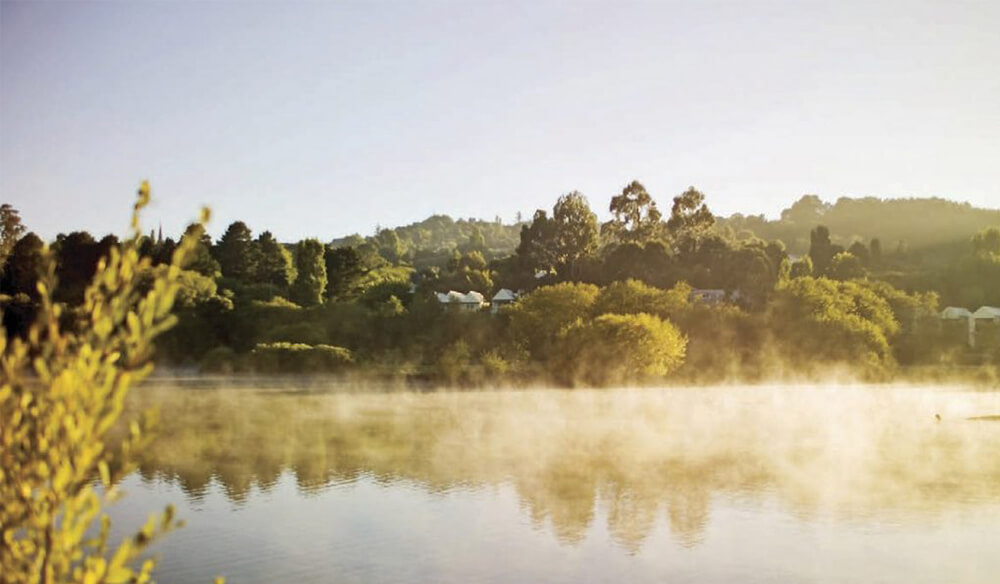
We can’t stop waxing lyrical about the picture-perfect Victorian town of Daylesford , a tree-change capital for Melburnians and the place to visit to de-stress and detach from city life, if only for a weekend.
A five-day wellness festival directed by singer Kate Ceberano and artist David Bromley, Live. Love. Life., will further cement this reputation when it debuts in November, joining a roster of year-round events including ChillOut Festival , Australia’s longest-running and biggest rural LGBTQI pride festival.
Of a weekend, you might find us browsing the boutiques of Daylesford’s main street, having a tipple at its bars or lounging at the lovely Lake House hotel , restaurant and spa.
#2 – Bellingen, New South Wales
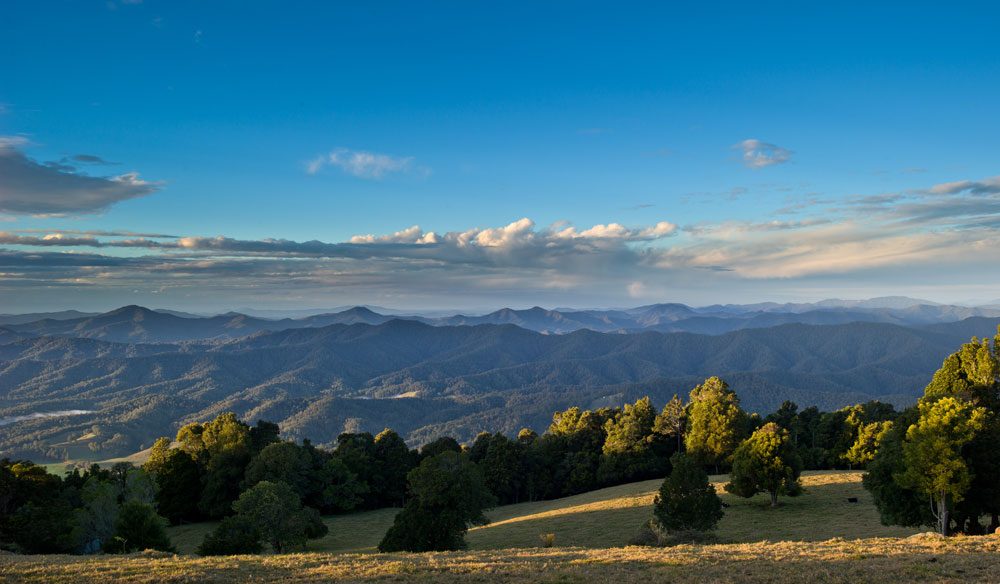
Eat: Indulge in an array of dining options that help set the town of Bellingen apart, with excellent spots like The Fennel Seed (Euro/Aussie mix) and Cedar Bar & Kitchen (Aussie with a healthy bent) tickling even the fussiest of tastebuds.
Drink: Housed in an old factory, the funky Bellingen Brewery Co . is a craft brewery and boutique bar that also exhibits art (it shares its space with Big Fig Arts) and hosts live music.
Play: Held in July, Bello Winter Music festival brings local, national and international performers, including alt-country troubadour Justin Townes Earle, to the town’s pubs, halls and streets. Stay in a bell tent in its camping village, or opt for a cosy B&B.
Explore: Head 30 minutes out of town to Dorrigo National Park and its treetop walk, which culminates in views of ancient rainforest. Twenty minutes in the other direction will take you to great surf beaches.
#3 – Esperance, Western Australia
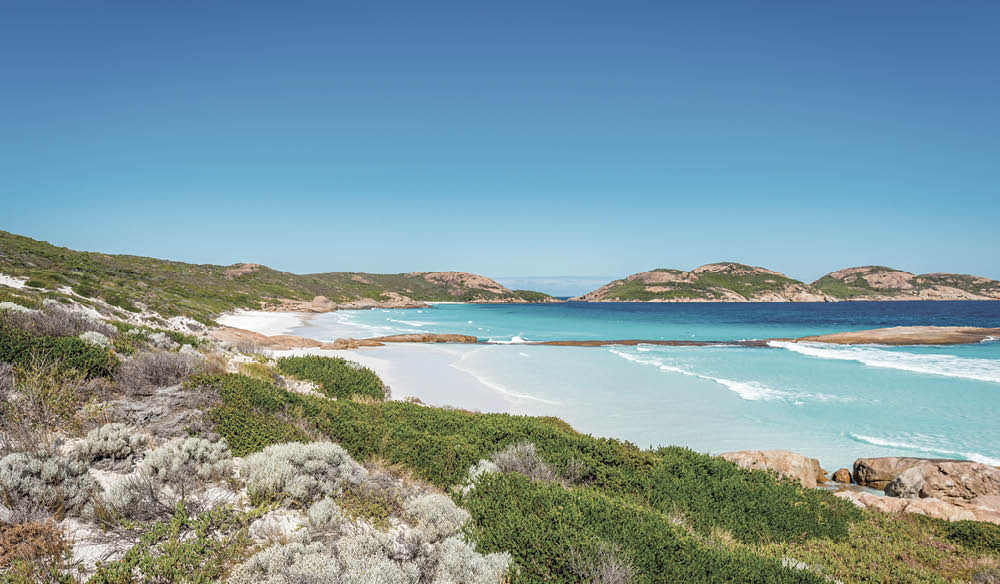
How to spend a perfect day in Western Australia’s south-coast gem of Esperance, according to the team behind its coolest caravan coffee van, Coffee Cat. You’ll find it stationed on the Tanker Jetty Headland. AM: Start the day with a Dukes single-origin long black or Bonsoy flat white from Coffee Cat, made more enjoyable by the great view of the Esperance Bay.
Wander along the foreshore to town central and pick up a warm croissant with Nutella from Downtown Espresso Bar . It’s now time to get in the Landcruiser and drive along Wylie Bay beach. Maybe the conditions will be good for a body surf? Continue driving the beach and arrive at Cape Le Grand National Park.
Climb Frenchman Peak for a spectacular view of the Bay of Isles’ many islands. PM: For Lunch there is no better place for a barbecue than Hellfire Bay, only 10 minutes’drive from the base of Frenchman Peak. If it’s a warm day in the afternoon we need another swim. Wharton Beach is the place: the wind is offshore when the classic Esperance sea breeze is in and that’s most summer afternoons. It’s a great spot to watch the sunset.
It’s back to Esperance for dinner and the Taylor St Quarters are pouring the cocktails. Scan the menu for seasonal treats: scallops, chargrilled octopus for us, or maybe the pork belly.
#4 – Huonville, Tasmania

Your launch pad for venturing into the Huon Valley and Tasmania’s south-west wilderness, Huonville is a mountain-framed pocket of creativity and enterprise.
That the area is one of Australia’s biggest apple-growing regions is reflected here, and the rustic Willie Smith’s Apple Shed – a cider house, cafe and museum – encapsulates it all.
Minutes from the town’s main drag on the Huon Highway, it hosts events throughout the year including live music, Sunday sessions and an artisan and produce market each Saturday. In July, you’ll find the Huon Valley Mid-Winter Festival here: a three-day pagan-inspired celebration of the region’s apple history.
Its central focus is Saturday night’s wassail, an ancient tradition still celebrated in the West Country of England.
#5 – Richmond, Tasmania
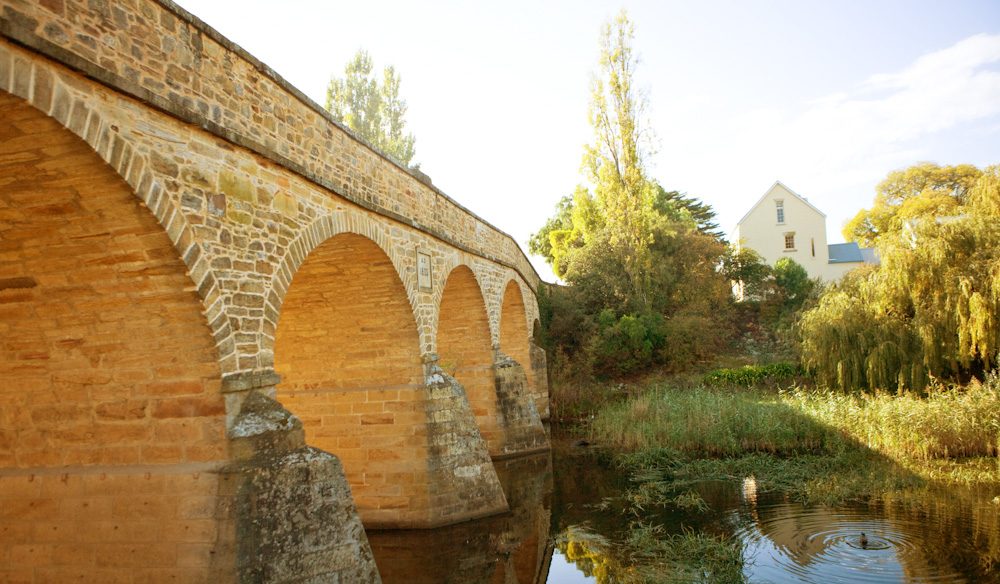
Thirty minutes’ drive north-east of Hobart, Richmond was one of the first towns on the Tasmanian tourist trail, and still one of its most charming. With many of its Georgian buildings intact, and the oft-photographed historic bridge – Australia’s oldest still in use – a star attraction, it’s the place to come to absorb the feel of an early Australian colonial village.
You’ll find plenty of modern-day interventions too, though, from cafes and restaurants to nearby wineries and their cellar doors. Stop in at Pooley Wines’ award-winning Butcher’s Hill Vineyard and Cellar Door to try some local cold-climate varietals (chardonnay, pinot noir, pinot grigio and riesling) and – on Sundays during winter (May to August) or either day of the weekend throughout the rest of the year – wood-fired pizza. Don’t pass up the freshly baked apple crumble dessert pizza.
The cellar door is based in the converted stables of stately Belmont House, which overlooks town and was built by convict labour in 1832 with the same sandstone that was used to build Richmond Bridge.
#6 – Warwick, Queensland
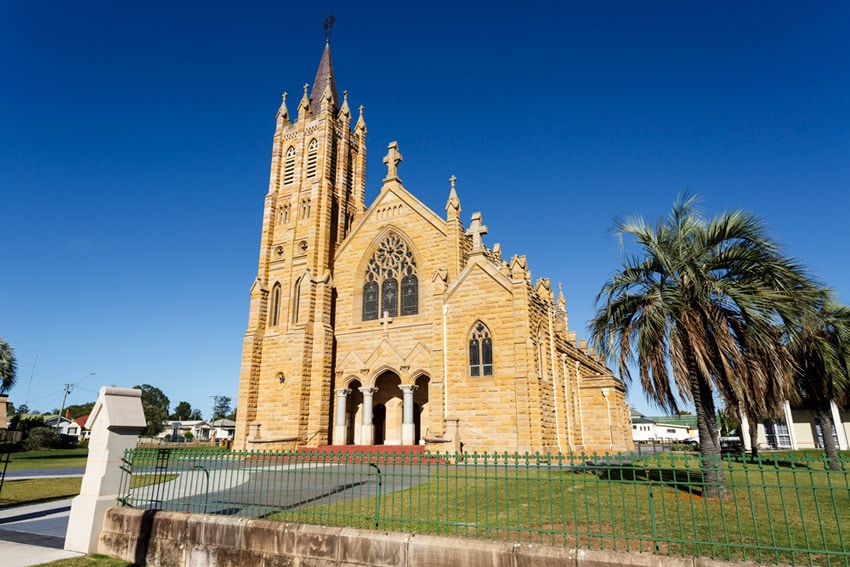
Warwick, set in a picturesque valley on Queensland’s Southern Downs, is replete with historic homesteads (including the first colonial settlement built over the Great Dividing Range) and sandstone buildings.
These days, “a lively social ambience has evolved with an abundance of coffee shops, restaurants, quality wine outlets and diverse shopping experiences,” says Bette Bonney of the Jumpers and Jazz in July festival, who advocates Warwick in winter for “those who enjoy crisp, sunny winter days, quirky colourful festivals and quality jazz.”
The festival, first staged in 2004, “has become a magnet for patrons seeking that unique travel experience,” she says; “a feast of jazz, art, quirky yarn bombing (every tree in the CBD is ‘dressed’ for the occasion!), intriguing workshops, amazing food and wine and the expansive RACQ Grand Automobile Display.
The huge Markets in the Park finale with free jazz on the last Sunday is a must-do closing event.”
#7 – Port Fairy, Victoria
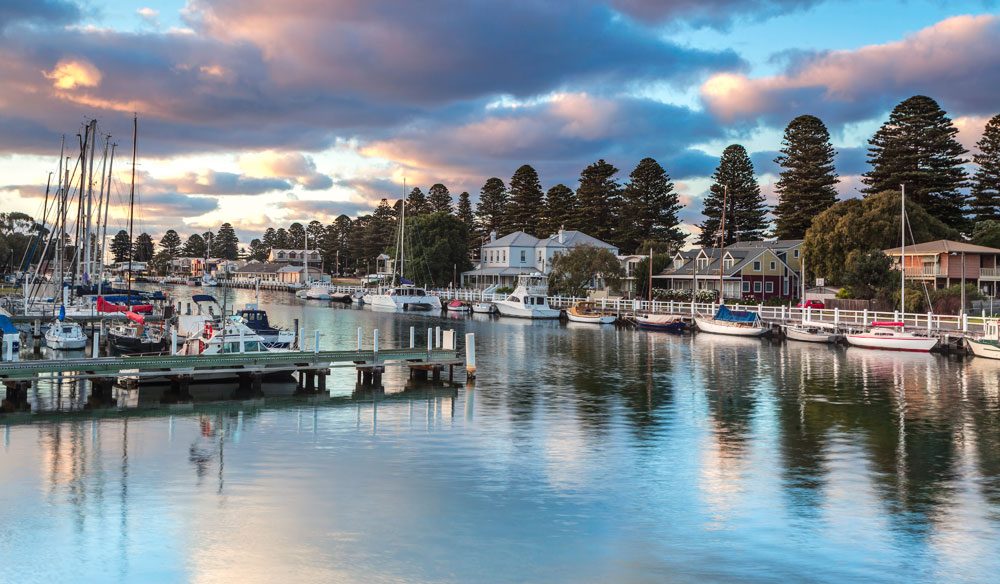
This jewel of the Great Ocean Road was voted the most liveable town in the world in 2012.
Its handsome seaside setting and heritage streetscape is complemented by a dining scene that’s growing in reputation (seek out Conlan’s Wine Store for hearty and sophisticated fare matched with regional wines, or Coffin Sally for pizza and cocktails), and its year-round calendar of festivals of every persuasion.
The famous Port Fairy Folk Festival is held each March, while cooler months call for Winter Weekends, a celebration of the town’s food, art, nature, history, culture and community, which takes place every second weekend in June and July.
Its can’t-miss event? The famous Dachshund Dash, of course.
#8 – Goolwa, South Australia
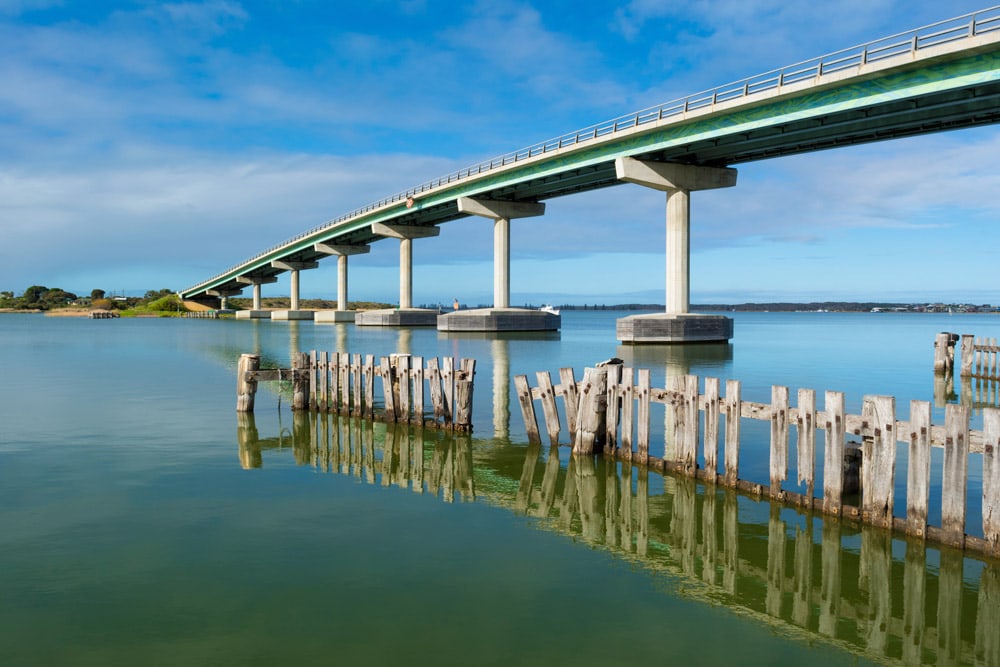
The historic town of Goolwa sits at the mouth of the Murray River and was once one of Australia’s major river ports.
Its 1852-built wharf connects visitors to this past; as does a ride on the Cockle Train, a steam train that runs along Australia’s oldest steel-railed railway, dating from 1887.
Dip into the Steam Exchange microbrewery – located in an old railway goods shed – for an ale, or enjoy a meal with river views at popular spot Hector’s on the Wharf.
Nowadays, visitors can also enjoy its gorgeous mix of picturesque Coorong sunsets, stunning white-beach-meets-azure-ocean environments, and intriguing indigineous history.
#9 – Castlemaine, Victoria
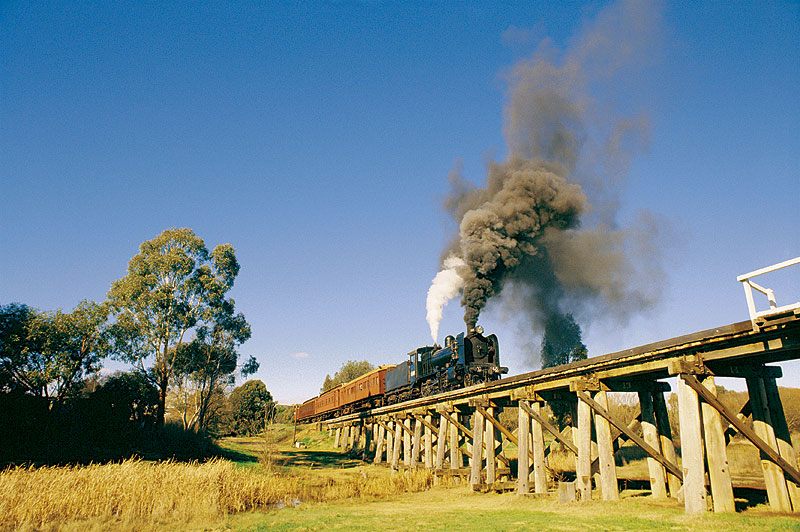
Here are three to check out:
The Public Inn: Castlemaine’s former fire station is now a one-hatted bistro and bar (pictured), where wine is dispensed from wall-mounted barrels and dishes are European-inspired (i.e. whiskey doughnuts or minute steak with mushy peas).
The Mill : What began life in 1875 as the Castlemaine Woollen Mill is now a hub for creative businesses: you’ll find everything here from small-batch ice-cream makers and a Viennese-style coffee shop to a vintage bike seller, Pilates classes and more.
Theatre Royal : One of Australia’s oldest continually operating theatres, this seasoned cultural hub today serves as a cinema screening independent films, plus a live music venue, bistro, and a bar that deals in espresso by day and wine by night.
#10 – Scone, New South Wales
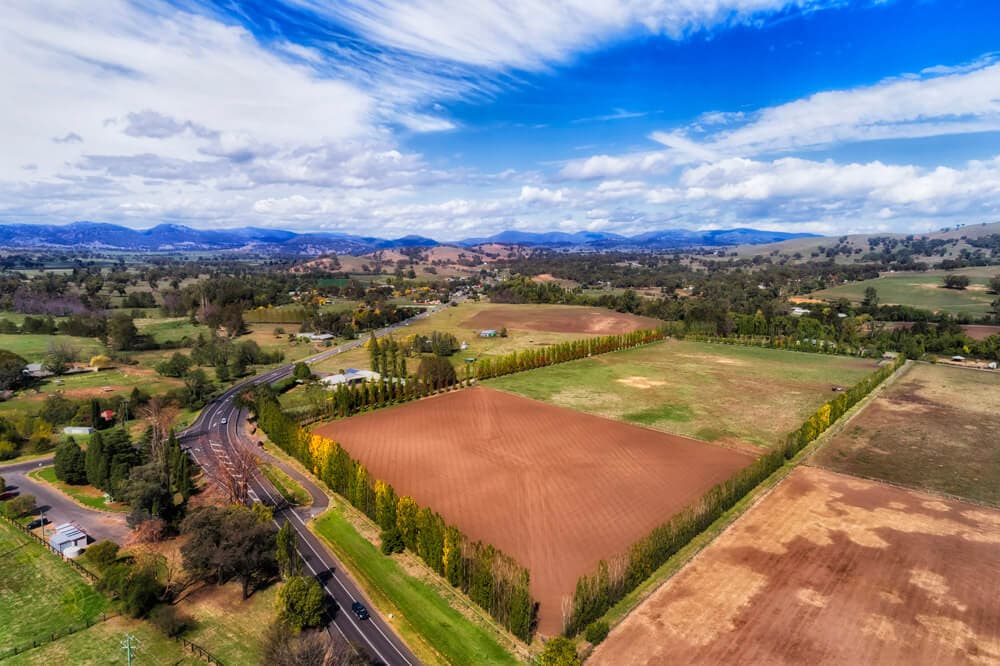
You’ll find the appealingly-named Scone in the Upper Hunter region of New South Wales, a rural hub known as the Horse Capital of Australia (thanks to its reputation as the second-largest horse breeding area in the world after Kentucky, USA).
The Scone Horse Festival , which takes place each May, celebrates all things equine with rodeos, street parades and stock sales.
To immerse yourself fully in country life, stay at the working property Belltrees Estate, a 30-minute drive from town towards Barrington Tops National Park and home to the White family since 1831.
Accommodation options include cottages and a 4WD-access-only mountain retreat, all centred around the famous grand homestead that dates from 1908.
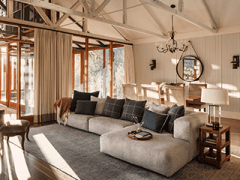
Spend quality time with your tribe nestled in nature
These one, two and three-bedroom villas are awaiting your tribe’s arrival, set amid the epic Greater Blue Mountains.
- Separate lounge & dining
- Private heated pool
- Majestic valley vistas

Need a holiday? Stop dreaming & start planning!
Book your AAT Kings holiday today & save up to 20%* on selected 2023 tours. This is your chance to roam beyond the ordinary. *T&C’s apply.
- Hassle-free travel
- The best inclusions
- Authentic experiences
- 100+ years of expertise

Relax & connect with loved ones in these two- & three-bedroom villas, set amidst a 7,000 acre wilderness retreat.
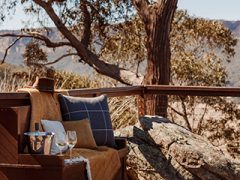
Your Country Escape Awaits
Immerse yourself in the majesty of the Greater Blue Mountains and save 10% when staying two nights or longer. *From complimentary inclusions
- Gourmet meals daily
- Selected wines & beers
- 2 on-site activities daily*

It’s time for an adventure
Experience some of NSW’s best scenery, museums, and regional producers in our 1960s sleeping train.
- 5 days, 4 nights;
- boutique group numbers;
- immersive excursions.
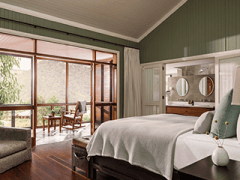
Your heavenly hideaway nestled in nature
Relax & connect with loved ones in these one, two- & three-bedroom villas, set amidst a 7,000 acre wilderness retreat.

Handa Opera on Sydney Harbour: Madama Butterfly
Take your seat under the stars for Sydney’s best night out!
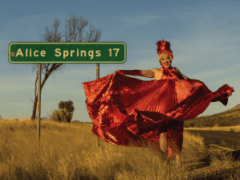
Book a 4-day fabALICE festival pass for only $290!
When booking a 4-day fabALICE festival pass you receive access to five fabulous events for only $290 – retail value of $350. Enjoy priority seating and access, and experience the best events!

Northern Territory on SALE!
Seek something different this End Of Financial Year with these incredible Northern Territory travel deals on sale now!
- Discover unique experiences
- Join a guided tour
- Seek different in the NT

“A modern Butterfly soars as art and spectacle combine on Sydney Harbour” (Limelight).
- Fireworks every night
- Pop up bars and eateries
- Picture perfect backdrop of the Sydney Opera House
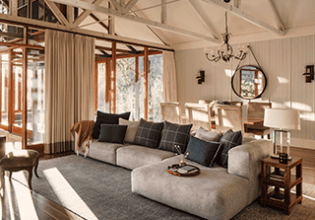
11 to 20 – Coastal Haunts
#11 – byron bay, new south wales.

#12 – Apollo Bay, Victoria
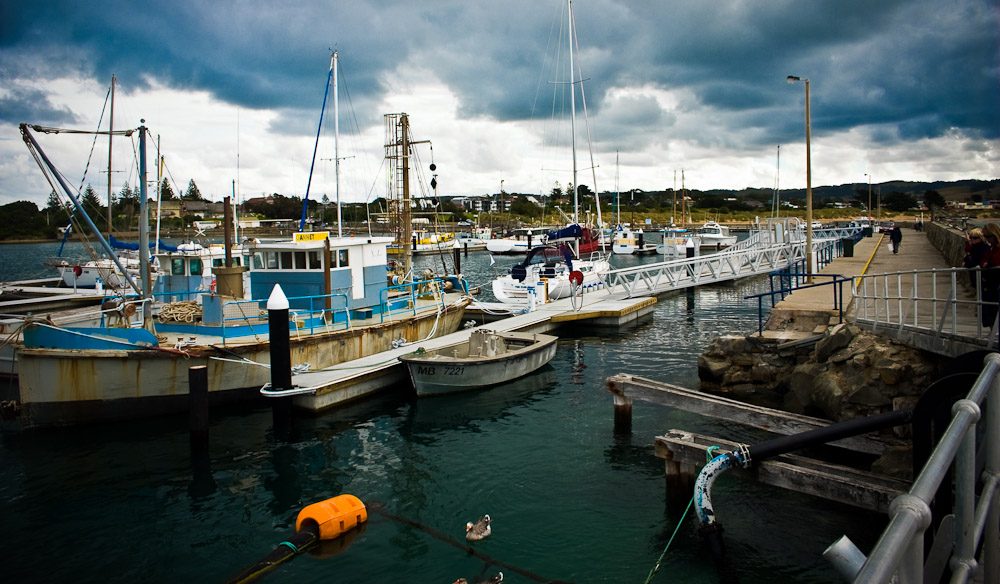
#13 – Mooloolaba, Queensland
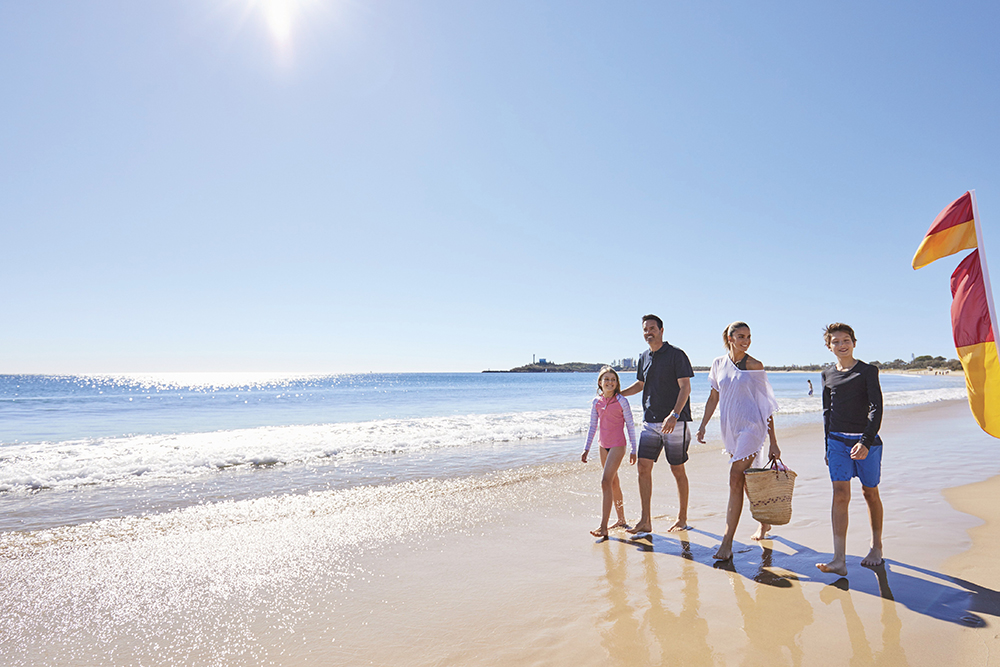
#14 – Cabarita Beach, New South Wales
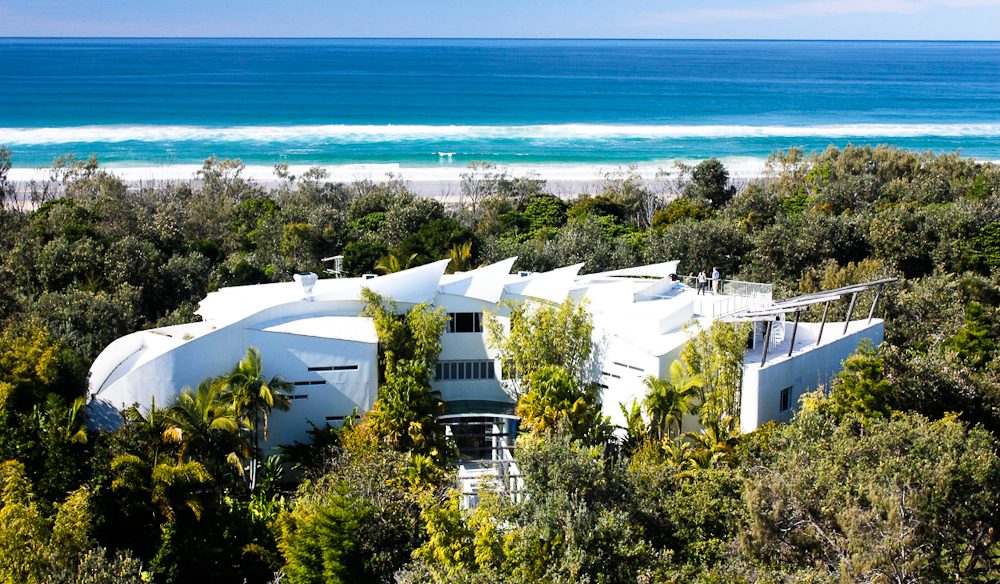
#15 – Busselton, Western Australia

#16 – Tumby Bay, South Australia
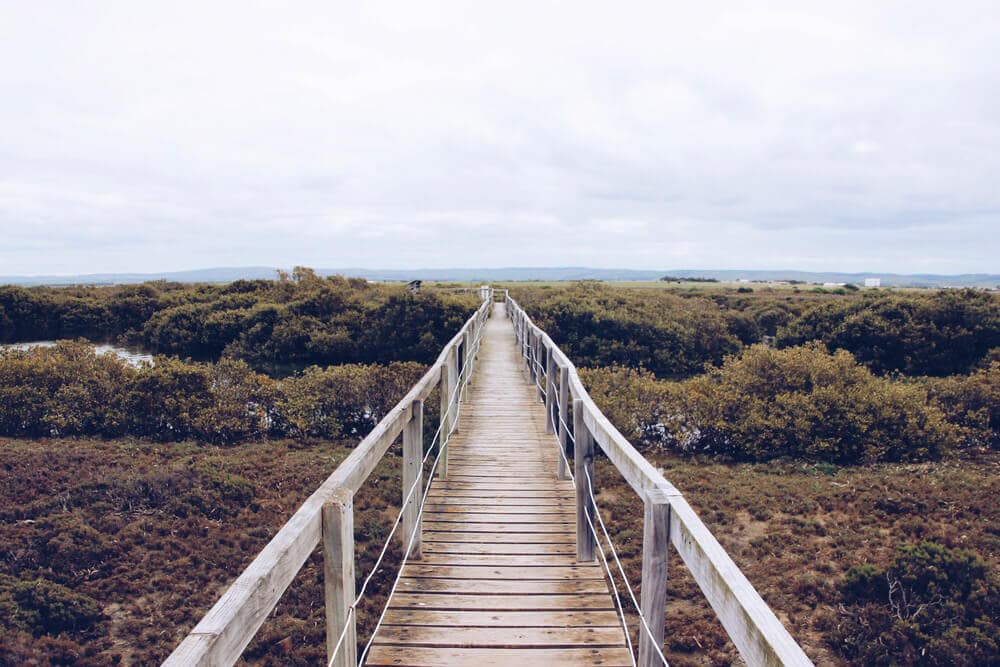
#17 – Marcoola, Queensland
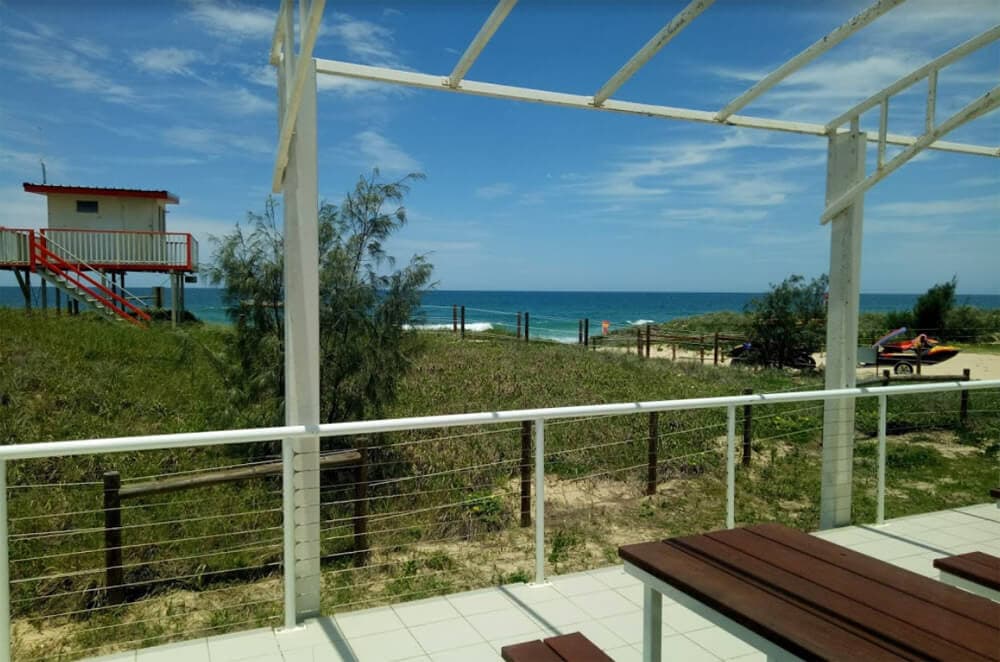
#18 – Mount Martha, Victoria
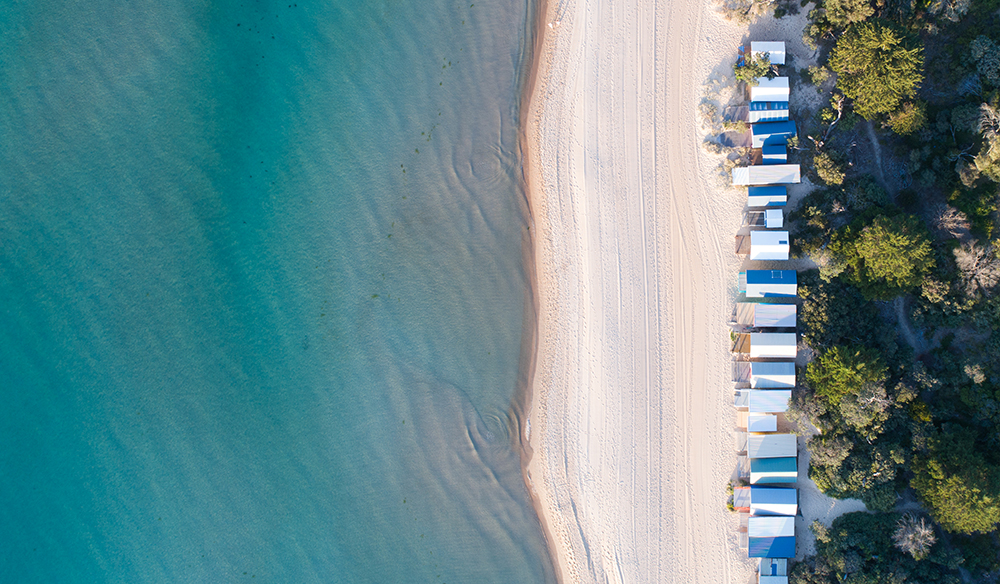
#19 – Eden, New South Wales
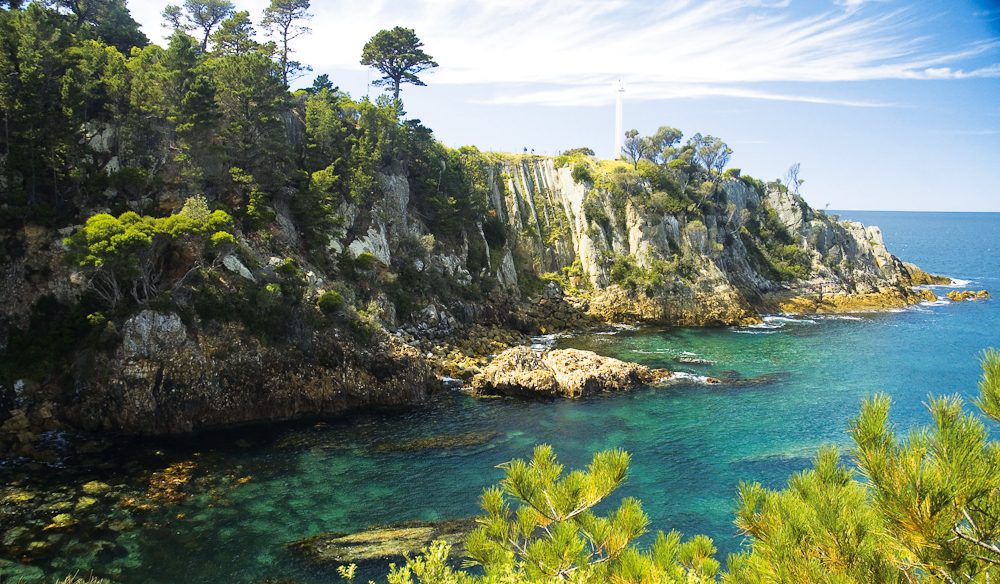
#20 – Penguin, Tasmania
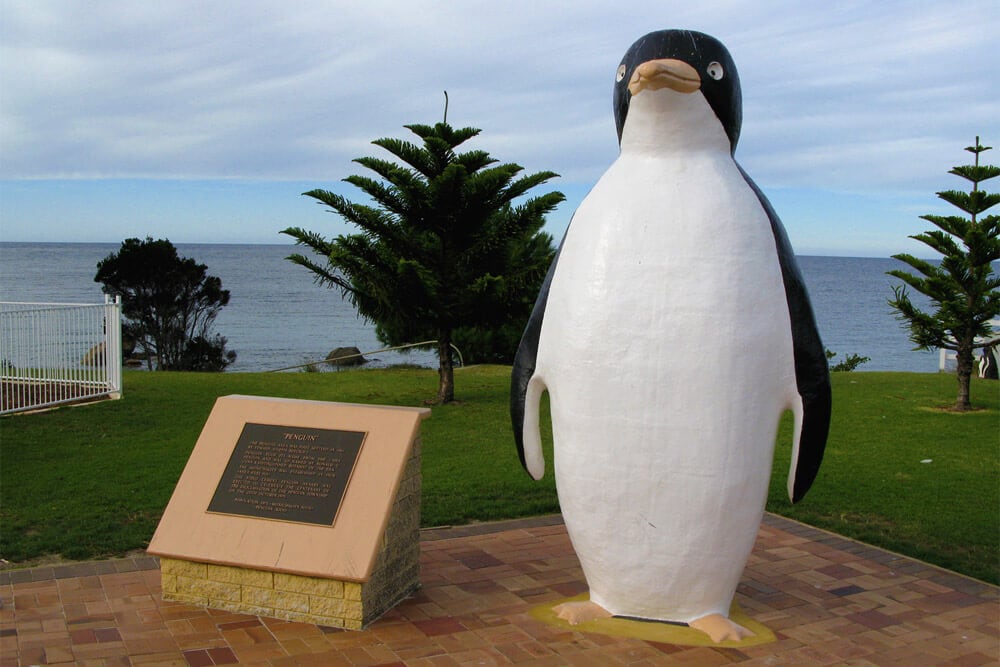
Park, Stay & Play at Hyatt Regency Sydney
Park, Stay, Play package includes a night at the 5 Star, centrally located hotel in a modern, and luxe room with breakfast, a cocktail per person plus complimentary parking and 20% off at bars and restaurants. Save $75.
- Million-dollar waterfront location
- CBD parking
- Breakfast and cocktail per person and discounts at bars and restaurants
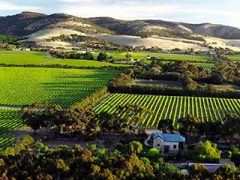
Old Chaff Mill: stay 3 nights & save 30%
Pamper yourself at a stunningly restored former Chaff Mill and save 30% -living history amongst organic shiraz vineyards.
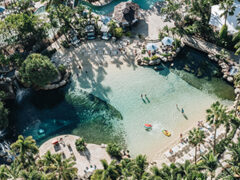
A luxury escape to JW Marriott Gold Coast
Experience ultimate luxury with two nights’ accommodation, plus breakfast for two daily, two welcome beverages on arrival, self-parking and $50 dining credit daily.
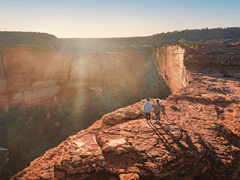
Save up to $600 per couple* On AAT Kings Outback Safari
World Heritage Sites like Uluru-Kata Tjuta National Park are just the entrée to this deep dive into the Northern Territory. Explore ancient structures and culture on this tour, and eat a lot of food along the way. Image credit: Tourism NT

21 to 30 – Outback Odysseys
#21 – the kimberley, western australia.
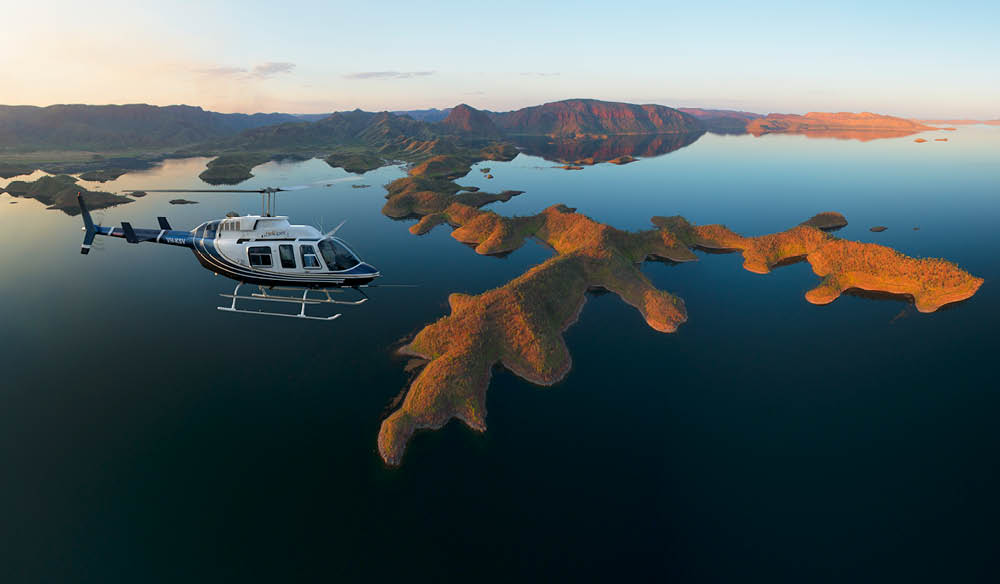
#22 – Uluru, Northern Territory
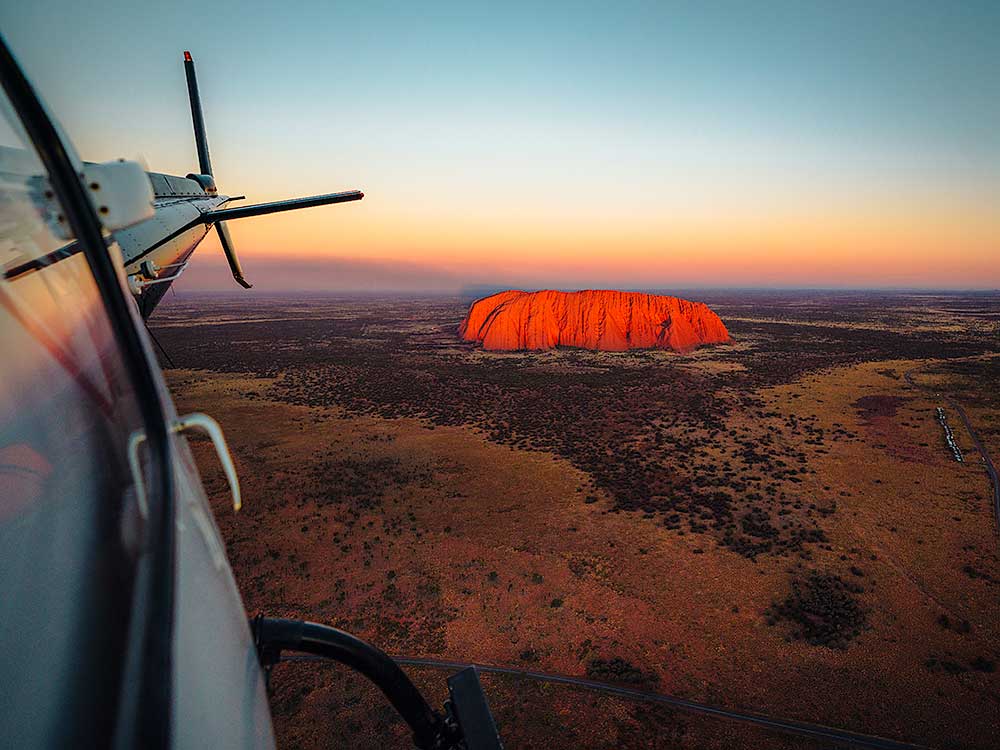
#23 – Arnhem Land, Northern Territory
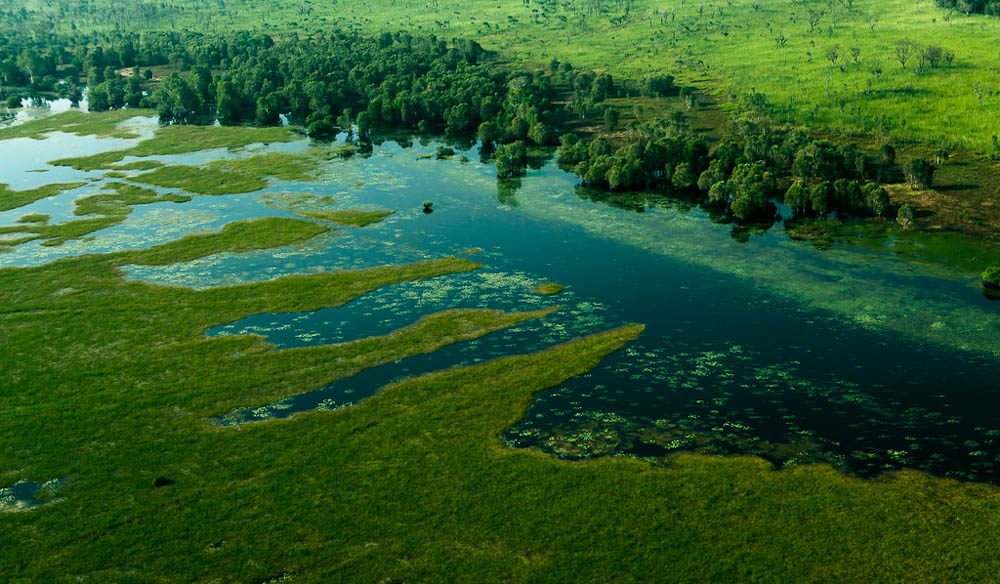
#24 – Wilpena Pound, South Australia
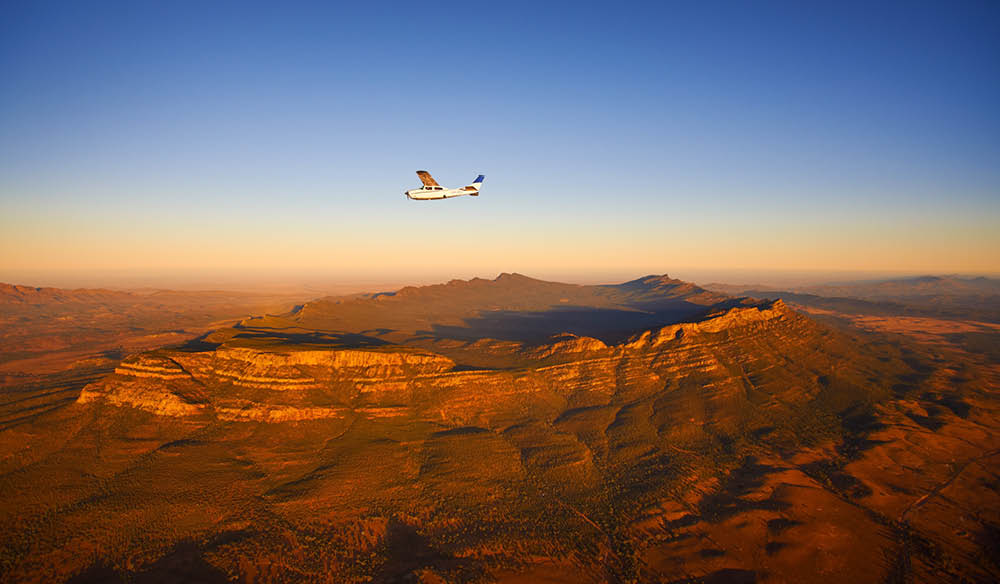
#25 – Carnarvon Gorge, Queensland
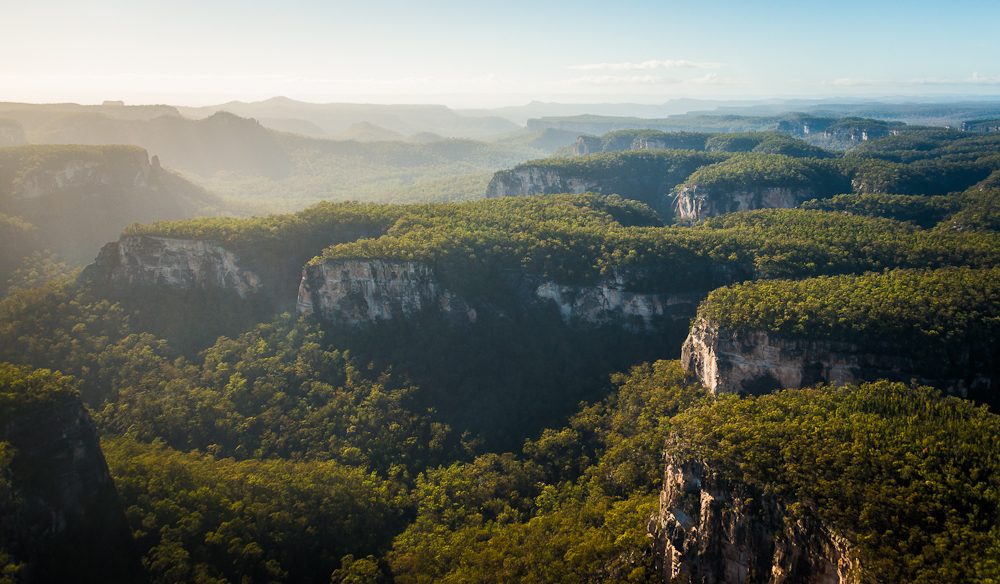
#26 – King’s Canyon, Northern Territory
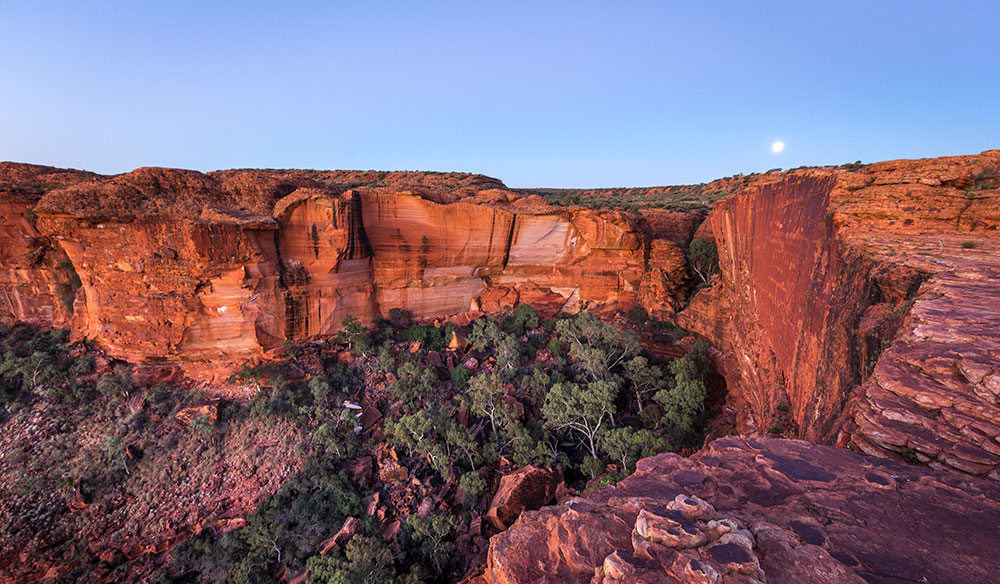
#27 – Nitmiluk (Katherine) Gorge, Northern Territory
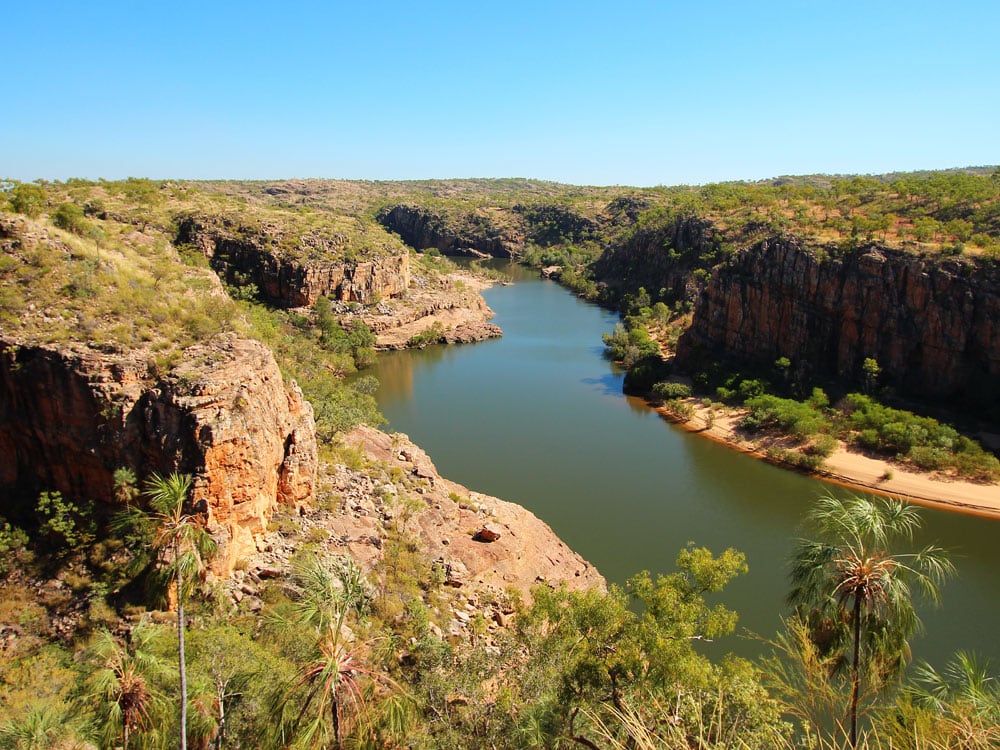
#28 – The Nullabor, South Australia

#29 – Longreach and Winton, Queensland
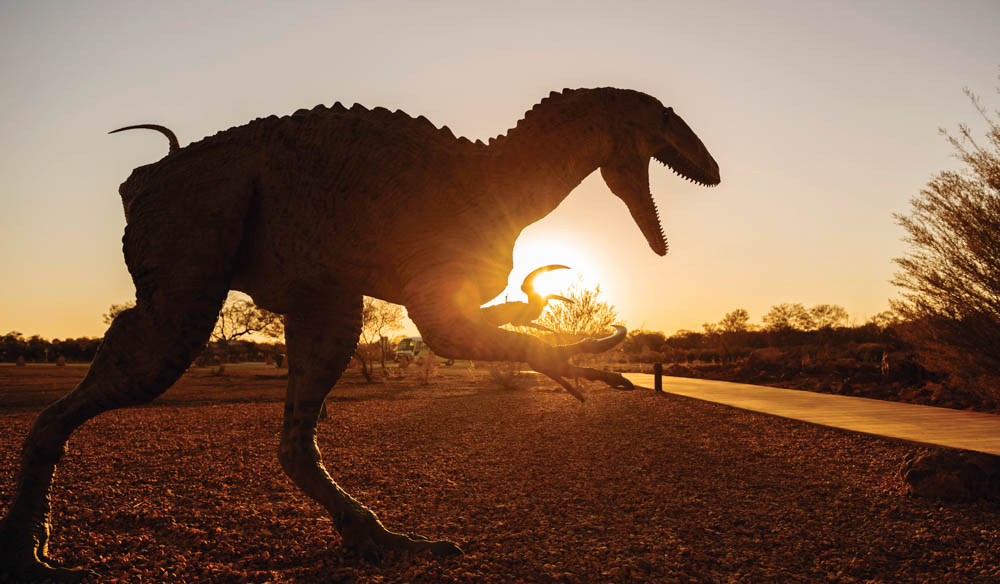
#30 – William Creek, South Australia
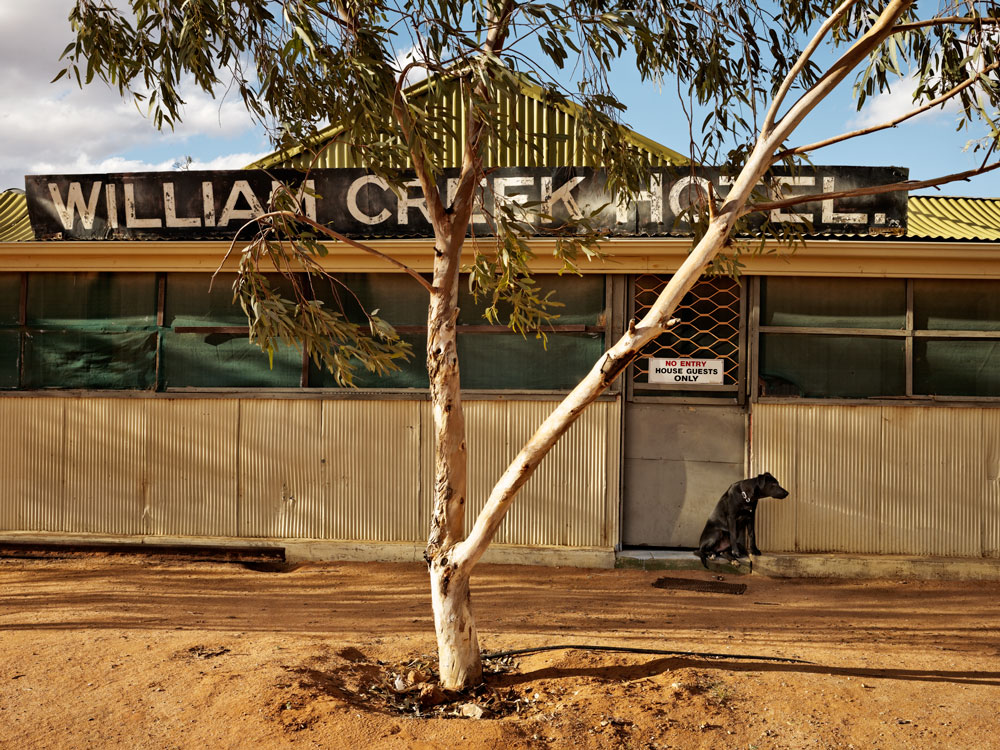
Exclusive offer – stay 3 nights and save 30%
Pamper yourself at a stunningly restored former Chaff Mill and save 30% -living history amongst organic shiraz vineyards. DATES: March 13 – July 31 2023
- 3 weeknights or more
- Cont. breakfast & wine
- Promocode: “Austraveller30”
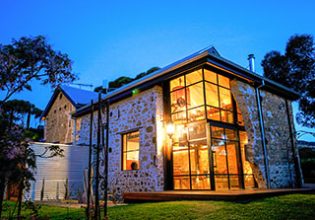
31 to 40 – Foodie Favourites
#31 – mudgee, new south wales.
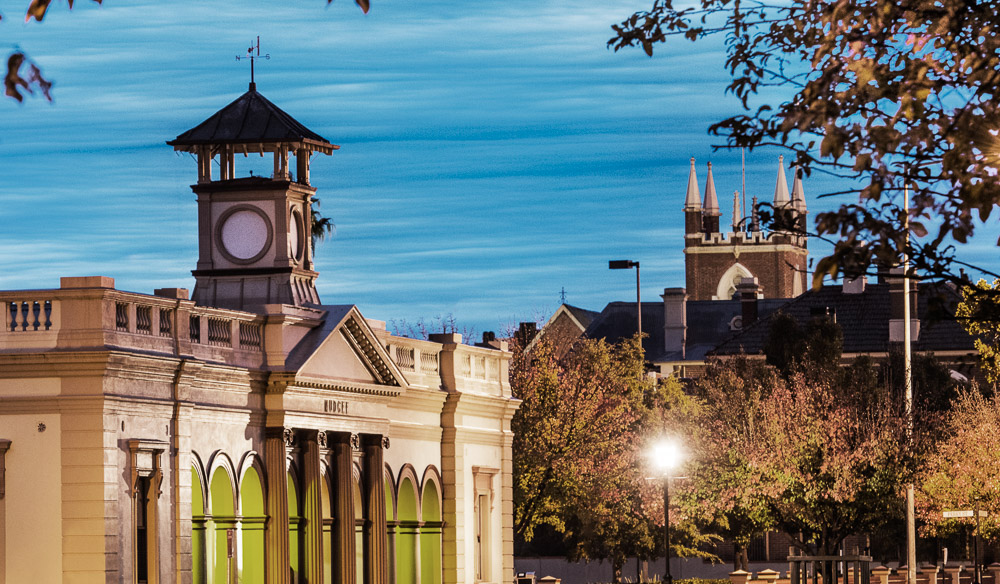
#32 – Margaret River, Western Australia

#33 – King Island, Tasmania
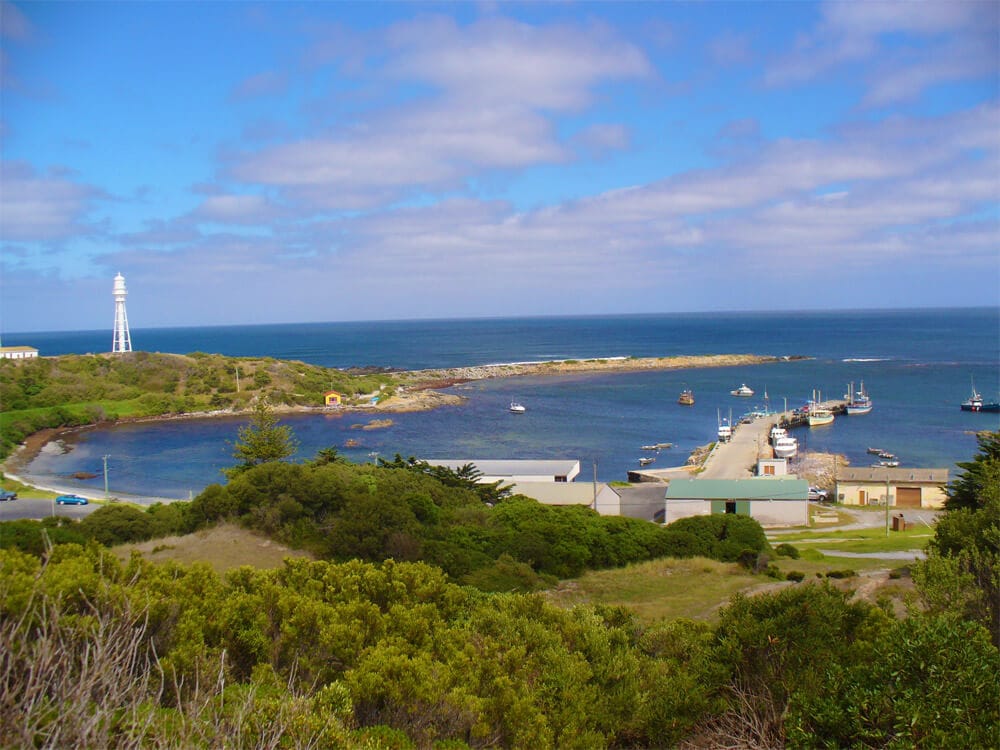
#34 – Merricks, Victoria
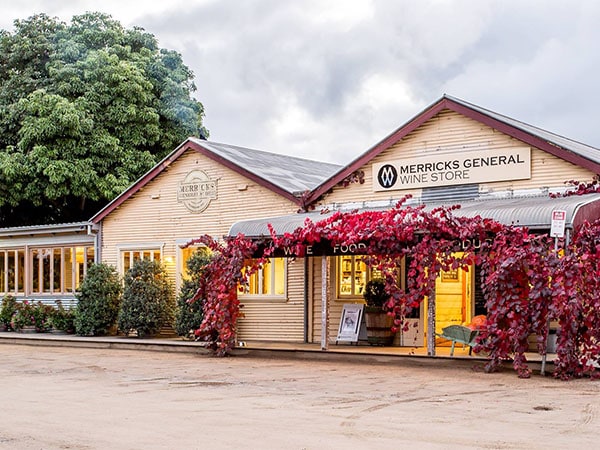
#35 – Fleurieu Peninsula, South Australia
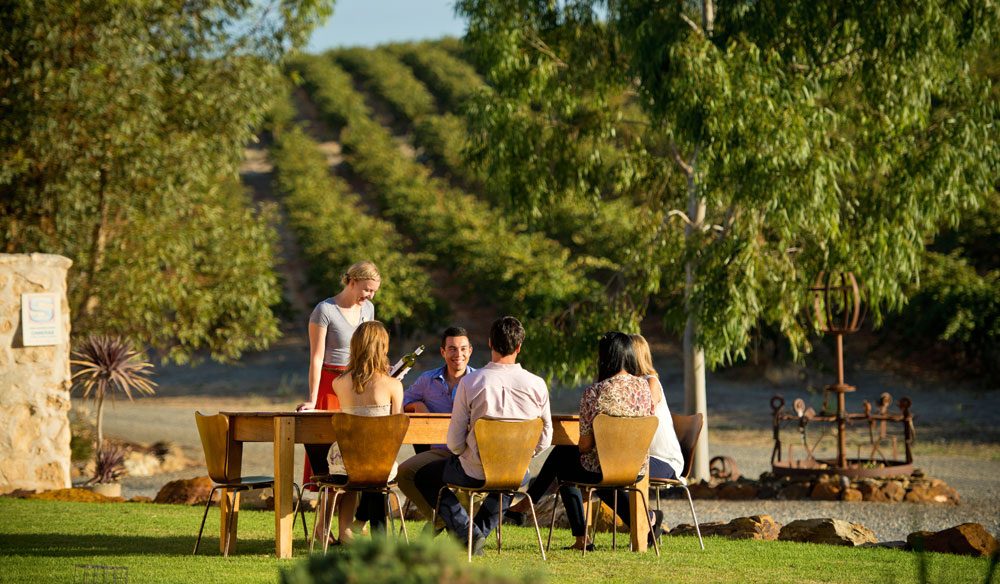
#36 – Stanthorpe, Queensland

#37 – Swan Valley, Western Australia
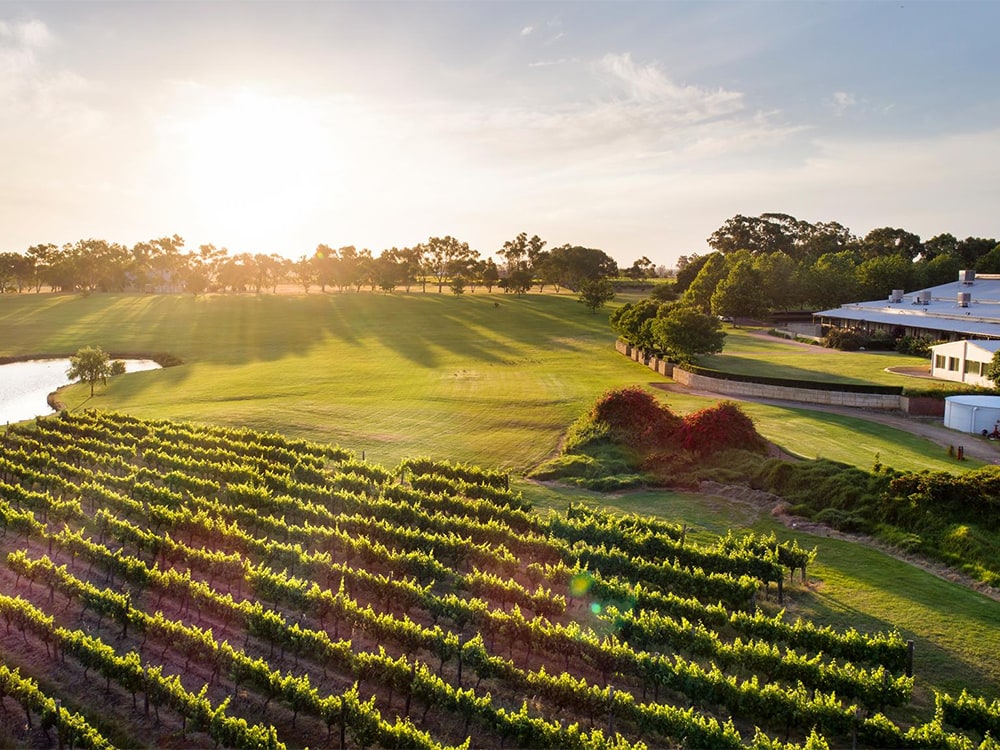
- It’s ridiculously handy to Perth; with gorgeous vistas of rolling hills and endless grape vines stretching on for as far as the eye can see, the Swan Valley is only around 30 minutes’ drive from Perth, making it a perfect getaway.
- It is WA’s oldest wine region, having celebrated the 180th anniversary of the planting of the first vines in 2014; the first commercial vintage was released in 1834.
- There are more than 40 wineries scattered throughout the valley, including names like Sandalford, Houghtons and Mandoon Estate.
- It is Australia’s first and only Humane Food Region, with a commitment to humane farming practices and the welfare of animals.
- The 32-kilometre Food & Wine Trail is a self-guided tour that takes in 150 restaurants, wineries, breweries, cafes, art galleries and distilleries.
#38 – Coffin Bay, South Australia
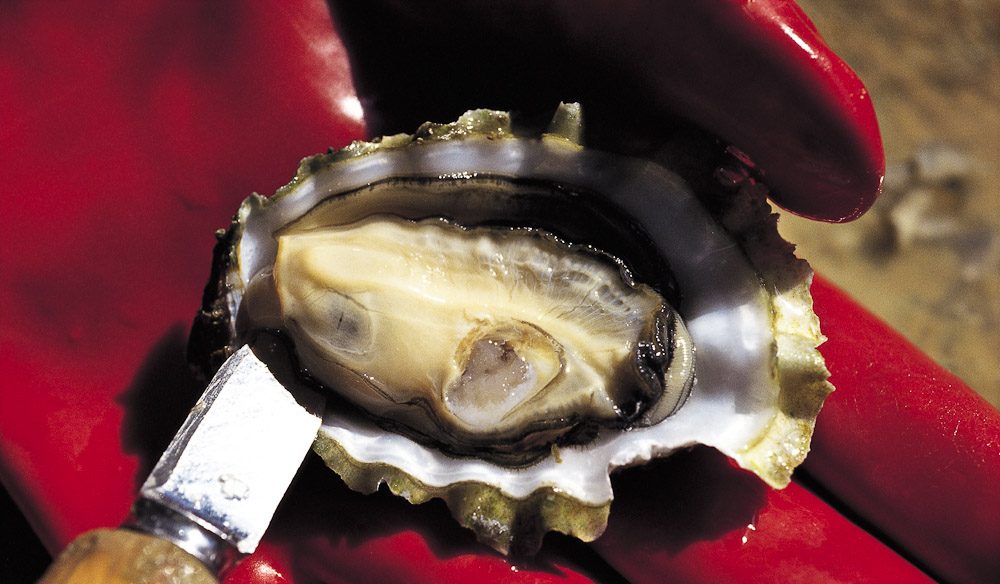
#39 – Bangalow, New South Wales
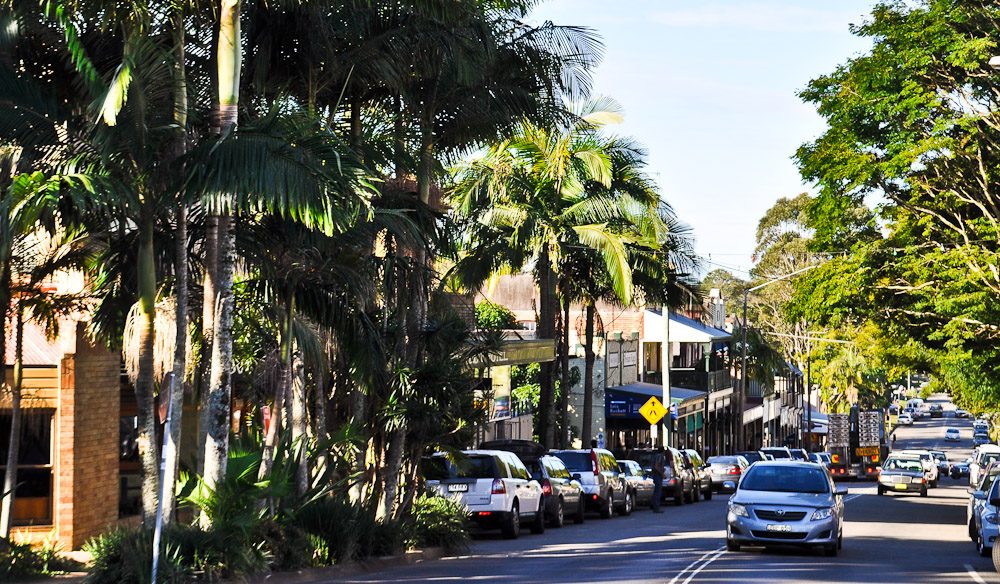

#40 – Kyneton, Victoria
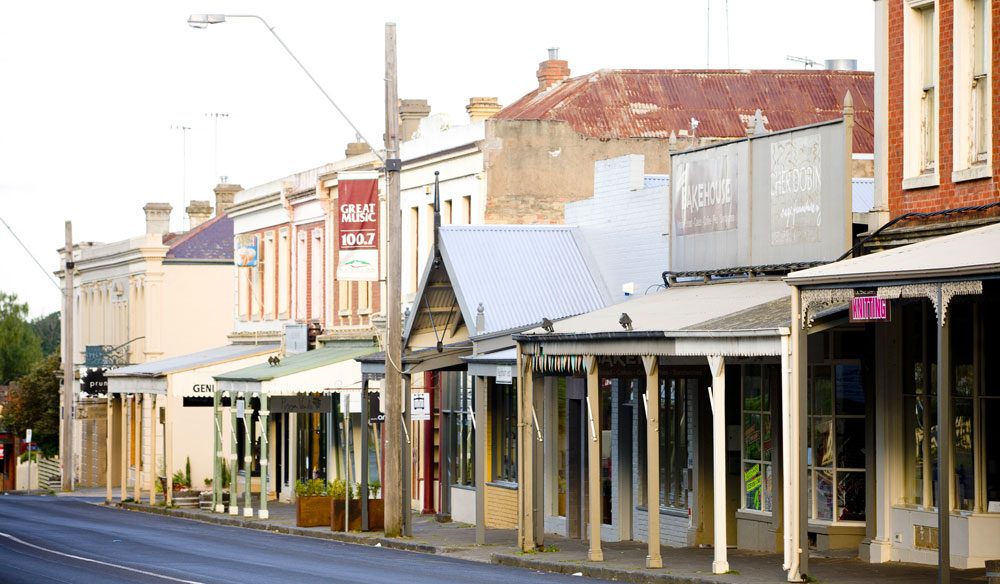
Save up to $800 per couple* On AAT Kings Outback Adventure
See the best of South Australia and the Northern Territory with the experts. This epic tour traverses record-breaking canyons and gorges, national parks and World Heritage Sites. Be inspired by nature writ large.
- Save up to $800 per couple*
- Promo code: NTSALE
- Sale: 27 Feb – 21 Jun, 2023
- Travel: 1 Apr, 2023 – Mar 31, 2024
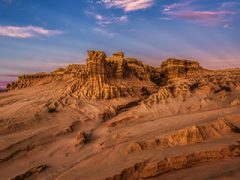
Railway adventures at The New South Wales Outback
A great Australian rail and road journey like no other, in the wonderful, timeless, colourful NSW Outback.
- 30 September – 08 October
- Expertly escorted
- Incredible scenery
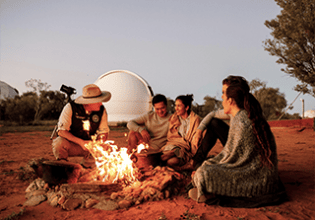
41 to 50 – Alternative Capitals
#41 – bendigo, victoria.
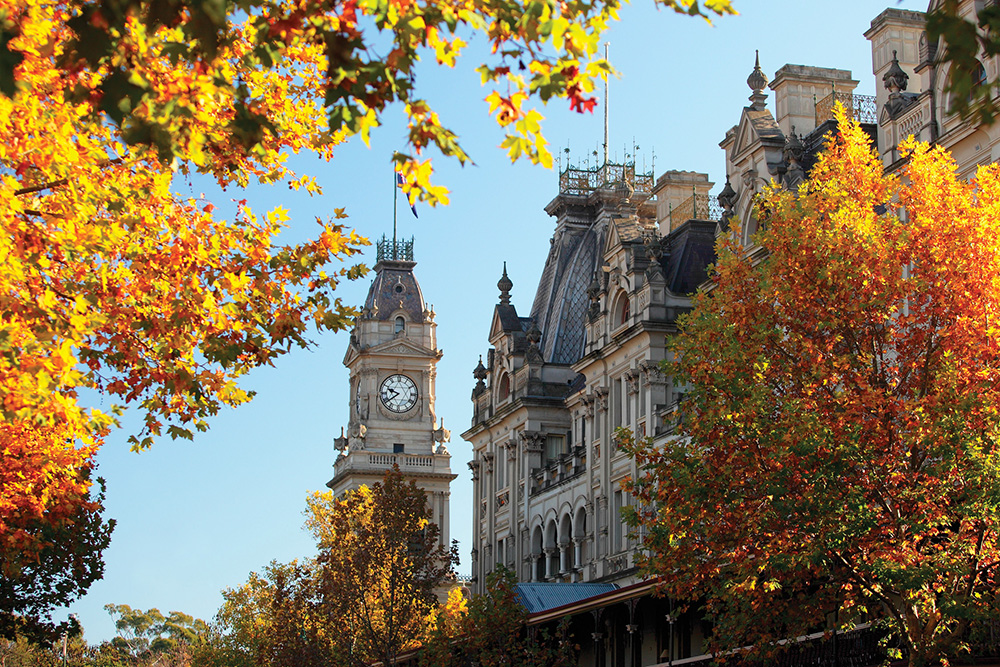
#42 – Fremantle, Western Australia
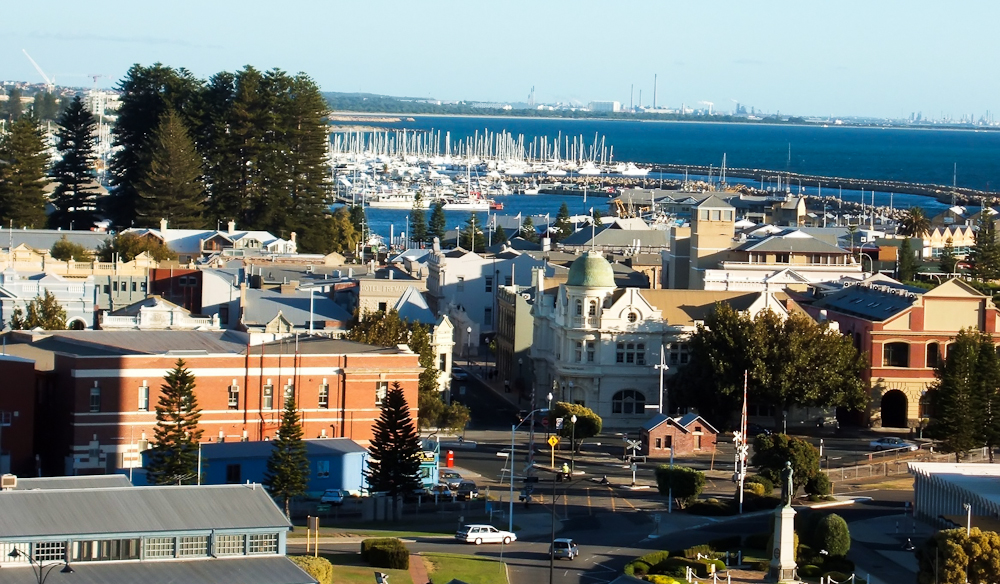
#43 – Bundaberg, Queensland
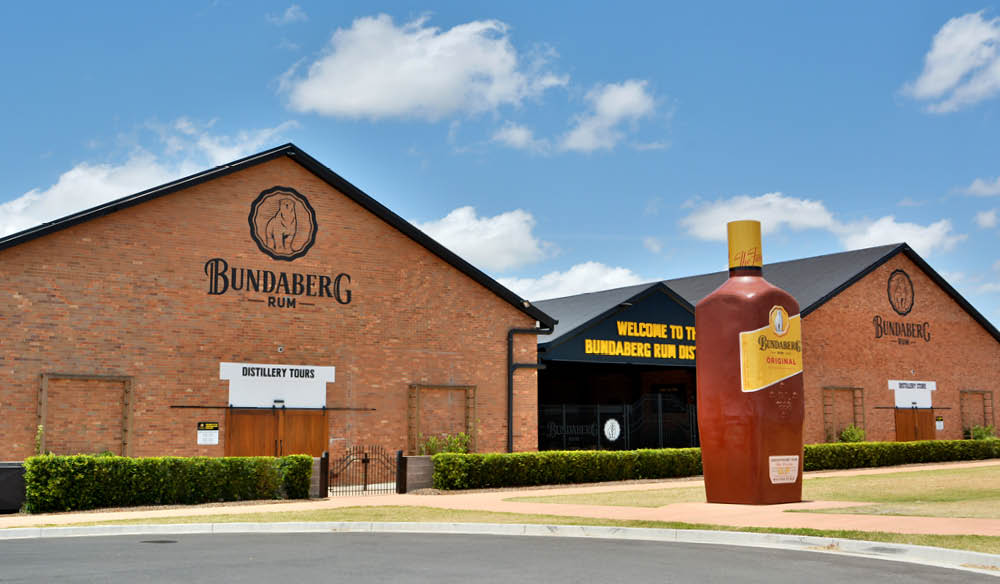
#44 – Newcastle, New South Wales

#45 – Townsville, Queensland

#46 – Ballarat, Victoria
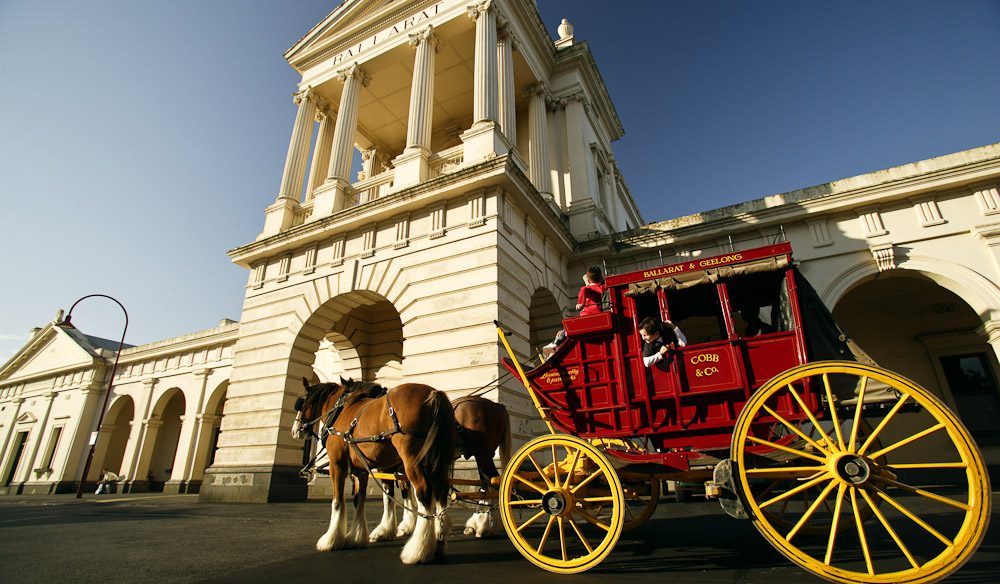
#47 – Alice Springs, Northern Territory
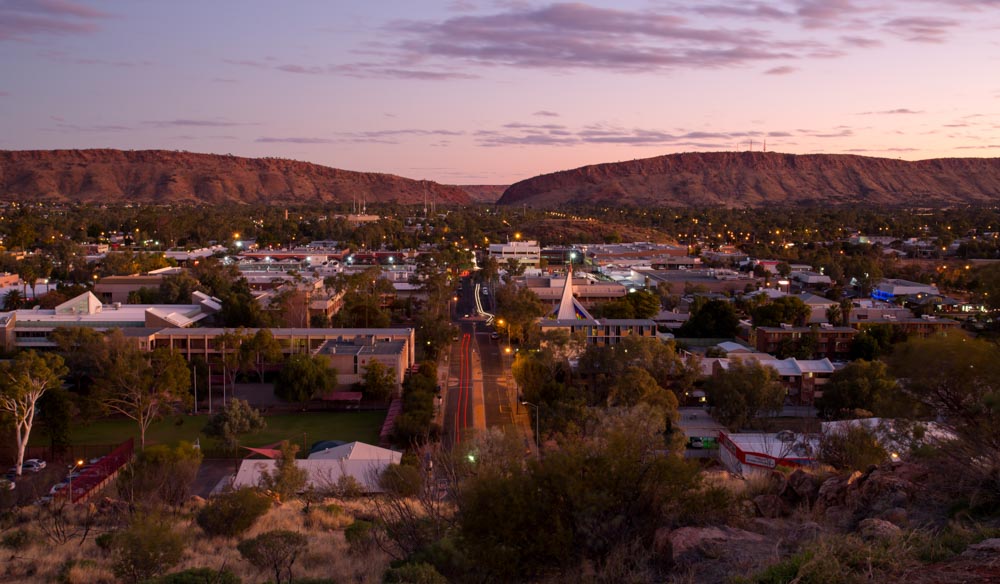
#48 – Launceston, Tasmania
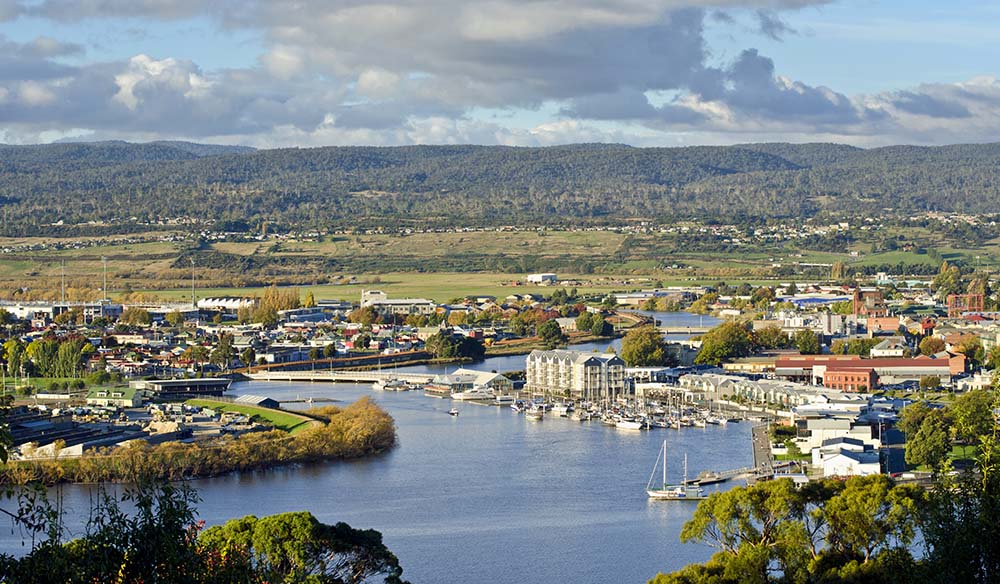
#49 – Mt Gambier, South Australia
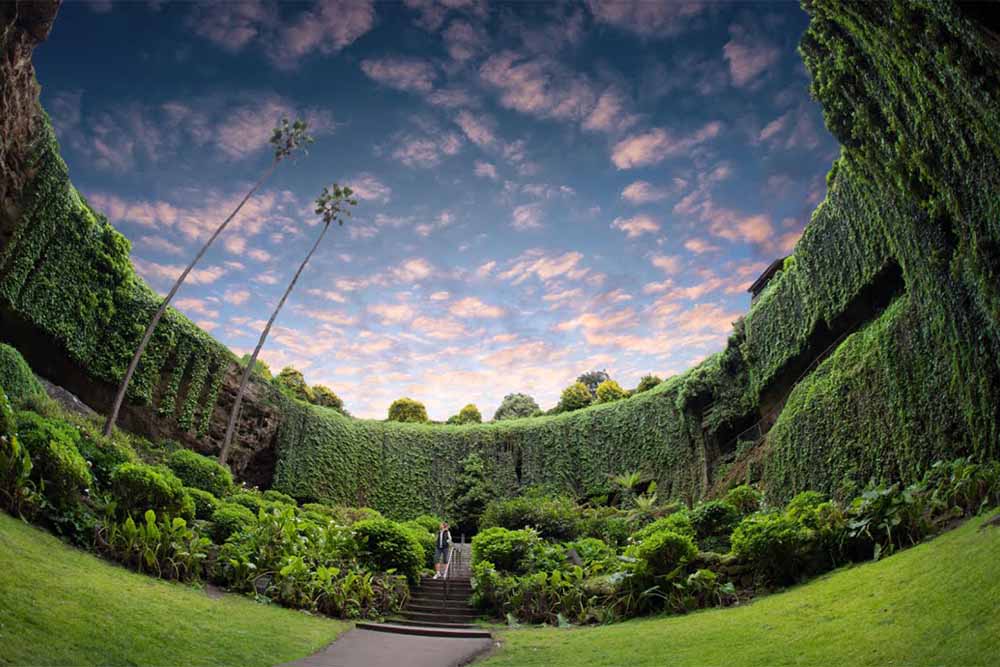
#50 – Armidale, New South Wales
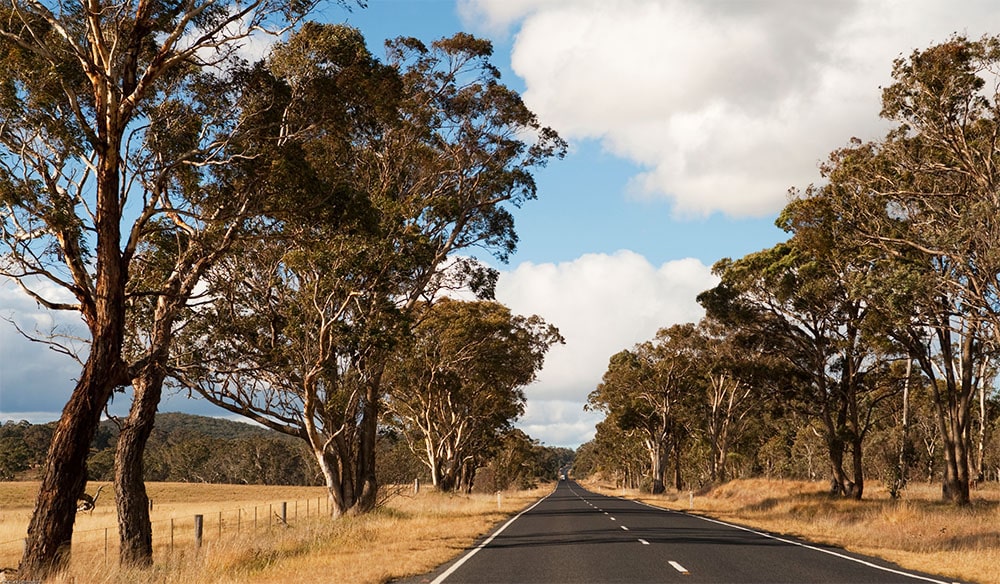
51 to 60 – Neighbourhoods
#51 – chippendale, new south wales.
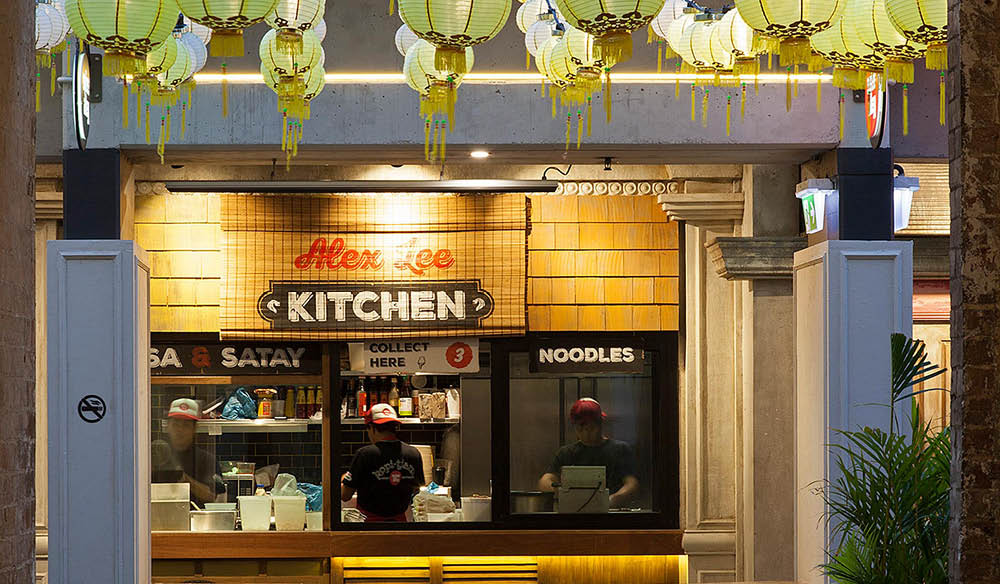
#52 – Carlton, Victoria
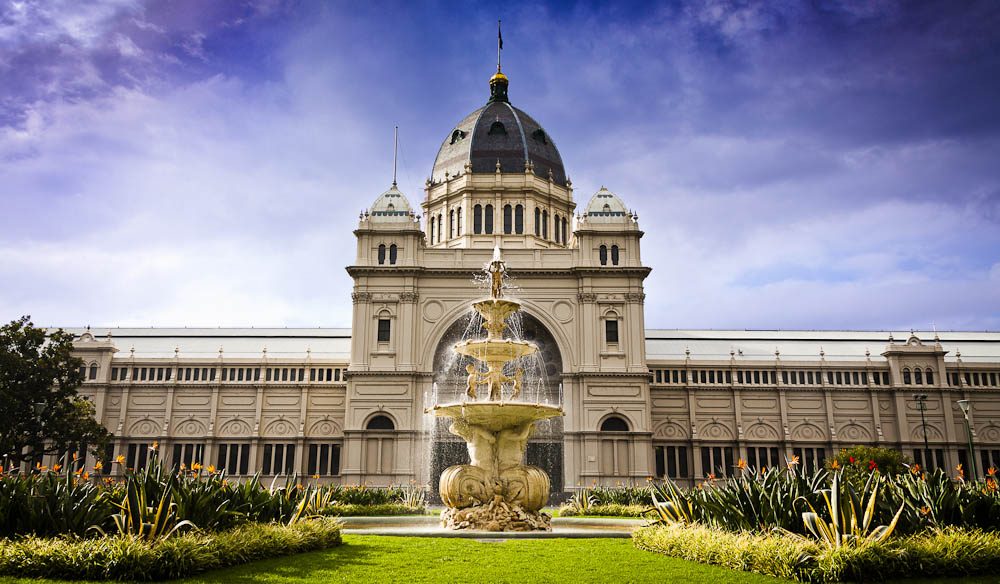
#53 – Neighbourhood – Prahran, Victoria
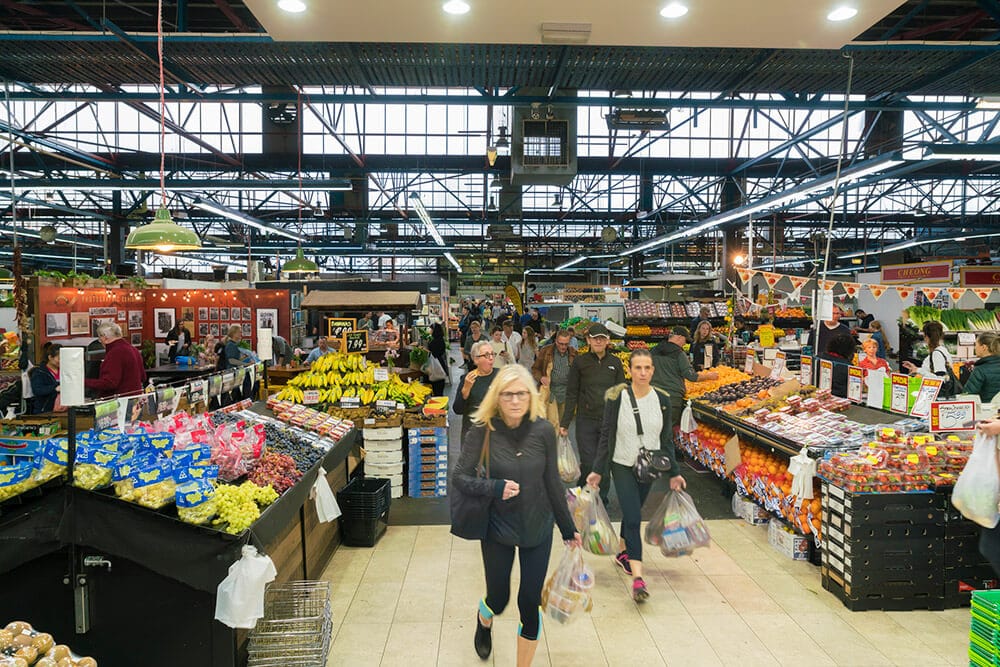
#54 – Braddon, Canberra
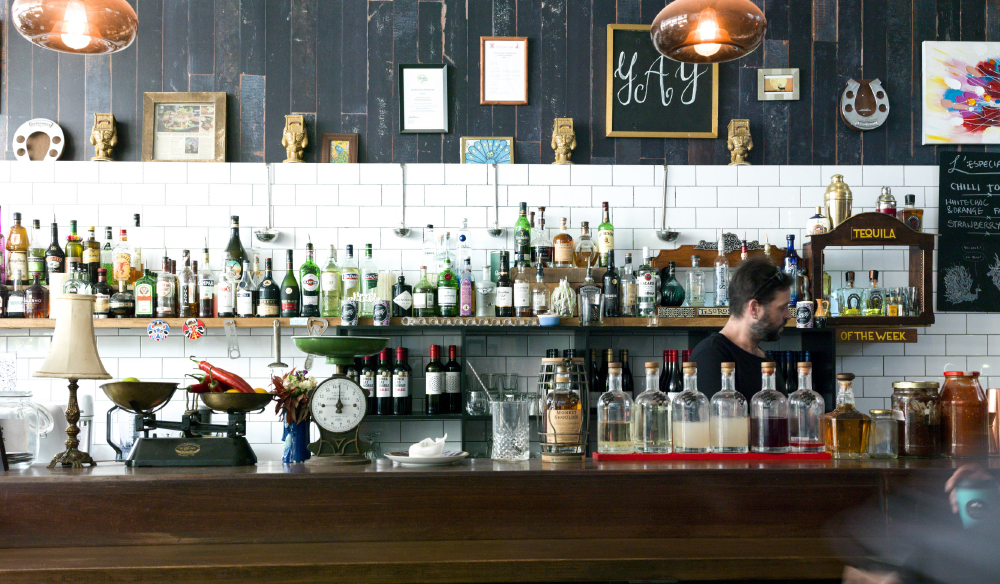
#55 – Surry Hills, New South Wales
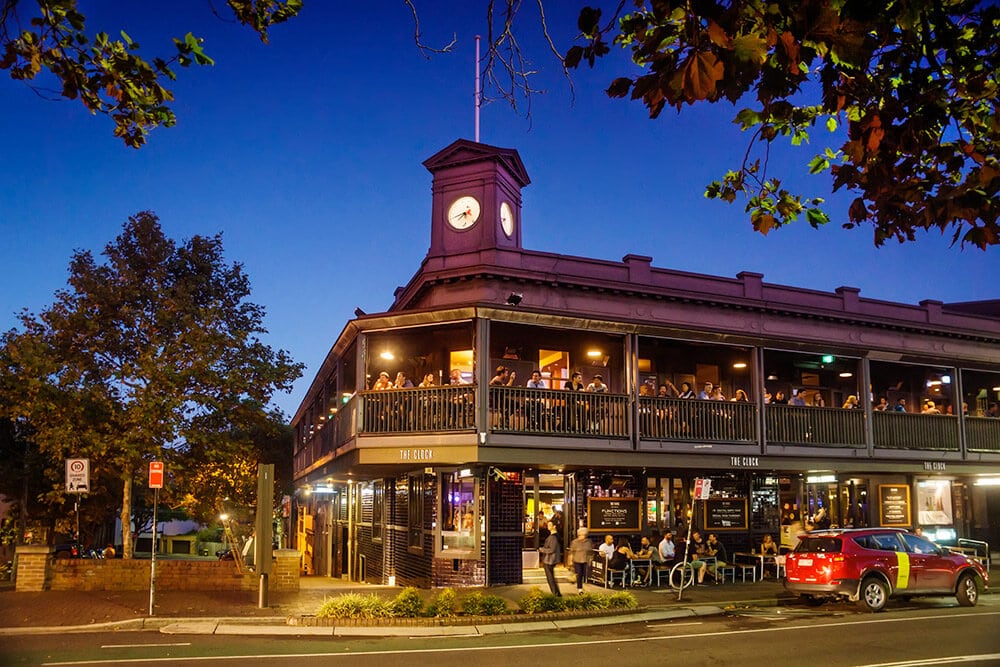
#56 – Leederville, Western Australia
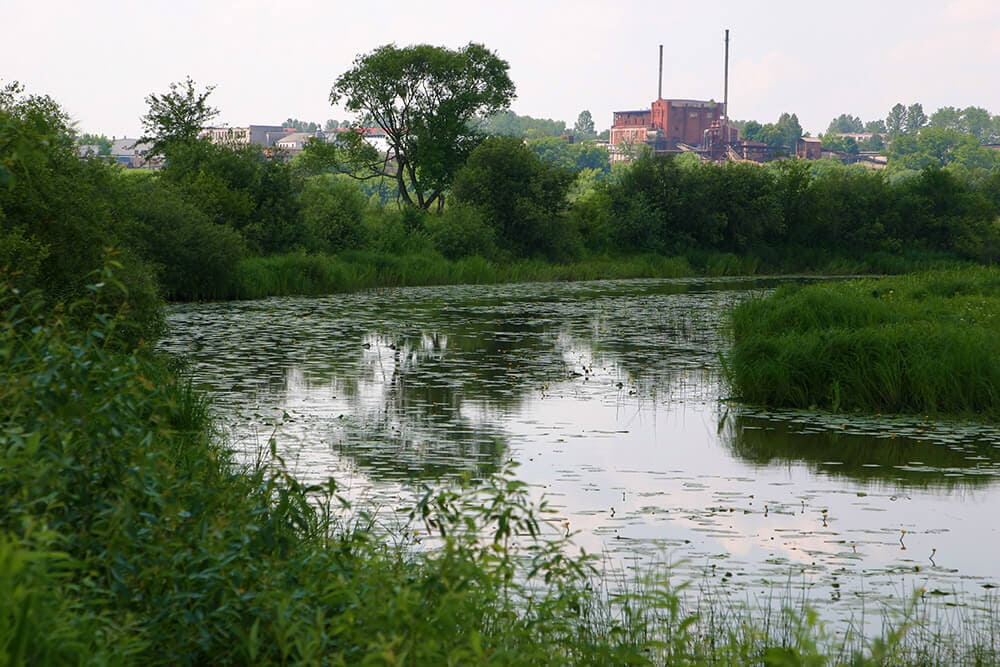
#57 – Fortitude Valley, Queensland
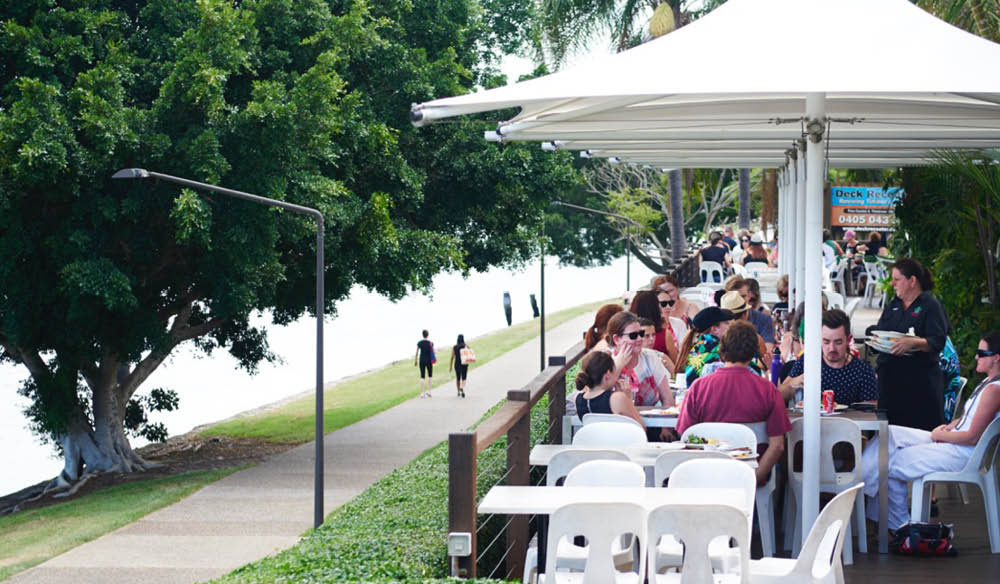
#58 – Hindmarsh, South Australia
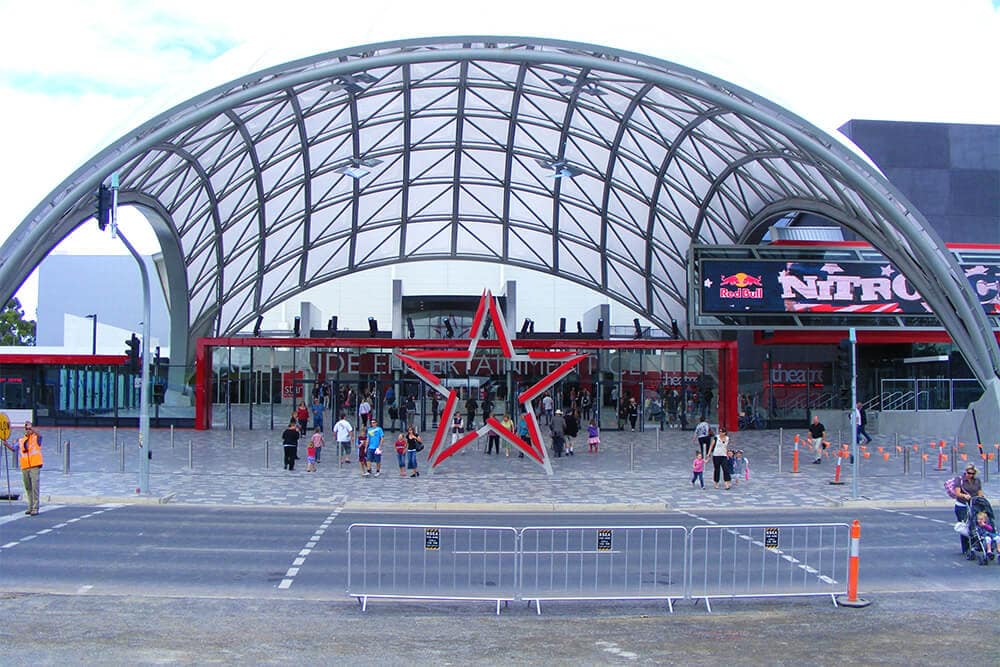
#59 – Battery Point, Tasmania
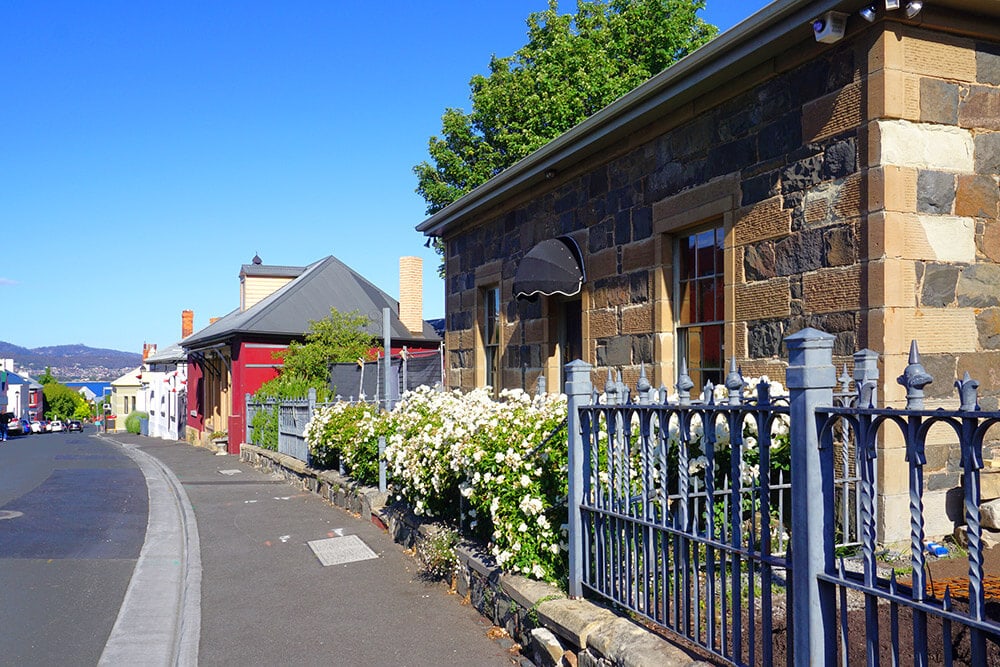
#60 – Barangaroo, New South Wales
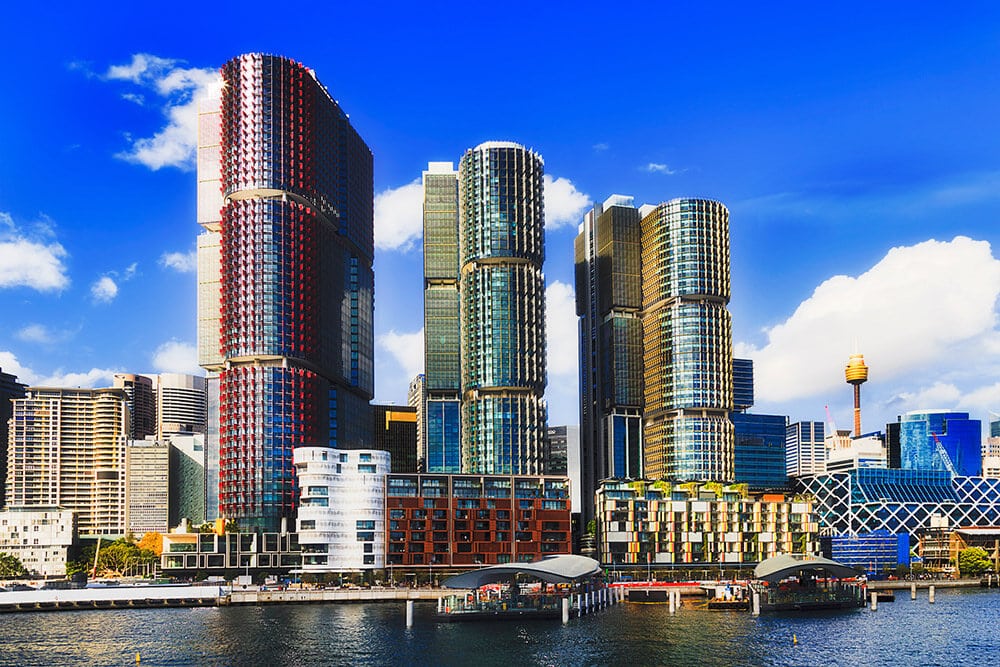
61 to 70 – The Burbs
#61 – fitzroy, victoria.
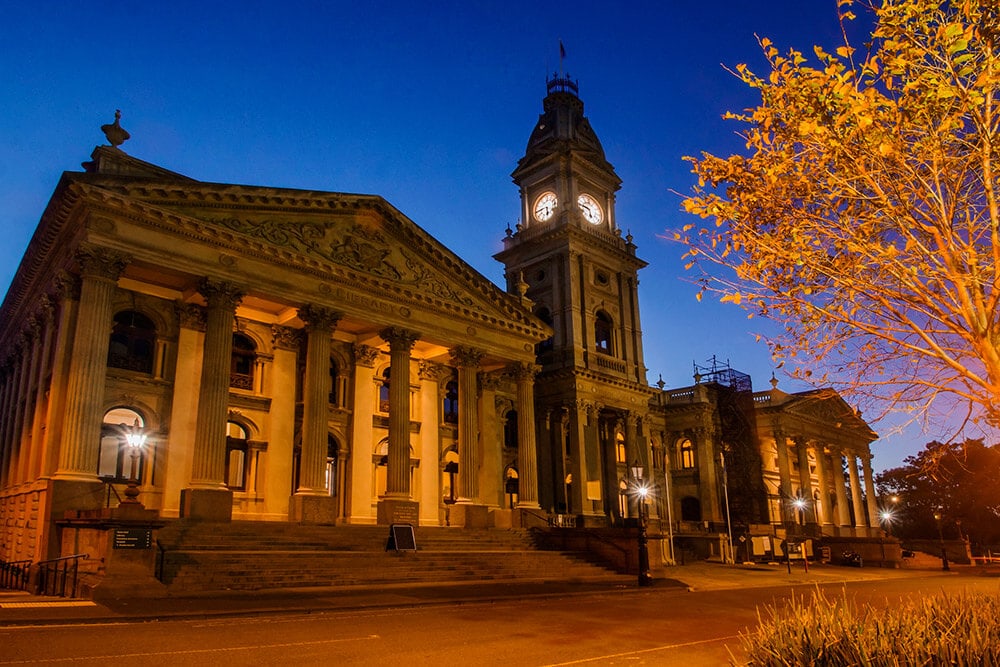
With its eclectic, bohemian personality, the inner-city Melbourne suburb of Fitzroy is a riot of street art, cafes and shopping.
The best place to start any exploration of these parts is on Gertrude Street, off the main drag of Brunswick Street.
Breakfast: Find a table at South American diner Sonido ( No. 69) and order an arepa, a round patty made from maize, and topped with everything from cheese, eggs, beef or chorizo.
Time to shop Cottage Industry (No. 67) is a small boutique filled with fashion and homeware pieces that have been designed and made in Fitzroy or sourced from around the world; Pickings & Parry (No. 166) has menswear and accessories imbibed with quality and craftsmanship.
Lunch: As the name implies, Archie’s All Day (No. 189) serves from early to late, with the lunch menu of burgers and comfort food kicking into action at 10am so there is no pause in proceedings.
Time to shop some more Obus (No. 226) is the work of fashion designer Kylie Zebst, whose wearable designs are influenced by her travels; Little Salon (No. 71) has girly frocks, accessories, homewares and Lovehate jewellery.
Dinner: Chef Andrew McConnell’s Cutler & Co (No. 55-57) is a local institution housed in an old metal works
#62 – Burleigh Heads, Queensland
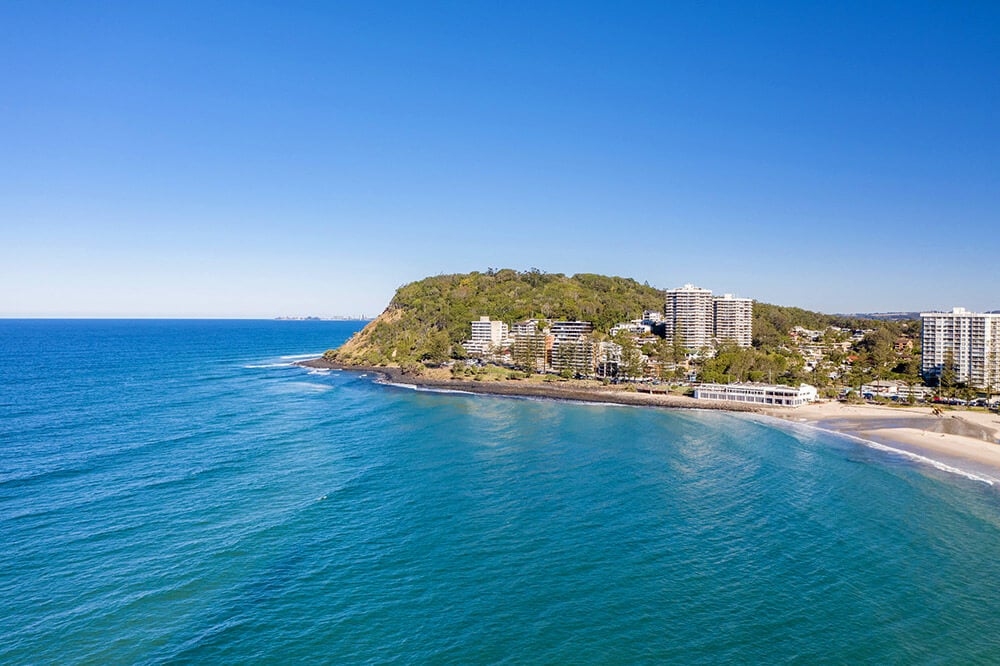
“I escape to Burleigh at any opportunity I can get. To me, it is the capital of the new-era Gold Coast .
It has such a positive pull, a real sense of community and a very relaxed atmosphere.
Burleigh has been revitalised into a dynamic and contemporary destination, whilst effortlessly paying tribute to its glittering 1960s surf town history.”
-Kara Rosenlund, travel, documentary and lifestyle photographer
With one of the country’s best foreshore walks and a cavalcade of dining nearby to match, it’s easy to see why Burleigh is the new Surfers Paradise – without the tack.
#63 – North Hobart, Tasmania
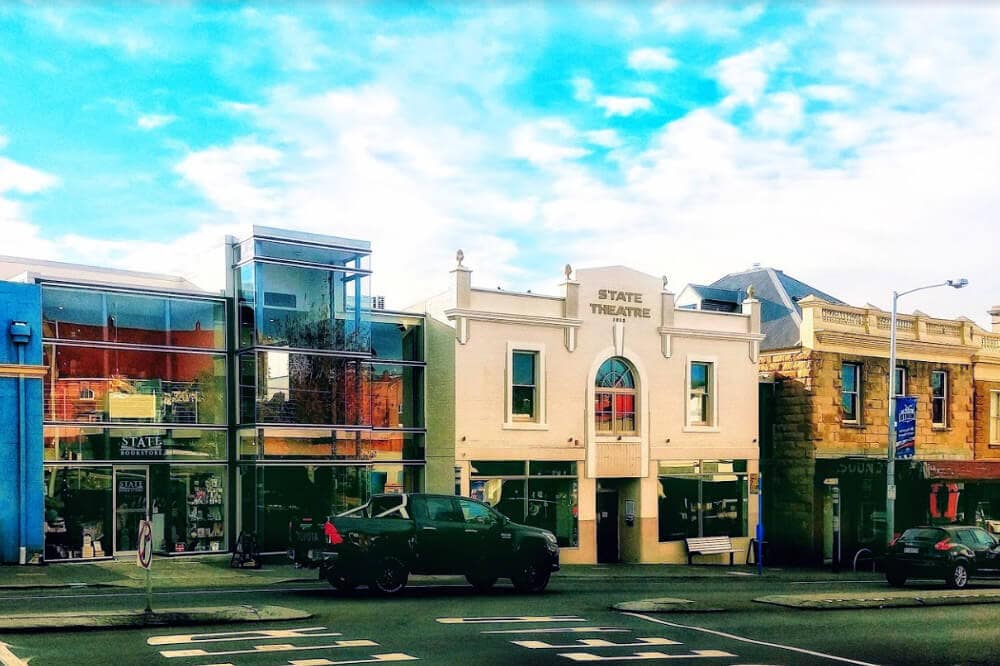
You don’t really know North Hobart unless you know to (cheekily) call it NoHo. Alliterations aside, this suburb has seen a mini boom over the last few years as rental returns in our southernmost state climbed and climbed, and ‘mainlanders’ started discovering the allure of a more Tasmanian pace of life.
Suddenly its slightly-pedestrian main street, Elizabeth Street, located up the hill from the more sparkly waterfront of Salamanca Place , was transformed into a funky collection of cafes, eateries, shops and galleries retro-fitted into the area’s charming historic buildings, many of which date back over 100 years.
So now NoHo is des-res in the extreme.
#64 – Manly, New South Wales
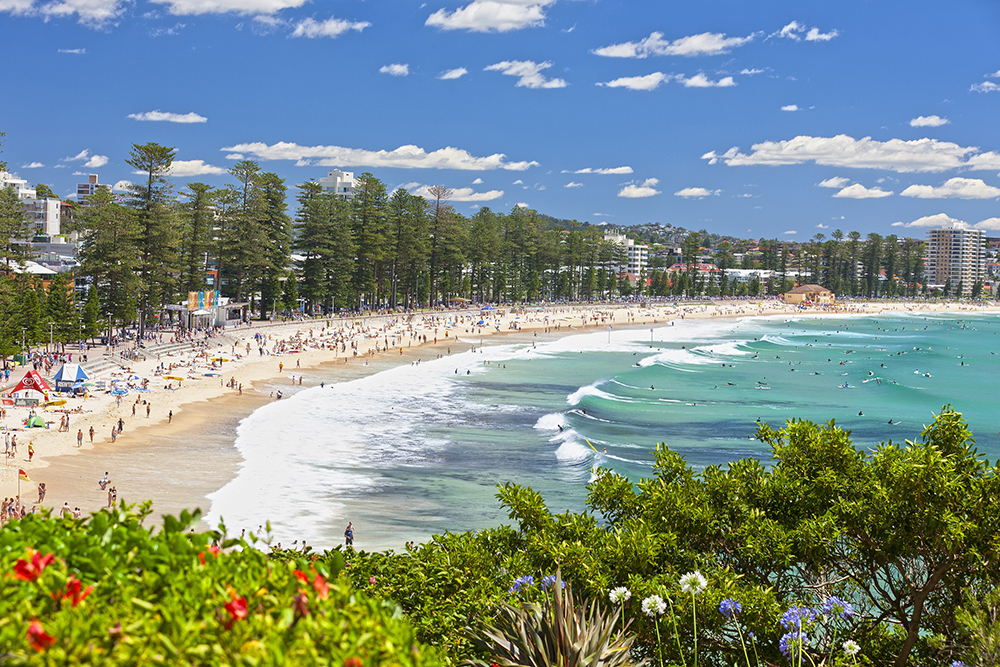
Learning to surf is almost a rite of passage for Australians given our land is girt by sea, and a favourite place to learn some board basics is on the sands of the celebrated northern Sydney beachside suburb of Manly.
Lessons at Manly Surf School are stacks of fun, with adult and kids’ lessons throughout the year.
Then dry off and head to one of the many cafes serving up serious coffee and beachside cool: the lovely Boathouse at Shelly Beach with its Instagram-worthy interiors; the Nordic cool of Fika Swedish Kitchen ; or Barefoot Coffee Traders and Showbox Coffee Brewers, always packed with locals.
#65 – Parramatta, New South Wales

Eat: Parramatta , and neighbouring Harris Park, have a lock on some of the best Indian food in Sydney, from dosa to biryani; try Ginger Indian Restaurant for delicious North Indian curries.
Drink: There is no signage at Uncle Kurt’s; it’s hidden below a car park (Horwood Place). If you do manage to locate it, you will find a graffiti-daubed space serving up serious cocktails and NY deli fare.
Play: What with a revamped Tropfest film festival that took place in Parramatta Park this year; the Sydney Festival program getting bigger and better here each year (including the ever popular Spiegeltent); the Riverside Theatre attracting artists and performers from all over the world; and the colourful Parramasala festival, a three-day celebration of the diverse cultures that thrive in the greater Sydney area.
There’s never a dull moment in Parramatta, literally!
#66 – Cottesloe, Western Australia
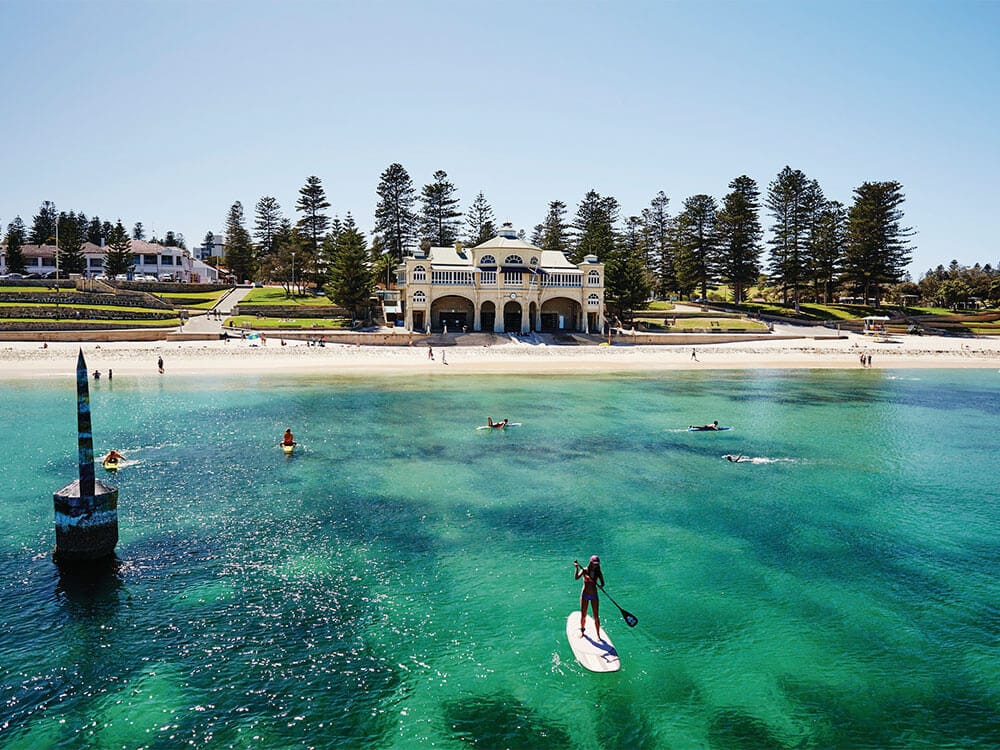
Cottesloe is one of Australia’s most stunning beaches with views to the horizon that seem to stretch forever – and Perth has arguably the best sunsets of any major city in the world. The amphitheatre looking onto the beach from under the shade of the pine trees gives you a different perspective of the walk to compare with when you walk along the sand.
Over 200,000 people come from all across Perth and south-west Western Australia to see the exhibition. Each Friday to Sunday evening Cottesloe Beach becomes Perth’s giant passeggiata with thousands of people wandering among the sculptures on the beach as the sun sets over the Indian Ocean. It is the most extraordinary relaxed community vibe.
Most people say you should visit two or three times as the sculptures and the atmosphere change at different times of day. My favourite times are to beat the crowds with an early morning wander around the sculptures followed by a swim and then breakfast at John Street Café . Or arrive around 5pm to soak up the atmosphere of the sunset crowds on the sand before heading to Il Lido for drinks and dinner.
Make sure you drop into ‘Sculpture Inside’, our exhibition of small indoor works in a large walk-in marquee on the Sea View Golf course across the road from the beach.
I am jealous of everyone eating fish and chips under the trees watching the sunset before or after a beer at the Cottesloe Beach Hotel .
#67 – Cabramatta, New South Wales
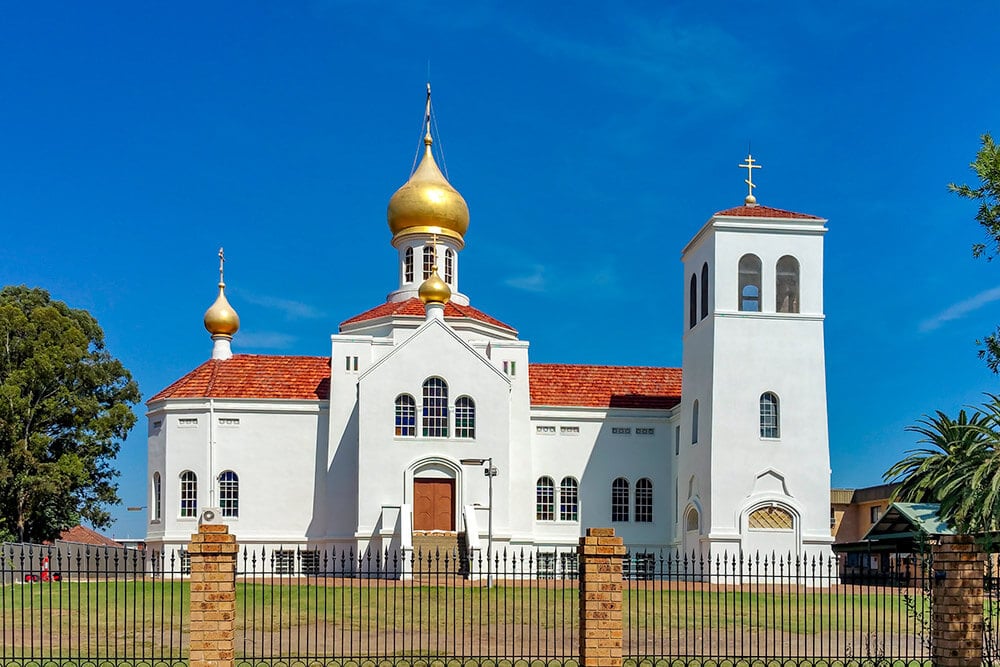
- While the rest of Sydney prides itself on its coffee culture, tea is hero here. Teabags T-shop serves sweet, refreshing fruit teas served in easy to carry zip-lock bags.
- Get hands on with the local cuisine by ordering the DIY rice paper rolls option at various eateries in and around John Street; Phu Quoc is a favourite with locals.
- If the size of the crowd waiting for tables is your metric of how good a restaurant is, Pho Ann might be the best around, with locals milling patiently at the entrance watching those inside slurp up bowls of the delicate broth.
- Eastland Supermarket Sieu Thi Dong Khanh has aisle after aisle of Asian staples, from fresh noodles to spices to gleaming woks.
- Fabric shops are another specialty, festooned with colourful bolts of fabric outside, with everything from zippers to thread spools inside.
#68 – Balaclava, Victoria
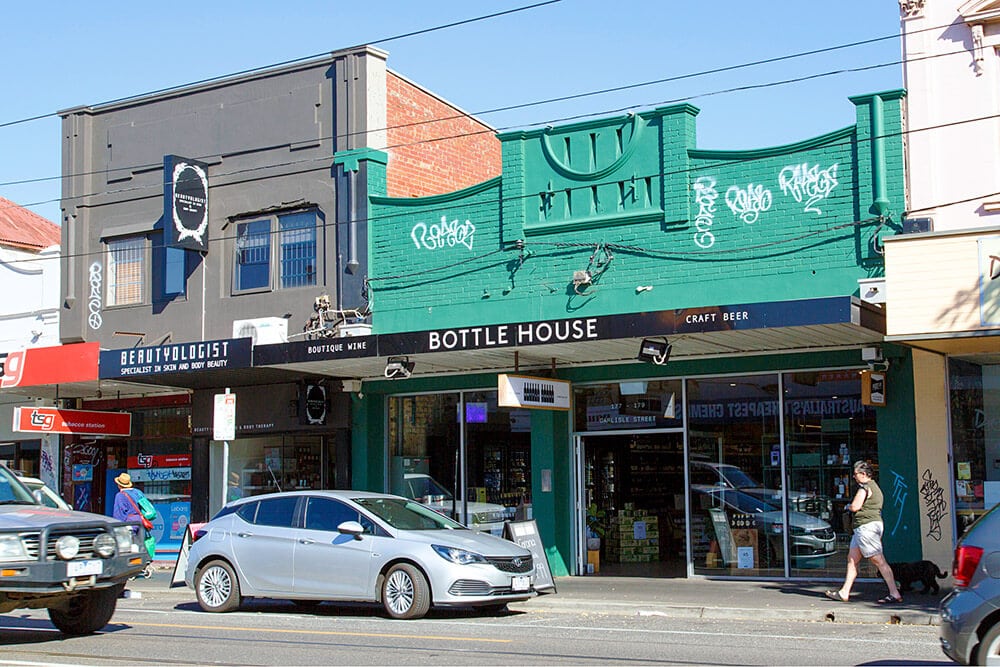
Never heard of the south-east Melbourne suburb of Balaclava? Well, here are a few facts to enlighten you on the subject:
It is considered by many to be St Kilda’s slightly cooler cousin given it is bordered by the eternally hip bay-side suburb, but remains largely undiscovered by the weekend hordes.
There is a huge Jewish Orthodox community here, reflected in the presence of stores like Glick’s , a local institution, opened in 1969 by Mendel Glick, and still producing chewy bagels and all manner of breads and bakes.
The local coffee scene is concentrated along Carlisle Street and nearby Inkerman and William Streets, while a cold beer on a hot day can be had at The Local Taphouse .
#69 – Semaphore, South Australia
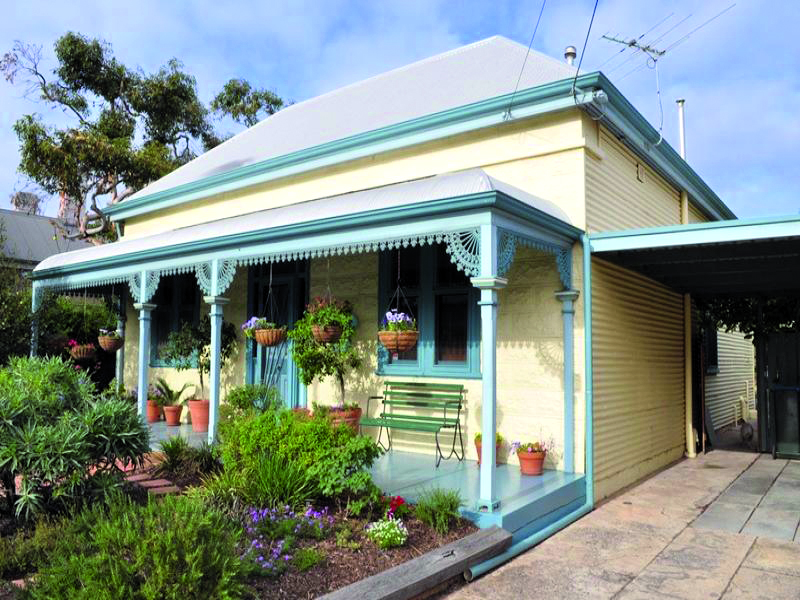
Semaphore Summer Carnival: This event takes place from mid-December to the last Sunday in January, with fireworks on New Year’s Eve and Australia Day.
Semaphore Greek Cultural Festival: Held in mid-January, this iconic celebration commemorated its 40th anniversary in 2019.
Adelaide International Kite Festival: Look forward to a riot of colour on the beach – and in the skies – over the Easter long weekend.
Semaphore Music Festival : Held on the Labour Day long weekend in October, it features performers, food trucks, rides and craft beers.
Semaphore Street Fair : Prepare for a day of family fun taking place along Semaphore Street on the last Sunday in November.
#70 – Kalamunda, Western Australia
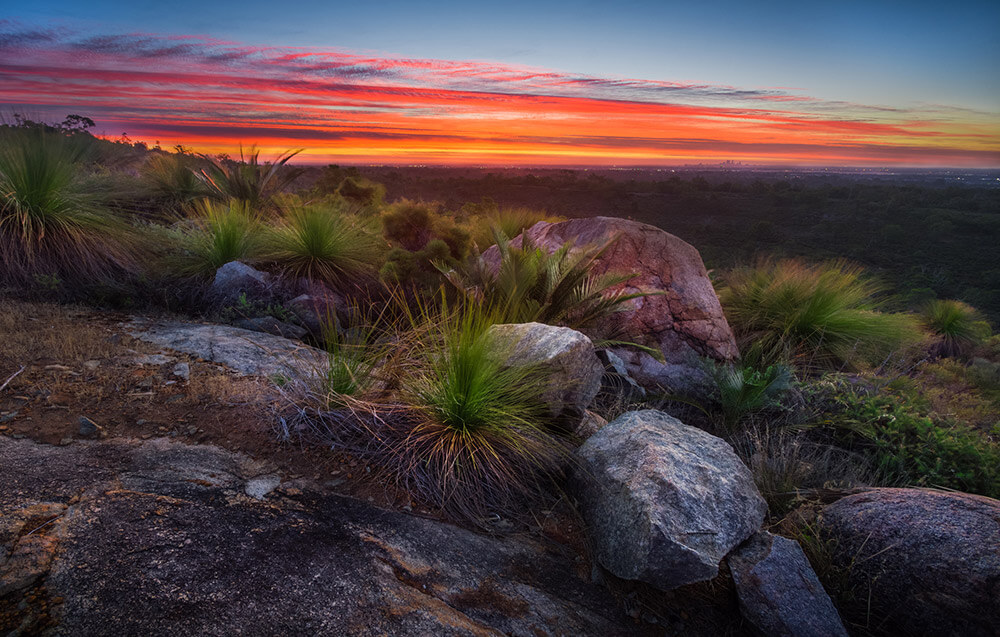
Located in the eastern suburbs of Perth, at the very edge of the metropolitan area, the location saw significant development in the post-war era, especially during the ’60s and ’70s, and now boasts a population of over 62,000 people, including a few significant transplants from the CBD: two of the headlining eateries here, Mason & Bird and Chatford & Co Cafe, are helmed by ex-Rockpool Bar & Grill Perth alumni.
At Chatford & Co Cafe it’s ex-head pastry chef, Gavin Chater, while over at Mason & Bird, former Rockpool managers Matt Nguyen and Jaclyn Noel have teamed up with Brad Johnston.
71 to 80 – Top Secret Spots
#71 – groote eylandt, northern territory.
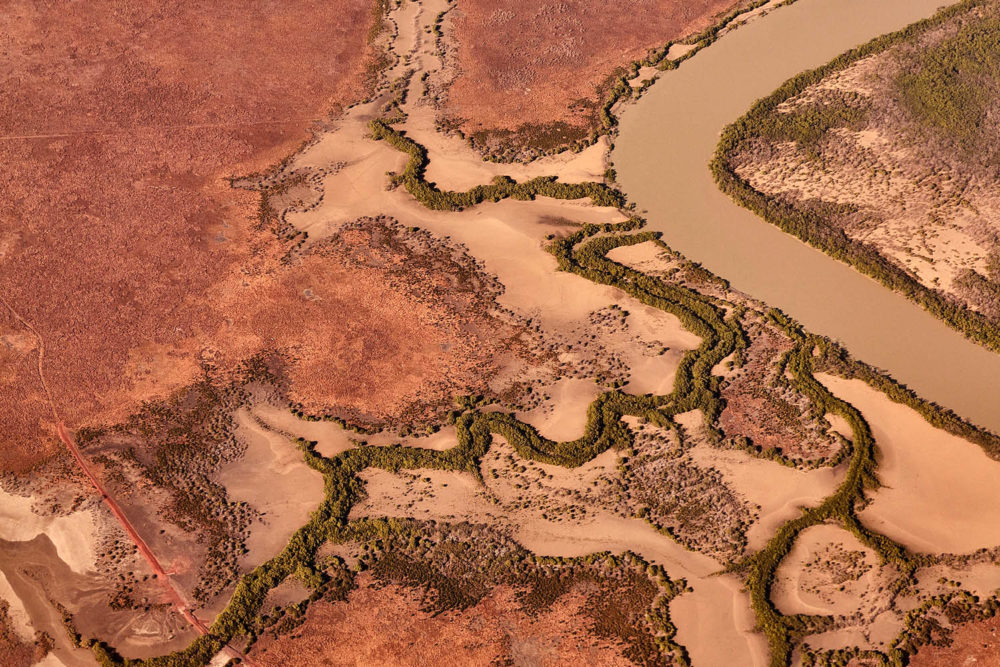
#72 – Cocos Keeling Islands
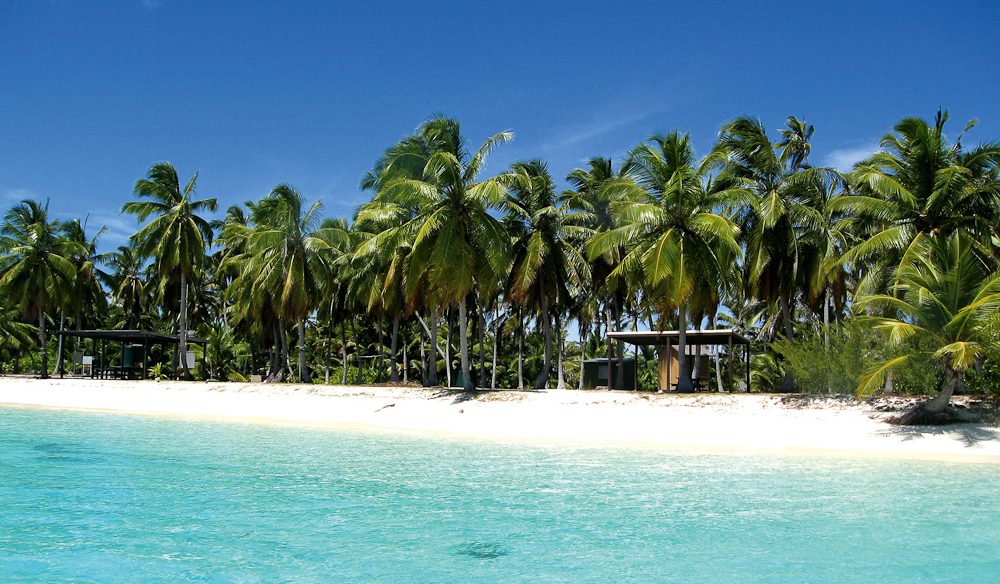
#73 – Second Valley, South Australia
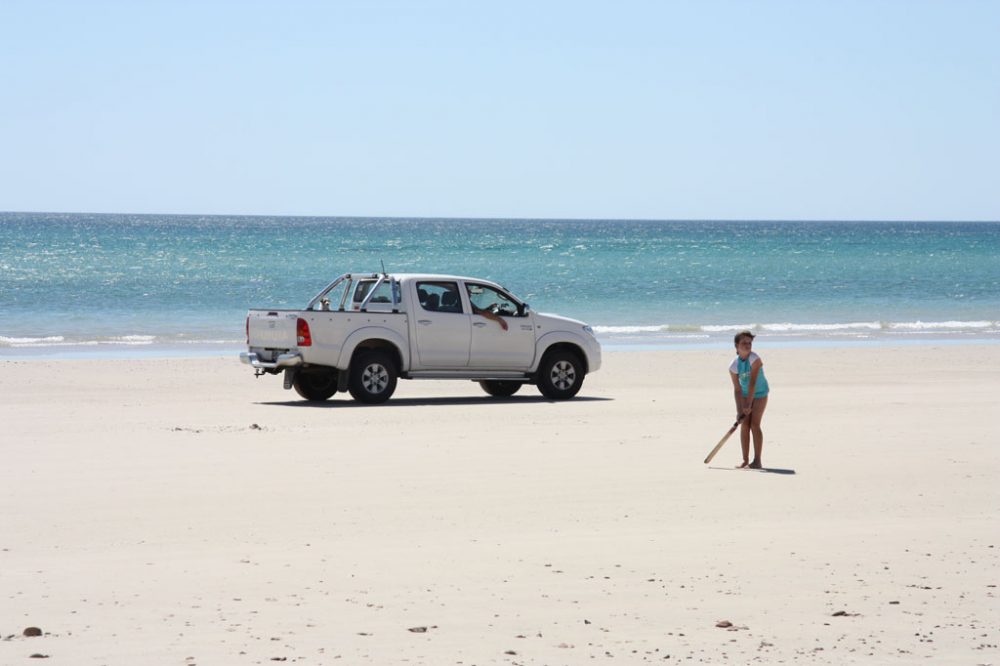
#74 – Ningaloo, Western Australia
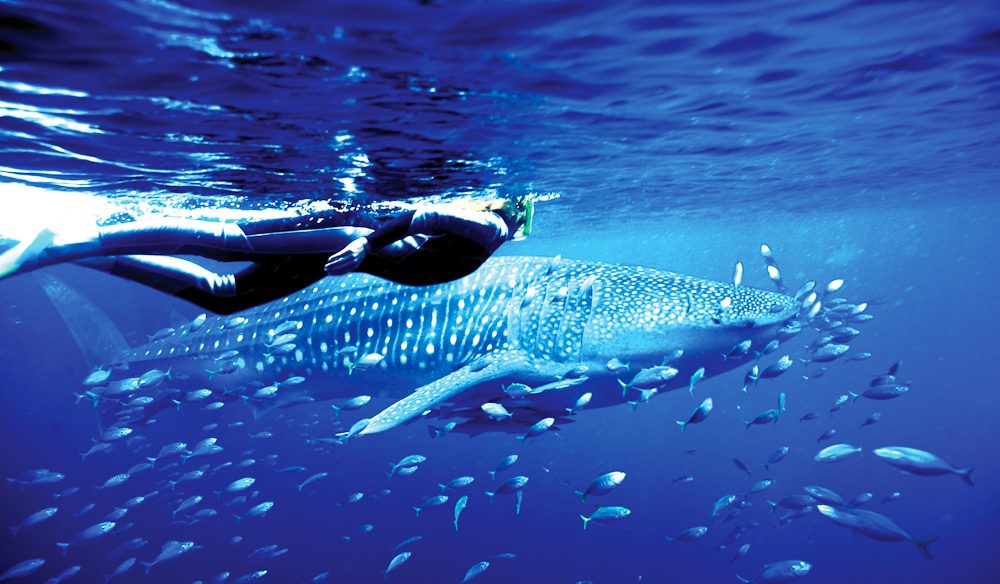
- To start exploring , make your way to the coastal town of Exmouth (you can fly into Learmonth from Perth and get a shuttle bus to Exmouth). The Ningaloo Coast is an important sea turtle rookery with around 10,000 nests dotted along its shores.
- Ningaloo means ‘promontory’ in the language of the local Yamatji people, who have lived here for some 30,000 years.
- At 300 kilometres long, Ningaloo is one of the longest fringing reefs in the world, its coral gardens accessible right off the beaches.
- More than 50 per cent of the Indian Ocean’s coral species can be found in Ningaloo.
- Whale sharks are the largest species of shark in the world. Snorkelling with these gentle giants is a major lure for most people visiting Ningaloo; various operators out of Exmouth offer whale shark tours.
- Whale sharks have about 3000 tiny teeth, but they don’t use them to eat; they are filter feeders, sieving plankton through their gills.
#75 – Milton, New South Wales
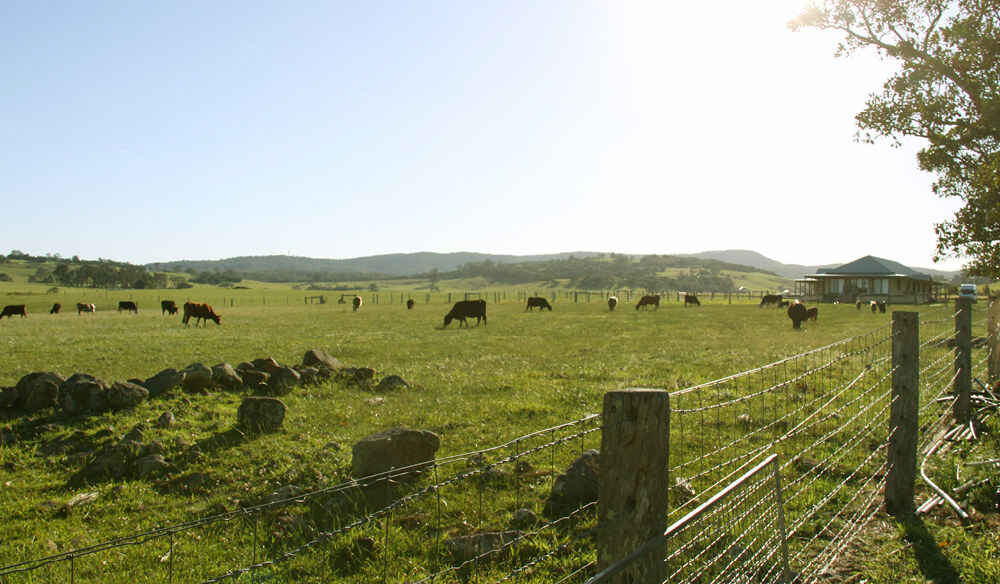
#76 – Agnes Waters / 1770, Queensland
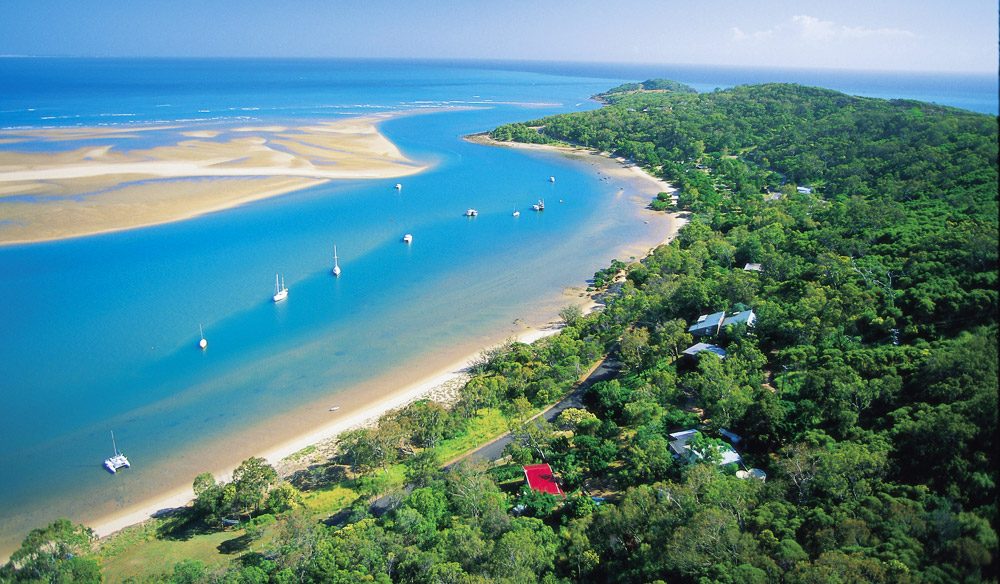
#77 – Rylstone, New South Wales
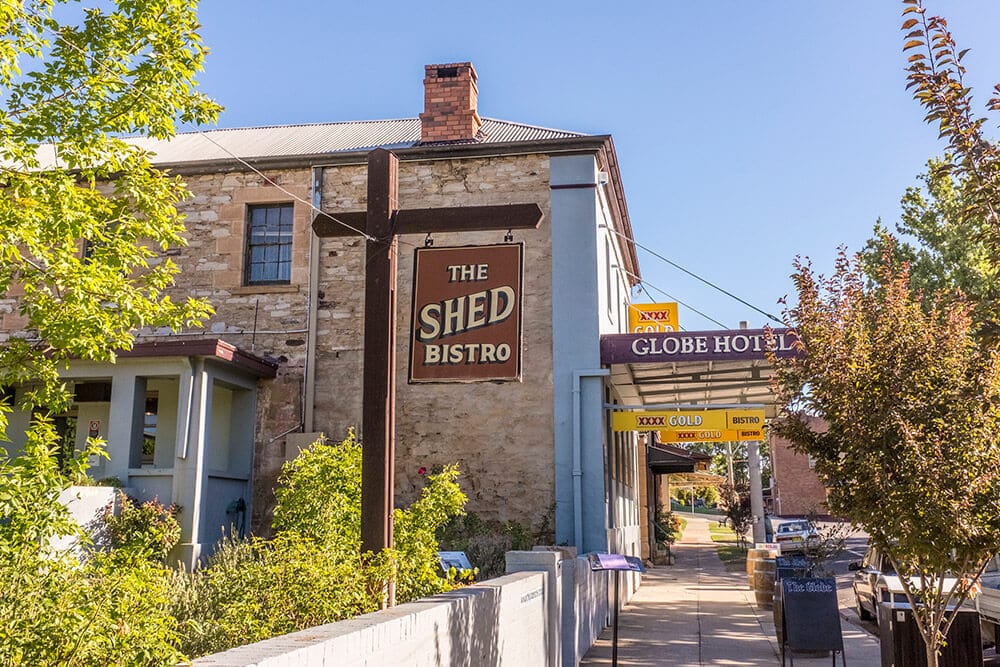
#78 – Wye River, Victoria
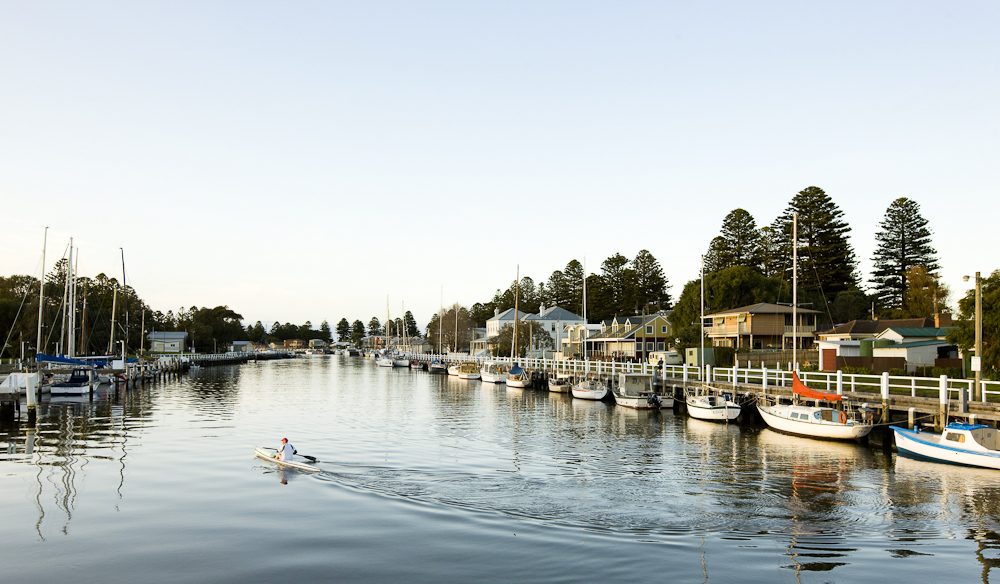
#79 – Corinna, Tasmania
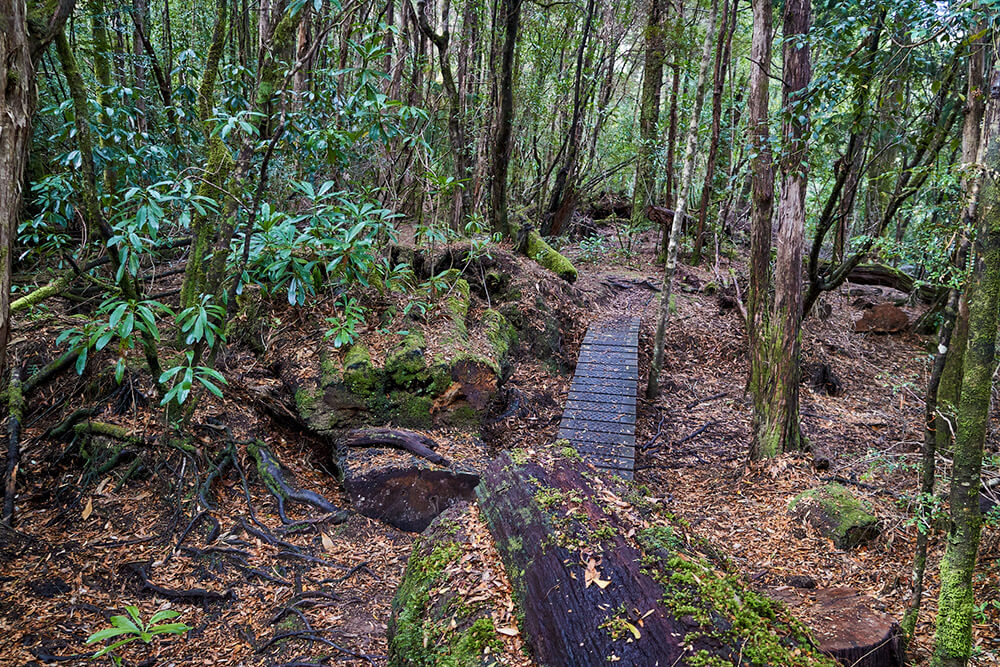
#80 – Toodyay, Western Australia
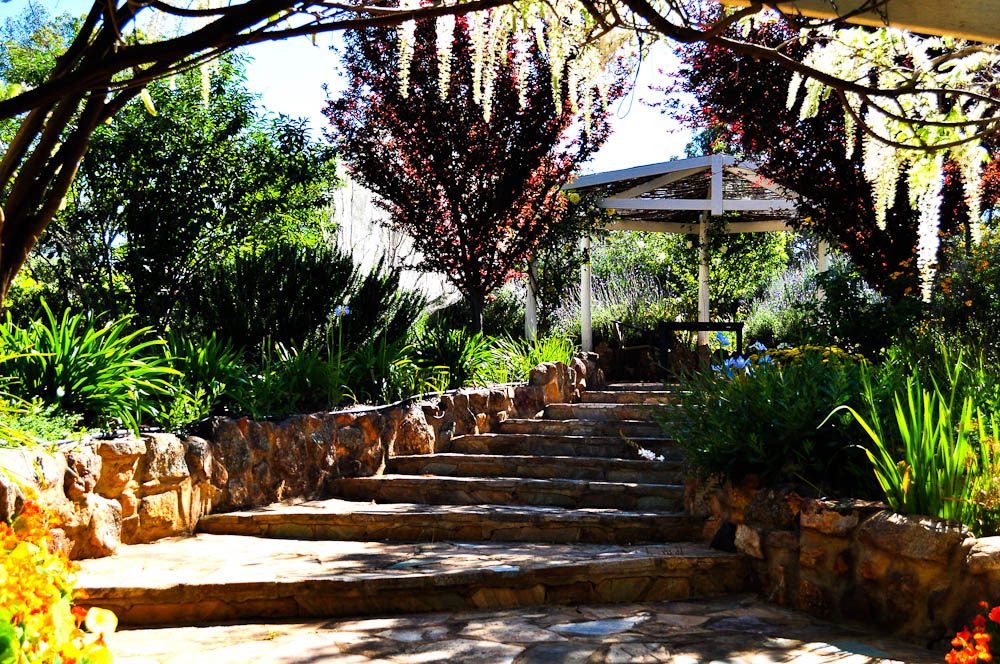
81 to 90 – Idyllic Islands
#81 – norfolk island.

“We have the cleanest, most beautiful waters, bountiful fresh fish, pristine forests, our food tastes better and you’re never more than five minutes from home.
You can’t beat our lifestyle,” says Norfolk Island resident Emily Ryves, who along with her husband Zach Sanders established an artisan goat’s cheese farm, The Hilli Goat , overlooking Anson Bay on Norfolk Island.
“It’s not just convict ruins here or old people on buses. There’s a raw energy to Norfolk; it’s not static or boring.”
This creative buzz is evident at the regular farmers’ market, where locals sell their island-reared produce, and in the development of new industries: the island now has its own winery, as well as local charcuterie (Robyn Tavener taught herself the skill), cheesemakers, coffee beans and a whole lot more.
And the best way to see it all? Hire a cute Mini Moke, grab a map and get going!
#82 – Rottnest Island, Western Australia
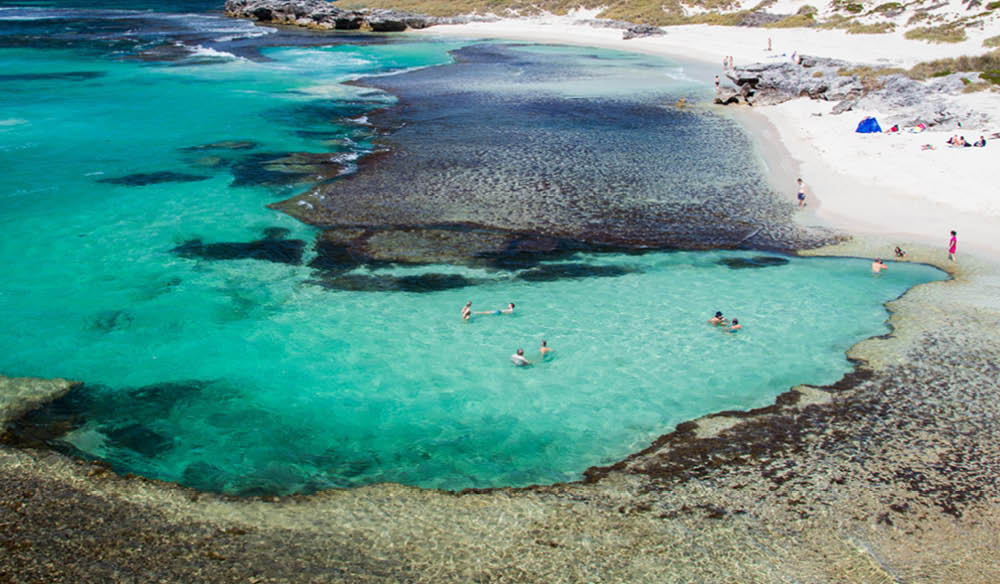
Sitting just off the coast from Perth, Rottnest Island is a protected nature reserve that offers up pristine waters and natural beauty by the bucket-load.
Activities range from snorkelling to walking to surfing (try Strickland Bay), and a few more besides, but the things everyone visiting the island wants to know about, and see up close, are the quokkas.
So, here are a few fast facts to wow your fellow ferry passengers with when you’re next there:
- The island got its name when Dutch explorer Willem de Vlamingh dubbed it ‘Rotte Nest’ or ‘rat’s nest’ thinking quokkas were rodents.
- They are in fact small macropods, belonging to the kangaroo and wallaby family.
- There are between 10,000 to 12,000 quokkas on Rottnest Island; they breed in late summer, have a gestation period of just 27 days and produce one joey per pregnancy.
- They are crazy cute!
#83 – Kangaroo Island, South Australia
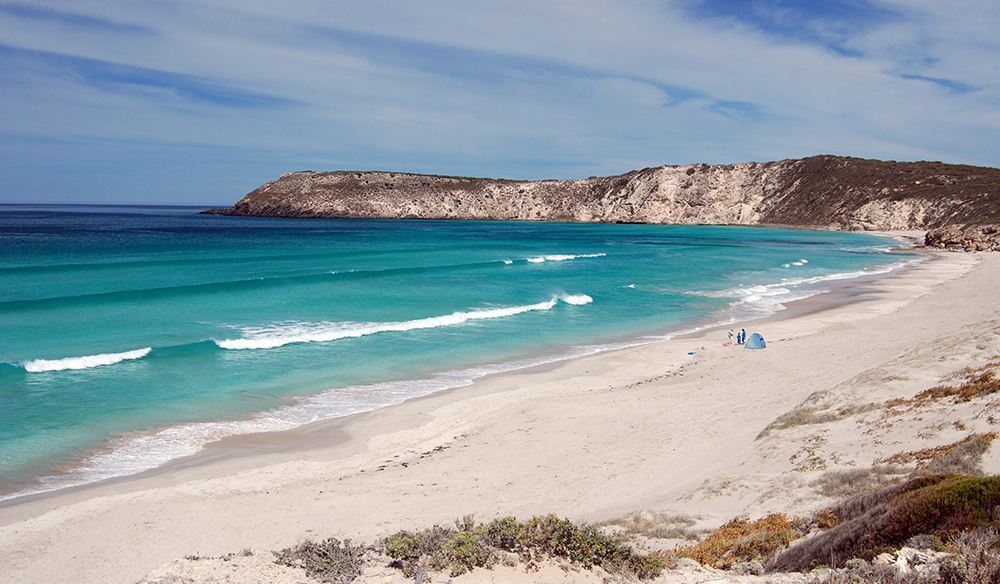
“ Kangaroo Island is nature’s paradise, a zoo without fences, and the best place in Australia to see nature in its natural habitat!
We have stunning scenery, rugged coastlines and a surprise around every corner. And we’re also fast becoming known as a hot spot for foodies, with wineries, a gin distillery, breweries, sheep dairies, amazing oysters and seafood, and great places to eat it all.”
So says Kangaroo Island Odyssey guide, Nikki Redman; Kangaroo Island Odysseys.
This important South Australian island may have been ravaged by bushfires, yet it is already starting to bounce back – such is the resiliency of its inherent nature.
#84 – Bruny Island, Tasmania

If it’s good food you are after, you’re heading in the right direction taking the 20-minute car ferry across the D’Entrecasteaux Channel from Kettering to Bruny Island (a near neighbour of Satellite Island).
- Bruny Island Berry Farm : The kids will love the pick-your-own option here
- Bruny Island Cheese Co. : Nick Haddow uses both cow’s and goat’s milk to make its range of cheeses, using environmentally sustainable farming practices to produce the best milk – and cheese – possible
- Get Shucked Oyster Farm: A locally owned operation farming oysters in the clear Tasmanian waters
- Bruny Island House of Whisky : Head here for a range of single-malt Tasmanian whiskies
#85 – Tiwi Islands, Northern Territory
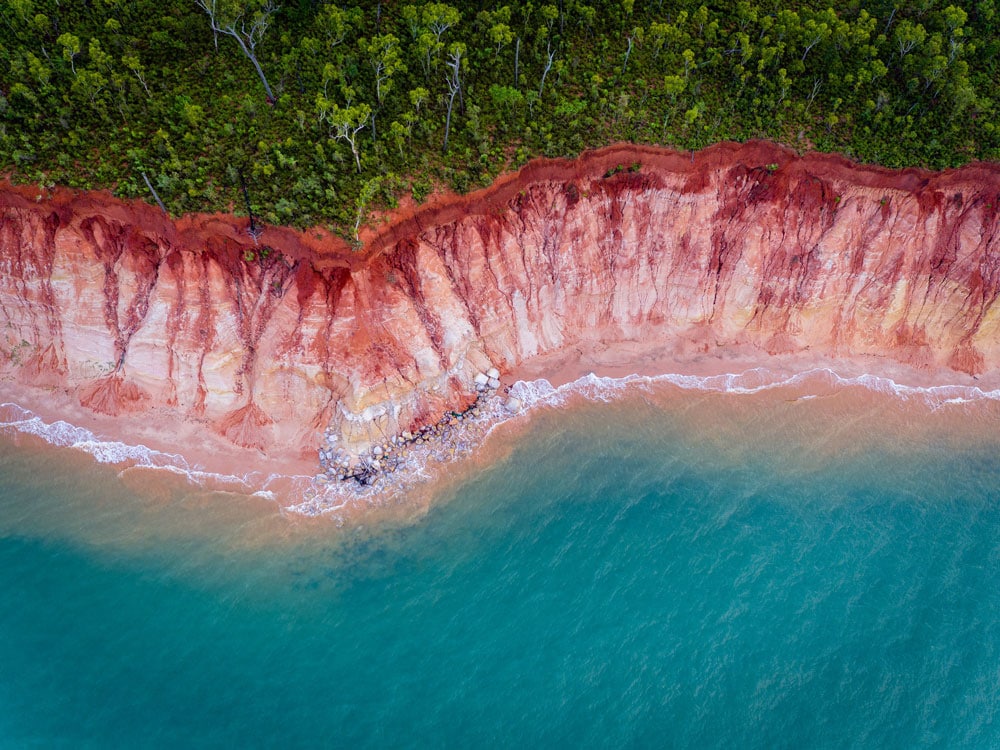
The islands are nicknamed the Island of Smiles, reason enough to spend time there.
The Tiwi Islands are made up of two islands, Bathurst and Melville Islands, which are located 80 kilometres north of Darwin.
The Tiwi people are rightly famous for their art; visit Bathurst Island for the annual art sale in March to meet the artists and buy works, and then watch the footy Grand Final. The sale takes place at the Tiwi Design Art Centre, with additional arts and crafts from Jilamara Arts and Crafts and Munupi Arts and Crafts from Melville Island, beginning at 9am and concluding when the footy starts at 1pm.
Tours led by an Indigenous guide are the best way to explore the diverse landscape of tropical rainforest cliffs, white sand beaches, dense jungle and idyllic rock pools.
#86 – Lizard Island, Queensland
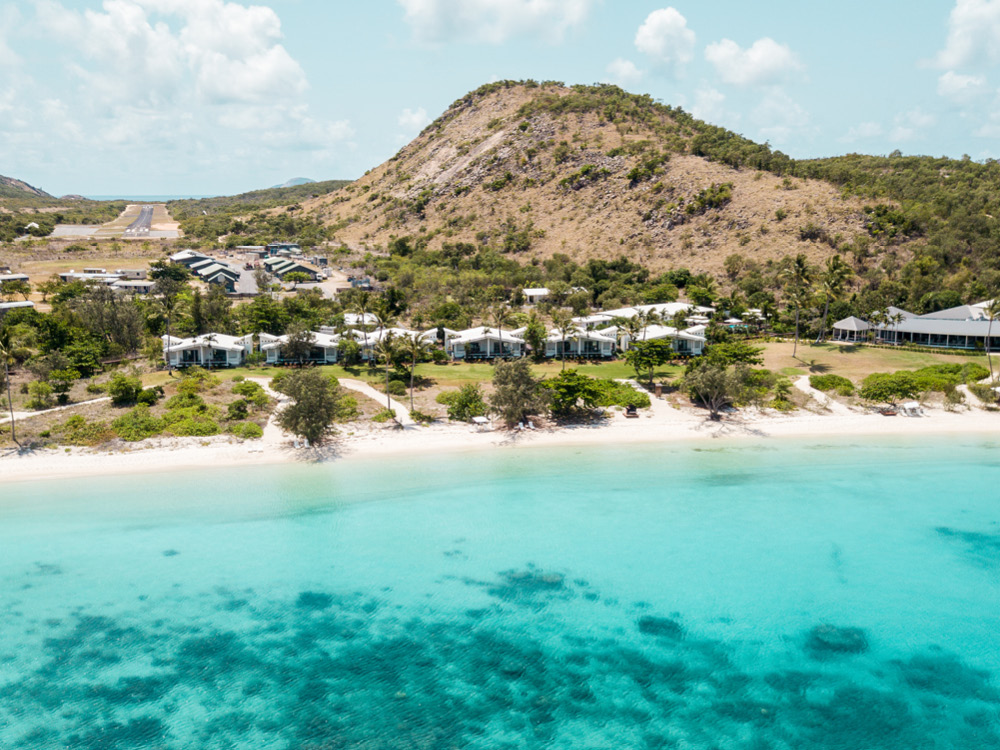
The reptiles now share the island, which is over 240 kilometres from Cairns , with an indulgently luxurious resort of 40 suites and villas.
From there, guests have the run of 24 private sandy beaches, as well as the aquatic wonderland of the reef.
Apart from that, it’s all hanging out on sun lounges soaking up the rays and looking out to an infinite horizon.
#87 – Satellite Island, Tasmania
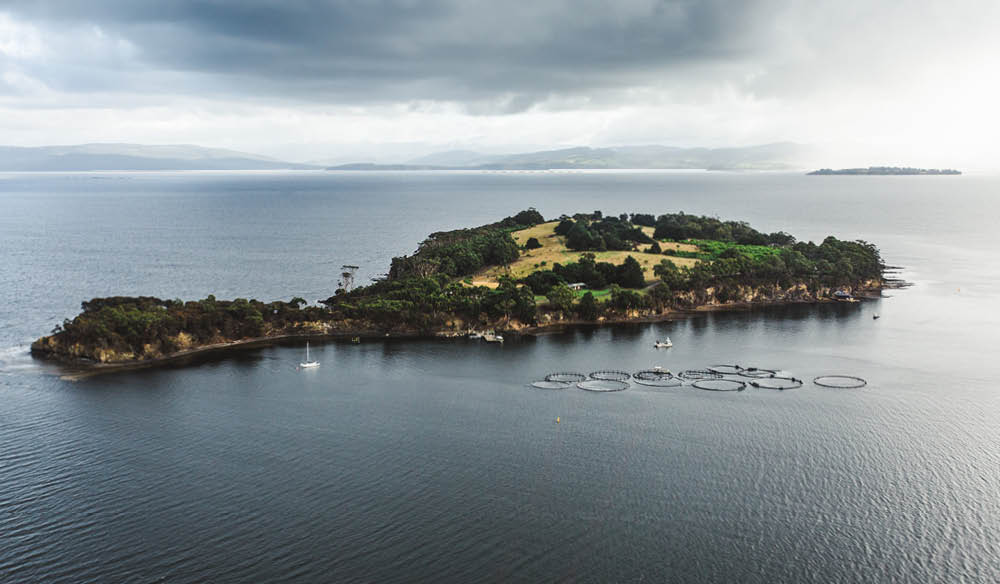
When the owner’s nephew Will acquired the island, and the house he’d built on a hill, he and his wife set about opening it to visitors as a private escape.
The humble house is now a stylish three-bedroom affair named The Summer House, and guests can indulge in the remote beauty of the island by hunkering down and doing nothing at all, or pulling on a pair of gumboots and exploring exquisitely named spots like Dreamy Bay, Last Glimpse Point and Morning Light Bay.
#88 – Houtman Abrolhos, Western Australia
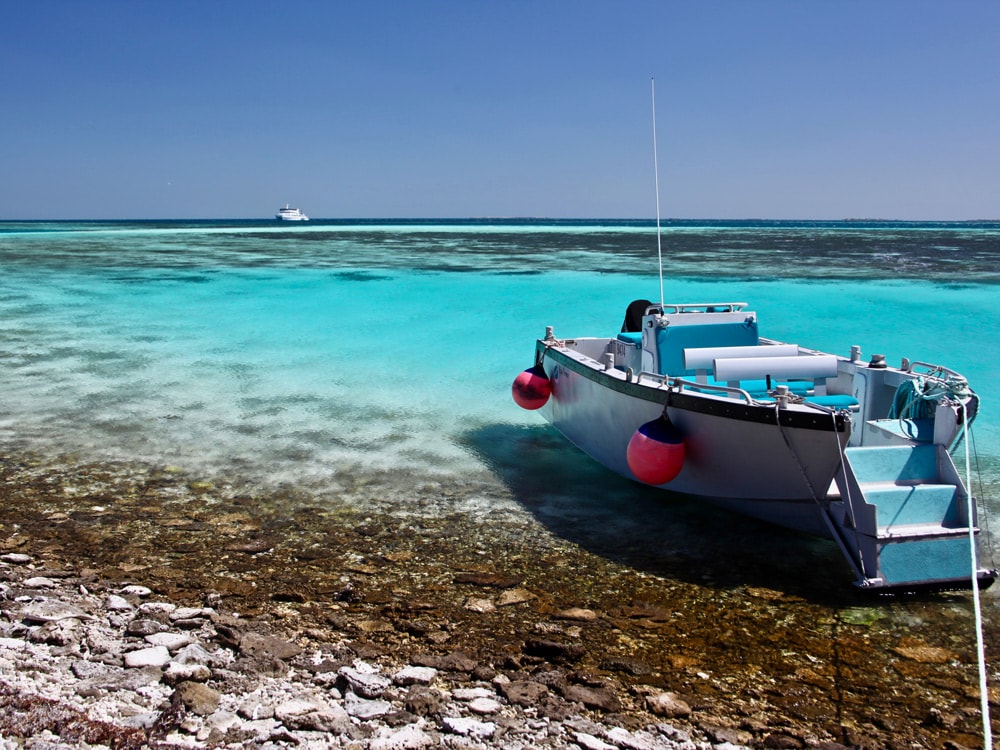
Consisting of 122 islands stretching across 100 kilometres of Indian Ocean off the coast of WA, the Houtman Abrolhos Islands are clustered into three main groups: the Wallabi Group, Easter Group and Pelsaert Group.
The reefs that proliferate here are rich with sealife, while the islands harbour large breeding colonies of seabirds and sea lions. But while their remote location encourages life, it also takes it away: many ships have been wrecked on the reefs here over the centuries, the most notable being the Batavia in 1629.
The ship came to a tragic end on Morning Reef in the Wallabi group, and the story of the survivors making it to land only to turn on each other is famous. It is possible to dive the wreck site but it’s only for experienced divers.
Charter cruises running from three to nine days are available out of Geraldton if you really want to immerse yourself in the rugged beauty of these largely undiscovered gems.
#89 – Haggerstone Island, Queensland
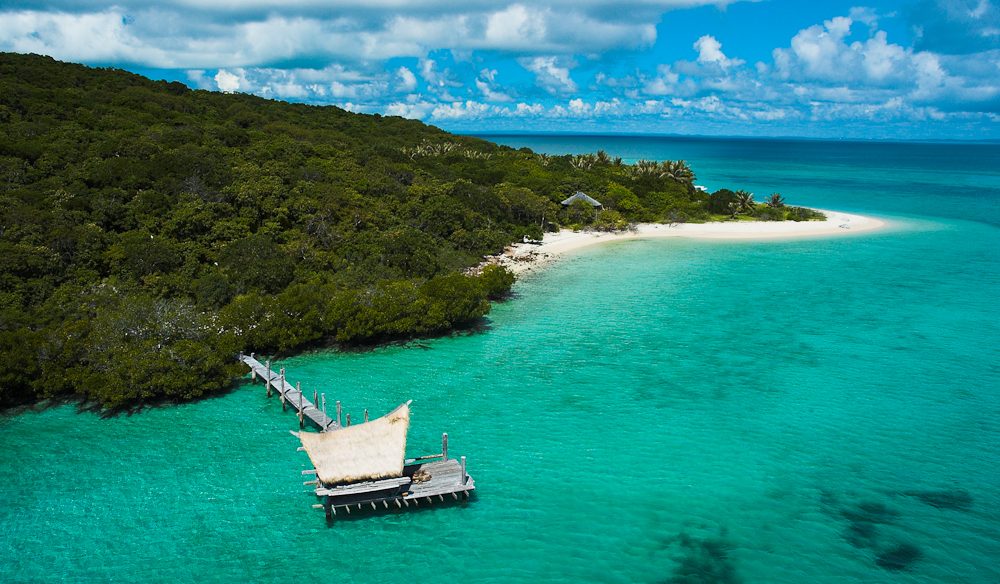
A labour of love of Roy and Anna Turner, the couple have spent the last 30 years creating a luxury resort constructed from raw, earthy materials, many scavenged from the island itself.
The result is a uniquely individual offering of lodges that melt seamlessly into the lush tropical surrounds.
The Swiss Family Robinson aesthetic reaches its zenith in the main lodge, with heavy beams, a high thatched roof, and flickering candle light illuminating the pitch-dark nights. Being cast away never looked so good.
#90 – Thursday Islands
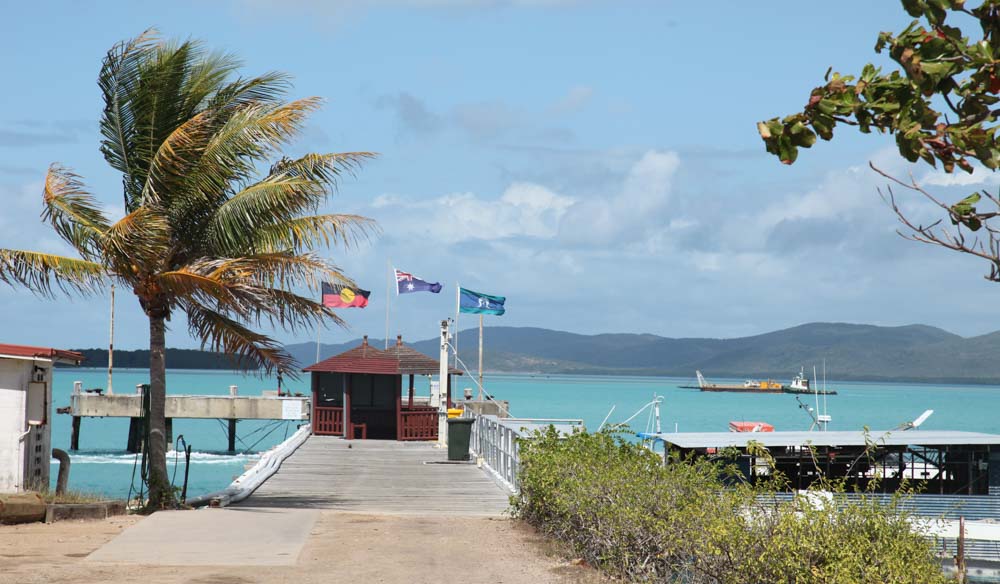
Scattered like confetti in the waters of the Torres Strait between Cape York and Papua New Guinea (there are some 274 islands in total), for those who do make the journey, the reward is experiencing an area that is rich in culture and beauty.
The sense of time moving at a different speed is something to embrace here; Thursday Island represents the thriving heart of the Torres Strait, but don’t expect this to come with hustle and bustle.
Tour the historic sites on the island – Green Hill Fort and its tunnels that now house the Torres Strait Historical Museum, and don’t even think of leaving without seeing the Gab Titui Cultural Centre. And take a boat ride to neighbouring Friday Island.
91 to 100 – Camping Spots
#91 – ormiston gorge, west macdonnell ranges, northern territory.
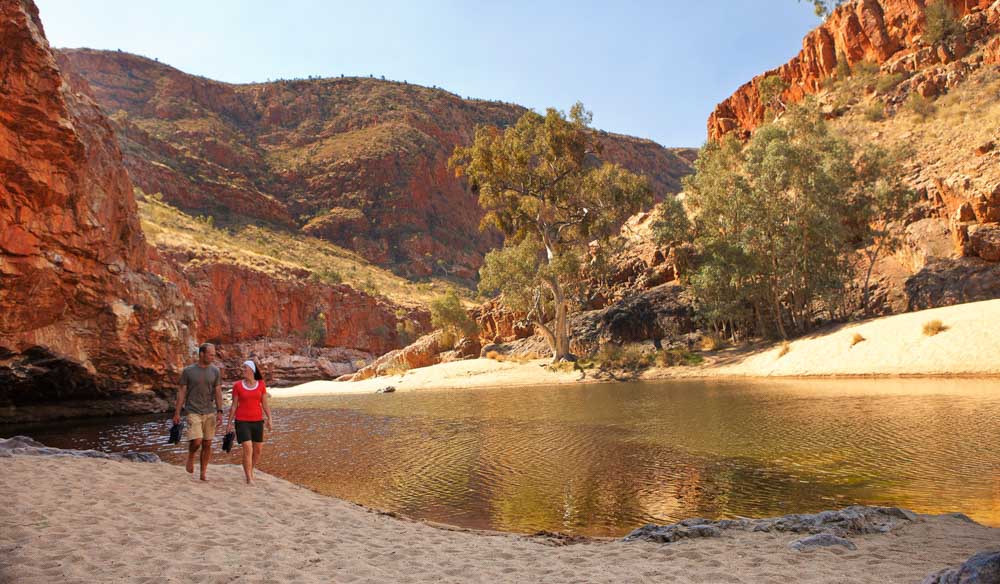
#92 – Lucky Bay, Cape Le Grand National Park, Western Australia

#93 – Mitchell Falls, Mitchell River National Park, Western Australia
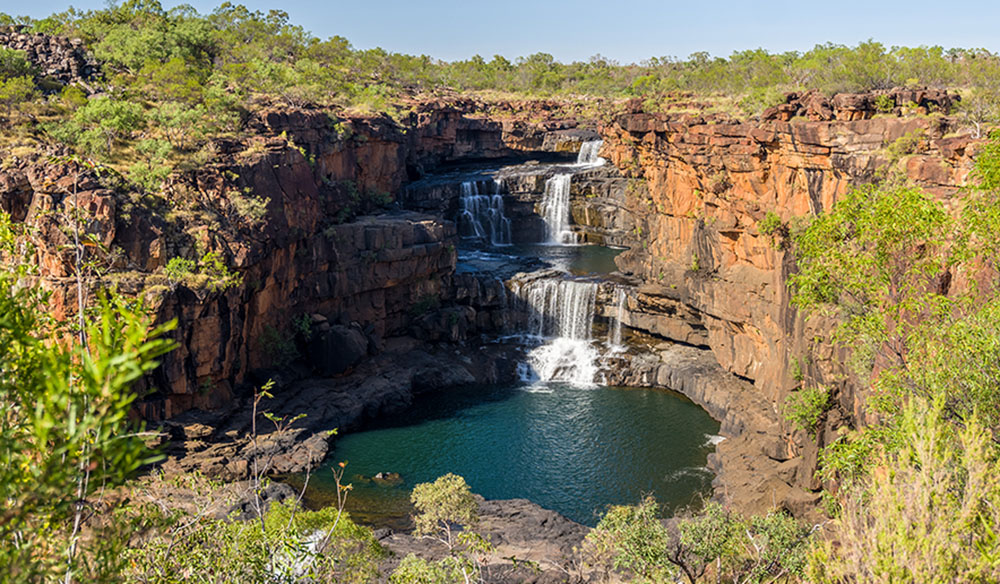
#94 – Iga Warta, Northern Flinders Ranges, South Australia

#95 – Bamurru Plains, Northern Territory

#96 – Boreang Campground, Grampians National Park, Victoria
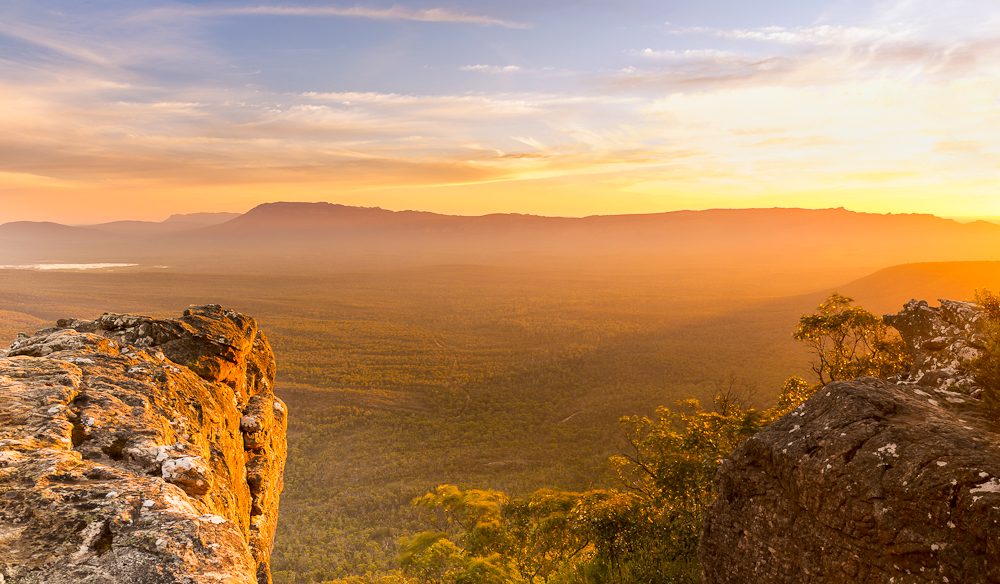
#97 – Noah Beach, Cape Tribulation, Queensland
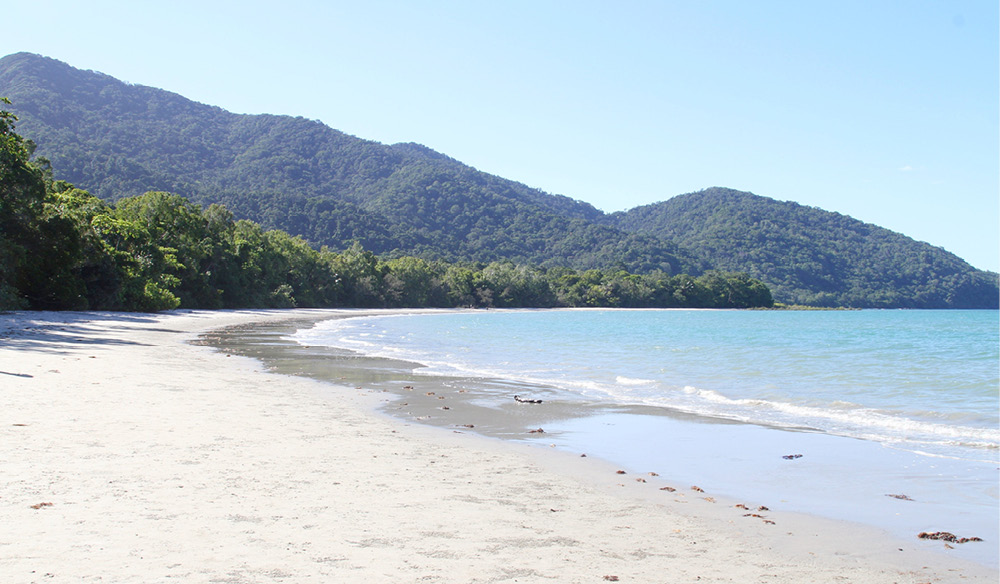
#98 – Crayfish Beach, Hook Island, Queensland
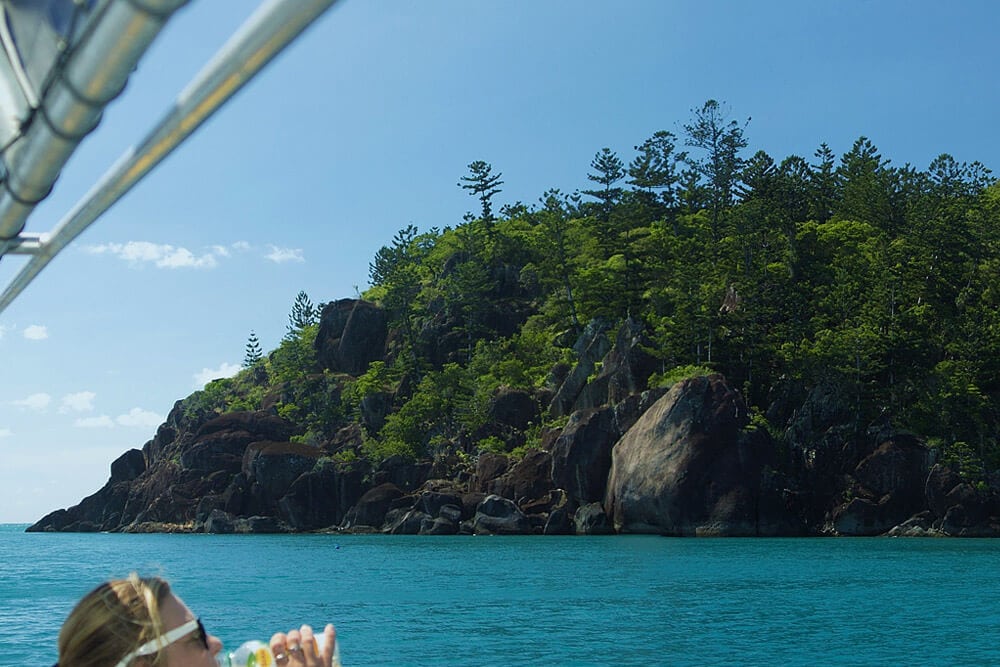
#99 – Memory Cove, Lincoln National Park, South Australia
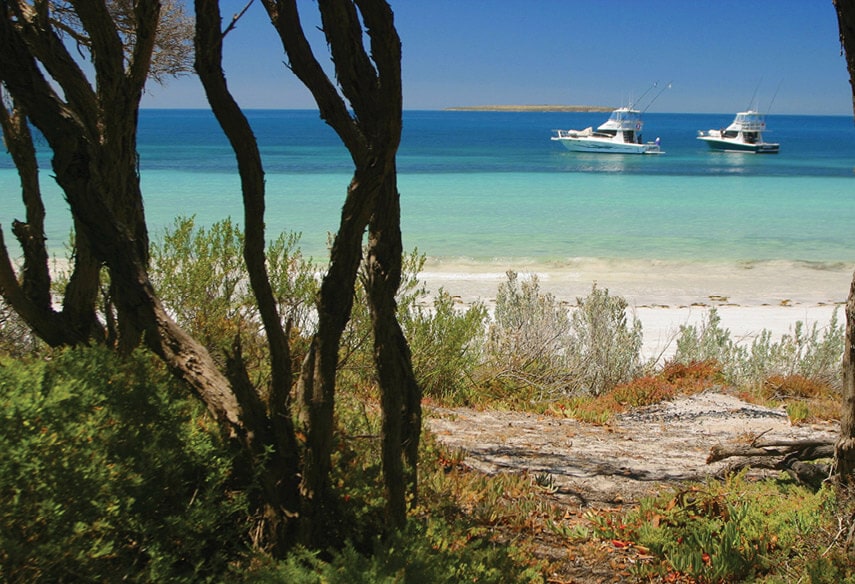
#100 – Dawson Spring Campground, Mt Kaputar National Park, New South Wales
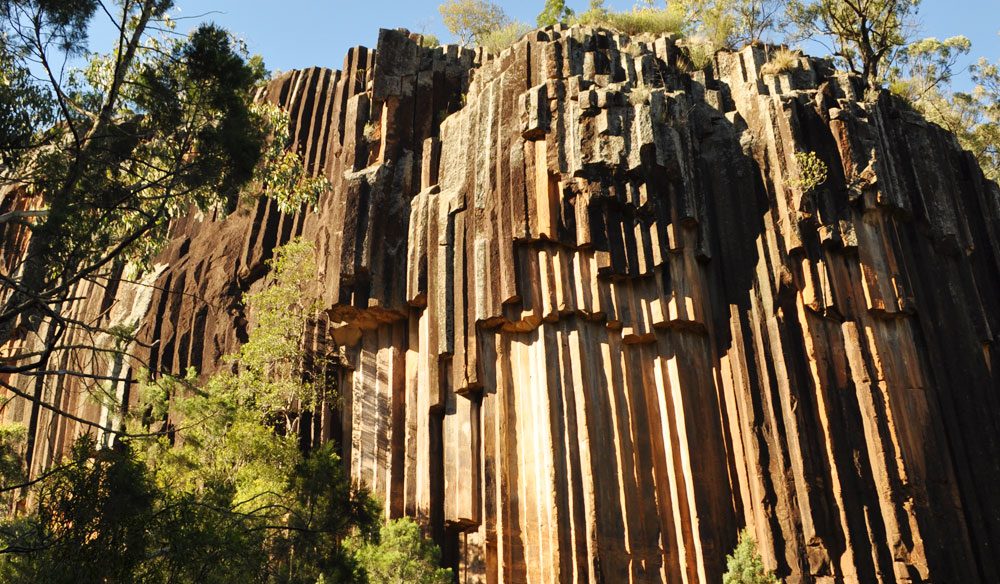
© Australian Traveller Media 2024. All rights reserved.
Academia.edu no longer supports Internet Explorer.
To browse Academia.edu and the wider internet faster and more securely, please take a few seconds to upgrade your browser .
Enter the email address you signed up with and we'll email you a reset link.
- We're Hiring!
- Help Center

Rural tourism in Australia — has the gaze altered? Tracking rural images through film and tourism promotion

2004, International Journal of Tourism Research
Australians' image of themselves and how others view them is embedded in the images presented by contemporary popular media, both domestic and international. Many of these images are rural; however, they are not based on a Romantic rural idyll but, rather, stem from notions of the Australian ‘bush’. The meaning behind these images not only reflects the attitudes and political environment of the day, but also can influence potential tourists' desire to visit the country. By looking at three film versions (spanning almost a century) of the popular Australian bushranging legend, Ned Kelly, and their relationship with tourism images, we can start to consider this relationship. While the Kelly legend is influential in terms of Australian self-image, the images presented in the movies do not correlate with the tourism images of the time. Such dissonance creates confusion in visitors' perceptions and represents lost promotional opportunities possibly even having a negative effect on rural tourism. Copyright © 2004 John Wiley & Sons, Ltd.
Related Papers
Journal of Communication Inquiry
desideria murti
This study contributes to understand the representations of Indonesian rural destinations in tourism media (online and offline) and the social reproduction of the on-site experiences from Australian tourists. The study analyses qualitative data from media produced between 2016 and 2018, online reviews about rural destinations, and full-day participant observations involving Australians. The findings highlight the contested representation of tranquil rice fields and the Indonesians as the exotic locals to be gaze upon for Australians. In conclusion, the framing of Indonesia for Australians expresses the unjust reproductions of tourism media to exercise the existing power relations.
Leanne White
Metro, Special Feature Section on Landscape and Location in Australian Cinema, No.166,
Beverley Seiver
Following recent policy statements recognising the need to develop the Aboriginal tourism industry in New South Wales (NSW), Australia, this article examines the extent of Aboriginal peoples’ inclusion in, and contribution to, the destination images for four regional NSW tourism destinations. Taking the destination image for Lake Macquarie, a local government area with the second largest Aboriginal population in NSW, as a starting point, the paper examines how Aboriginal peoples and cultures are positioned in local tourism promotions. Finding that Aboriginal peoples, cultures and heritage are largely absent from the destination image for Lake Macquarie and that the tourist gaze that is encouraged there is one of whiteness, comparisons are then made with other regional tourism destinations in NSW with relatively high rates of Aboriginal tourism, including Brewarrina, the Blue Mountains and Shoalhaven. Aboriginal tourism in these areas appears to provide visitors with multiple ways of seeing and experiencing place. With contemporary as well as heritage linkages, Aboriginal culture is presented as traditional and living, dynamic and innovative. We argue that by incorporating Aboriginal perspectives, destinations can encourage a multiplicity of gazes, disrupting stereotypes and bringing tourism closer to its social development objectives.
Annals of Tourism Research
Martin Forsey
Tourism Recreation Research
Dean Carson , Andrew Taylor
Outback areas of Australia account for much of the landmass with just 5% of the population, many of whom are Indigenous Australians. Despite tourism being an important industry for Outback economies, it has declined in recent decades prompting a search for new and expanding tourism markets. While Indigenous tourism in the form of visits to Indigenous communities, attractions and sites to obtain the Indigenous ‘experience’ has been pursued it has, along with other niche markets, delivered at best limited and isolated successes. But Indigenous people are themselves highly mobile, making frequent and regular trips away from home. In the past these trips were labelled in a derogatory way as ‘walkabout’. The characteristics of these trips posit them firmly within accepted definitions of tourism but, excepting one study on homelessness, there is a vacuum in research on the potential of people ‘on the move’ as a tourist market. Consequently we do not know the potential size or characterist...
Various interpretations of 'The Man from Snowy River' have played a central role in keeping the Australian bush myth firmly fixed in the national consciousness. The producers of products and services associated with the legend clearly benefit from the telling and retelling of Banjo Paterson’s bush ballad. This article examines the numerous texts of this classic Australian epic and the ways industries such as the entertainment industry, bush clothing, and tourism carefully work to deliberately sustain and nurture the legend. Texts to be examined include the poem, the films, the novel, the television series, advertisements, the 'welcome' sequence performed at the Sydney 2000 Olympic Games, the 'Arena Spectacular', and the 'Australian Outback Spectacular'.
Alicia Boyle
RELATED PAPERS
Richard Price
Paulina Pua Castillo
IRJET Journal
Samanta Suarez
Uma avaliação do governo Lula: o que foi feito, o que faltou
Paulo Roberto de Almeida
Oded Lipschits , Yuval Gadot
Marcello Simonetta
Zsolt Hunyadi
International Journal of Creative Research Thoughts (IJCRT)
Jayeshvary Solanki
Mauricio Neubern
Gender & History 35 (2023), 1-14.
Greta Austin
Valeria Barrios
Biotechnology Techniques
Wayne Curtis
Human Resource Management Journal
Jase Ramsey
Gayatri Balu
IVAN VITO FERRARI
Journal of professional & applied psychology
Kashaf Noor
Marmara Üniversitesi Sosyal Bilimler Enstitüsü
Mehmet Özkan Yıldırım
Proceedings of 1st Electronic Conference on Universe
Rahul Choudhary
JAMA network open
Gunjan Parikh
Millennium Jewelrs
Journal of Mixed Methods Research
Charles Teddlie
RELATED TOPICS
- We're Hiring!
- Help Center
- Find new research papers in:
- Health Sciences
- Earth Sciences
- Cognitive Science
- Mathematics
- Computer Science
- Academia ©2024
Thank you for visiting nature.com. You are using a browser version with limited support for CSS. To obtain the best experience, we recommend you use a more up to date browser (or turn off compatibility mode in Internet Explorer). In the meantime, to ensure continued support, we are displaying the site without styles and JavaScript.
- View all journals
- My Account Login
- Explore content
- About the journal
- Publish with us
- Sign up for alerts
- Open access
- Published: 31 March 2023
The benefits of tourism for rural community development
- Yung-Lun Liu 1 ,
- Jui-Te Chiang 2 &
- Pen-Fa Ko 2
Humanities and Social Sciences Communications volume 10 , Article number: 137 ( 2023 ) Cite this article
23k Accesses
14 Citations
5 Altmetric
Metrics details
- Business and management
- Development studies
While the main benefits of rural tourism have been studied extensively, most of these studies have focused on the development of sustainable rural tourism. The role of tourism contributions to rural community development remains unexplored. Little is known about what tourism contribution dimensions are available for policy-makers and how these dimensions affect rural tourism contributions. Without a clear picture and indication of what benefits rural tourism can provide for rural communities, policy-makers might not invest limited resources in such projects. The objectives of this study are threefold. First, we outline a rural tourism contribution model that policy-makers can use to support tourism-based rural community development. Second, we address several methodological limitations that undermine current sustainability model development and recommend feasible methodological solutions. Third, we propose a six-step theoretical procedure as a guideline for constructing a valid contribution model. We find four primary attributes of rural tourism contributions to rural community development; economic, sociocultural, environmental, and leisure and educational, and 32 subattributes. Ultimately, we confirm that economic benefits are the most significant contribution. Our findings have several practical and methodological implications and could be used as policy-making guidelines for rural community development.
Similar content being viewed by others

Creativity development of tourism villages in Bandung Regency, Indonesia: co-creating sustainability and urban resilience

Eco-tourism, climate change, and environmental policies: empirical evidence from developing economies
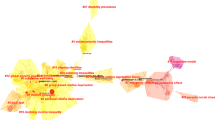
Knowledge mapping of relative deprivation theory and its applicability in tourism research
Introduction.
In many countries, rural areas are less developed than urban areas. They are often perceived as having many problems, such as low productivity, low education, and low income. Other issues include population shifts from rural to urban areas, low economic growth, declining employment opportunities, the loss of farms, impacts on historical and cultural heritage, sharp demographic changes, and low quality of life. These issues indicate that maintaining agricultural activities without change might create deeper social problems in rural regions. Li et al. ( 2019 ) analyzed why some rural areas decline while others do not. They emphasized that it is necessary to improve rural communities’ resilience by developing new tourism activities in response to potential urban demands. In addition, to overcome the inevitability of rural decline, Markey et al. ( 2008 ) pointed out that reversing rural recession requires investment orientation and policy support reform, for example, regarding tourism. Therefore, adopting rural tourism as an alternative development approach has become a preferred strategy in efforts to balance economic, social, cultural, and environmental regeneration.
Why should rural regions devote themselves to tourism-based development? What benefits can rural tourism bring to a rural community, particularly during and after the COVID pandemic? Without a clear picture and answers to these questions, policy-makers might not invest limited resources in such projects. Understanding the contributions of rural tourism to rural community development is critical for helping government and community planners realize whether rural tourism development is beneficial. Policy-makers are aware that reducing rural vulnerability and enhancing rural resilience is a necessary but challenging task; therefore, it is important to consider the equilibrium between rural development and potential negative impacts. For example, economic growth may improve the quality of life and enhance the well-being index. However, it may worsen income inequality, increase the demand for green landscapes, and intensify environmental pollution, and these changes may impede natural preservation in rural regions and make local residents’ lives more stressful. This might lead policy-makers to question whether they should support tourism-based rural development. Thus, the provision of specific information on the contributions of rural tourism is crucial for policy-makers.
Recently, most research has focused on rural sustainable tourism development (Asmelash and Kumar, 2019 ; Polukhina et al., 2021 ), and few studies have considered the contributions of rural tourism. Sustainability refers to the ability of a destination to maintain production over time in the face of long-term constraints and pressures (Altieri et al., 2018 ). In this study, we focus on rural tourism contributions, meaning what rural tourism contributes or does to help produce something or make it better or more successful. More specifically, we focus on rural tourism’s contributions, not its sustainability, as these goals and directions differ. Today, rural tourism has responded to the new demand trends of short-term tourists, directly providing visitors with unique services and opportunities to contact other business channels. The impact on the countryside is multifaceted, but many potential factors have not been explored (Arroyo et al., 2013 ; Tew and Barbieri, 2012 ). For example, the demand for remote nature-based destinations has increased due to the fear of COVID-19 infection, the perceived risk of crowding, and a desire for low tourist density. Juschten and Hössinger ( 2020 ) showed that the impact of COVID-19 led to a surge in demand for natural parks, forests, and rural areas. Vaishar and Šťastná ( 2022 ) demonstrated that the countryside is gaining more domestic tourists due to natural, gastronomic, and local attractions. Thus, they contended that the COVID-19 pandemic created rural tourism opportunities.
Following this change in tourism demand, rural regions are no longer associated merely with agricultural commodity production. Instead, they are seen as fruitful locations for stimulating new socioeconomic activities and mitigating public mental health issues (Kabadayi et al., 2020 ). Despite such new opportunities in rural areas, there is still a lack of research that provides policy-makers with information about tourism development in rural communities (Petrovi’c et al., 2018 ; Vaishar and Šťastná, 2022 ). Although there are many novel benefits that tourism can bring to rural communities, these have not been considered in the rural community development literature. For example, Ram et al. ( 2022 ) showed that the presence of people with mental health issues, such as nonclinical depression, is negatively correlated with domestic tourism, such as rural tourism. Yang et al. ( 2021 ) found that the contribution of rural tourism to employment is significant; they indicated that the proportion of nonagricultural jobs had increased by 99.57%, and tourism in rural communities had become the leading industry at their research site in China, with a value ten times higher than that of agricultural output. Therefore, rural tourism is vital in counteracting public mental health issues and can potentially advance regional resilience, identity, and well-being (López-Sanz et al., 2021 ).
Since the government plays a critical role in rural tourism development, providing valuable insights, perspectives, and recommendations to policy-makers to foster sustainable policies and practices in rural destinations is essential (Liu et al., 2020 ). Despite the variables developed over time to address particular aspects of rural tourism development, there is still a lack of specific variables and an overall measurement framework for understanding the contributions of rural tourism. Therefore, more evidence is needed to understand how rural tourism influences rural communities from various structural perspectives and to prompt policy-makers to accept rural tourism as an effective development policy or strategy for rural community development. In this paper, we aim to fill this gap.
The remainder of this paper is organized as follows: the section “Literature review” presents the literature review. Our methodology is described in the section “Methodology”, and our results are presented in the section “Results”. Our discussion in the section “Discussion/implications” places our findings in perspective by describing their theoretical and practical implications, and we provide concluding remarks in the section “Conclusion”.
Literature review
The role of rural tourism.
The UNWTO ( 2021 ) defined rural tourism as a type of tourism in which a visitor’s experience is related to a wide range of products generally linked to nature-based activity, agriculture, rural lifestyle/culture, angling, and sightseeing. Rural tourism has been used as a valid developmental strategy in rural areas in many developed and developing countries. This developmental strategy aims to enable a rural community to grow while preserving its traditional culture (Kaptan et al., 2020 ). In rural areas, ongoing encounters and interactions between humans and nature occur, as well as mutual transformations. These phenomena take place across a wide range of practices that are spatially and temporally bound, including agriculture, forestry, fishing, hunting, farm tourism, cultural heritage preservation, and country life (Hegarty and Przezbórska, 2005 ). To date, rural tourism in many places has become an important new element of the regional rural economy; it is increasing in importance as both a strategic sector and a way to boost the development of rural regions (Polukhina et al., 2021 ). Urban visitors’ demand for short-term leisure activities has increased because of the COVID-19 pandemic (Slater, 2020 ). Furthermore, as tourists shifted their preferences from exotic to local rural tourism amid COVID-19, Marques et al. ( 2022 ) suggested that this trend is a new opportunity that should be seized, as rural development no longer relies on agriculture alone. Instead, other practices, such as rural tourism, have become opportunities for rural areas. Ironically, urbanization has both caused severe problems in rural areas and stimulated rural tourism development as an alternative means of economic revitalization (Lewis and Delisle, 2004 ). Rural tourism provides many unique events and activities that people who live in urban areas are interested in, such as agricultural festivals, crafts, historical buildings, natural preservation, nostalgia, cuisine, and opportunities for family togetherness and relaxation (Christou, 2020 ; Getz, 2008 ). As rural tourism provides visitors from urban areas with various kinds of psychological, educational, social, esthetic, and physical satisfaction, it has brought unprecedented numbers of tourists to rural communities, stimulated economic growth, improved the viability of these communities, and enhanced their living standards (Nicholson and Pearce, 2001 ). For example, rural tourism practitioners have obtained significant economic effects, including more income, more direct sales, better profit margins, and more opportunities to sell agricultural products or craft items (Everett and Slocum, 2013 ). Local residents can participate in the development of rural tourism, and it does not necessarily depend on external resources. Hence, it provides entrepreneurial opportunities (Lee et al., 2006 ). From an environmental perspective, rural tourism is rooted in a contemporary theoretical shift from cherishing local agricultural resources to restoring the balance between people and ecosystems. Thus, rural land is preserved, natural landscapes are maintained, and green consumerism drives farmers to focus on organic products, green chemistry, and value-added products, such as land ethics (Higham and Ritchie, 2001 ). Therefore, the potential contributions of rural tourism are significant and profound (Marques, 2006 ; Phillip et al., 2010 ). Understanding its contributions to rural community development could encourage greater policy-maker investment and resident support (Yang et al., 2010 ).
Contributions of rural tourism to rural community development
Maintaining active local communities while preventing the depopulation and degradation of rural areas requires a holistic approach and processes that support sustainability. What can rural tourism contribute to rural development? In the literature, rural tourism has been shown to bring benefits such as stimulating economic growth (Oh, 2005 ), strengthening rural and regional economies (Lankford, 1994 ), alleviating poverty (Zhao et al., 2007 ), and improving living standards in local communities (Uysal et al., 2016 ). In addition to these economic contributions, what other elements have not been identified and discussed (Su et al., 2020 )? To answer these questions, additional evidence is a prerequisite. Thus, this study examines the following four aspects. (1) The economic perspective: The clustering of activities offered by rural tourism stimulates cooperation and partnerships between local communities and serves as a vehicle for creating various economic benefits. For example, rural tourism improves employment opportunities and stability, local residents’ income, investment, entrepreneurial opportunities, agricultural production value-added, capital formation, economic resilience, business viability, and local tax revenue (Atun et al., 2019 ; Cheng and Zhang, 2020 ; Choi and Sirakaya, 2006 ; Chong and Balasingam, 2019 ; Cunha et al., 2020 ). (2) The sociocultural perspective: Rural tourism no longer refers solely to the benefits of agricultural production; through economic improvement, it represents a greater diversity of activities. It is important to take advantage of the novel social and cultural alternatives offered by rural tourism, which contribute to the countryside. For example, rural tourism can be a vehicle for introducing farmers to potential new markets through more interactions with consumers and other value chain members. Under such circumstances, the sociocultural benefits of rural tourism are multifaceted. These include improved rural area depopulation prevention (López-Sanz et al., 2021 ), cultural and heritage preservation, and enhanced social stability compared to farms that do not engage in the tourism business (Ma et al., 2021 ; Yang et al., 2021 ). Additional benefits are improved quality of life; revitalization of local crafts, customs, and cultures; restoration of historical buildings and community identities; and increased opportunities for social contact and exchange, which enhance community visibility, pride, and cultural integrity (Kelliher et al., 2018 ; López-Sanz et al., 2021 ; Ryu et al., 2020 ; Silva and Leal, 2015 ). (3) The environmental perspective: Many farms in rural areas have been rendered noncompetitive due to a shortage of labor, poor managerial skills, and a lack of financial support (Coria and Calfucura, 2012 ). Although there can be immense pressure to maintain a farm in a family and to continue using land for agriculture, these problems could cause families to sell or abandon their farms or lands (Tew and Barbieri, 2012 ). In addition, unless new income pours into rural areas, farm owners cannot preserve their land and its natural aspects; thus, they tend to allow their land to become derelict or sell it. In the improved economic conditions after farms diversify into rural tourism, rural communities have more money to provide environmental care for their natural scenic areas, pastoral resources, forests, wetlands, biodiversity, pesticide mitigation, and unique landscapes (Theodori, 2001 ; Vail and Hultkrantz, 2000 ). Ultimately, the entire image of a rural community is affected; the community is imbued with vitality, and farms that participate in rural tourism instill more togetherness among families and rural communities. In this study, the environmental benefits induced by rural tourism led to improved natural environmental conservation, biodiversity, environmental awareness, infrastructure, green chemistry, unspoiled land, and family land (Di and Laura, 2021 ; Lane, 1994 ; Ryu et al., 2020 ; Yang et al., 2021 ). (4) The leisure and educational perspective: Rural tourism is a diverse strategy associated with an ongoing flow of development models that commercialize a wide range of farming practices for residents and visitors. Rural territories often present a rich set of unique resources that, if well managed, allow multiple appealing, authentic, and memorable tourist experiences. Tourists frequently comment that the rural tourism experience positively contrasts with the stress and other negatively perceived conditions of daily urban life. This is reflected in opposing, compelling images of home and a visited rural destination (Kastenholz et al., 2012 ). In other words, tourists’ positive experiences result from the attractions and activities of rural tourism destinations that may be deemed sensorially, symbolically, or socially opposed to urban life (Kastenholz et al. 2018 ). These experiences are associated with the “search for authenticity” in the context of the tension between the nostalgic images of an idealized past and the demands of stressful modern times. Although visitors search for the psychological fulfillment of hedonic, self-actualization, challenge, accomplishment, exploration, and discovery goals, some authors have uncovered the effects of rural tourism in a different context. For example, Otto and Ritchie ( 1996 ) revealed that the quality of a rural tourism service provides a tourist experience in four dimensions—hedonic, peace of mind, involvement, and recognition. Quadri-Felitti and Fiore ( 2013 ) identified the relevant impact of education, particularly esthetics, versus memory on satisfaction in wine tourism. At present, an increasing number of people and families are seeking esthetic places for relaxation and family reunions, particularly amid COVID-19. Rural tourism possesses such functions; it remains a novel phenomenon for visitors who live in urban areas and provides leisure and educational benefits when visitors to a rural site contemplate the landscape or participate in an agricultural process for leisure purposes (WTO, 2020 ). Tourists can obtain leisure and educational benefits, including ecological knowledge, information about green consumerism, leisure and recreational opportunities, health and food security, reduced mental health issues, and nostalgia nurturing (Alford and Jones, 2020 ; Ambelu et al., 2018 ; Christou, 2020 ; Lane, 1994 ; Li et al., 2021 ). These four perspectives possess a potential synergy, and their effects could strengthen the relationship between rural families and rural areas and stimulate new regional resilience. Therefore, rural tourism should be understood as an enabler of rural community development that will eventually attract policy-makers and stakeholders to invest more money in developing or advancing it.
Methodology
The literature on rural tourism provides no generally accepted method for measuring its contributions or sustainability intensity. Although many statistical methods are available, several limitations remain, particularly in terms of the item generation stage and common method bias (CMB). For example, Marzo-Navar et al. ( 2015 ) used the mean and SD values to obtain their items. However, the use of the mean has been criticized because it is susceptible to extreme values or outliers. In addition, they did not examine omitted variables and CMB. Asmelash and Kumar ( 2019 ) used the Delphi method with a mean value for deleting items. Although they asked experts to suggest the inclusion of any missed variables, they did not discuss these results. Moreover, they did not assess CMB. Islam et al. ( 2021 ) used a sixteen-step process to formulate sustainability indicators but did not consider omitted variables, a source of endogeneity bias. They also did not designate a priority for each indicator. Although a methodologically sound systematic review is commonly used, little attention has been given to reporting interexpert reliability when multiple experts are used to making decisions at various points in the screening and data extraction stages (Belur et al., 2021 ). Due to the limitations of the current methods for assessing sustainable tourism development, we aim to provide new methodological insights. Specifically, we suggest a six-stage procedure, as shown in Fig. 1 .
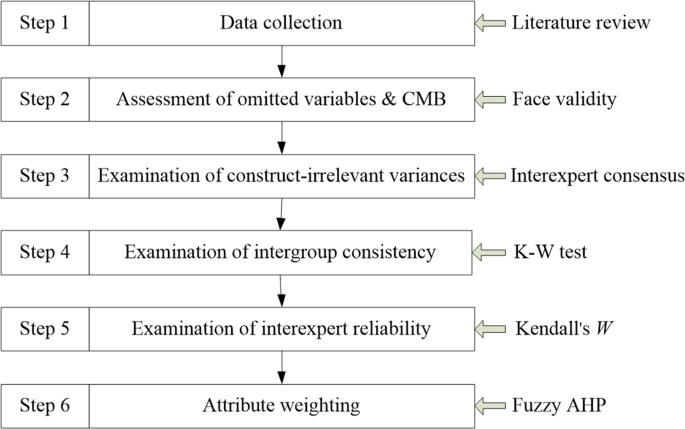
Steps required in developing the model for analysis after obtaining the data.
Many sources of data collection can be used, including literature reviews, inferences about the theoretical definition of the construct, previous theoretical and empirical research on the focal construct, advice from experts in the field, interviews, and focus groups. In this study, the first step was to retrieve data from a critical literature review. The second step was the assessment of omitted variables to produce items that fully captured all essential aspects of the focal construct domain. In this case, researchers must not omit a necessary measure or fail to include all of the critical dimensions of the construct. In addition, the stimuli of CMB, for example, double-barreled items, items containing ambiguous or unfamiliar terms, and items with a complicated syntax, should be simplified and made specific and concise. That is, researchers should delete items contaminated by CMB. The third step was the examination of construct-irrelevant variance to retain the variances relevant to the construct of interest and minimize the extent to which the items tapped concepts outside the focal construct domain. Variances irrelevant to the targeted construct should be deleted. The fourth step was to examine intergroup consistency to ensure that there was no outlier impact underlying the ratings. The fifth step was to examine interexpert reliability to ensure rating conformity. Finally, we prioritized the importance of each variable with the fuzzy analytic hierarchy process (AHP), which is a multicriteria decision-making approach. All methods used in this study are expert-based approaches.
Selection of experts
Because this study explores the contributions of rural tourism to rural community development, it involves phenomena in the postdevelopment stage; therefore, a few characteristics are essential for determining the choice of experts. The elements used to identify the experts in this study were (1) the number of experts, (2) expertise, (3) knowledge, (4) diversity, (5) years working in this field, and 5) commitment to participation. Regarding the number of experts, Murphy-Black et al. ( 1998 ) suggested that the more participants there are, the better, as a higher number reduces the effects of expert attrition and rater bias. Taylor-Powell ( 2002 ) pointed out that the number of participants in an expert-based study depends not only on the purpose of the research but also on the diversity of the target population. Okoli and Pawlowski ( 2004 ) recommended a target number of 10–18 experts for such a purpose. Therefore, we recruited a group of 18 experts based on their stated interest in the topic and asked them to comment on our rationale concerning the rating priorities among the items. We asked them to express a degree of agreement or disagreement with each item we provided. We adopted a heterogeneous and anonymous arrangement to ensure that rater bias did not affect this study. The 18 experts had different backgrounds, which might have made it easier for them to reach a consensus objectively. We divided the eighteen experts into three subgroups: (1) at least six top managers from rural tourism businesses, all of whom had been in the rural tourism business for over 10 years; (2) at least six academics who taught subjects related to tourism at three different universities in Taiwan; and (3) at least six government officials involved in rural development issues in Taiwan.
Generating items to represent the construct
Step 1: data collection.
Data collection provides evidence for investigation and reflects the construct of interest. While there is a need to know what rural tourism contributes, previous studies have provided no evidence for policy-makers to establish a rural community strategy; thus, it is essential to use a second source to achieve this aim. We used a literature review for specific topics; the data we used were based on the findings being presented in papers on rural tourism indexed in the SSCI (Social Sciences Citation Index) and SCIE (Science Citation Index Expanded). In this study, we intended to explore the role of rural tourism and its contributions to rural development. Therefore, we explored the secondary literature on the state of the questions of rural development, sustainable development, sustainability indicators, regional resilience, farm tourism, rural tourism, COVID-19, tourist preferences, and ecotourism using terms such as land ethics, ecology, biodiversity, green consumerism, environmentalism, green chemistry, community identity, community integration, community visibility, and development goals in an ad hoc review of previous studies via Google Scholar. Based on the outcomes of this first data collection step, we generated thirty-three subattributes and classified them into four domains.
Step 2: Examine the face validity of omitted variables and CMB
Face validity is defined as assessing whether a measurement scale or questionnaire includes all the necessary items (Dempsey and Dempsey, 1992 ). Based on the first step, we generated data subattributes from our literature review. However, there might have been other valuable attributes or subattributes that were not considered or excluded. Therefore, our purposes for examining face validity were twofold. First, we assessed the omitted variables, defined as the occurrence of crucial aspects or facets that were omitted (Messick, 1995 ). These comprise a threat to construct validity that, if ignored by researchers, might result in unreliable findings. In other words, face validity is used to distinguish whether the researchers have adequately captured the full dimensions of the construct of interest. If not, the evaluation instrument or model is deficient. However, the authors found that most rural tourism studies have not assessed the issue of omitted variables (An and Alarcon, 2020 ; Lin, 2022 ). Second, we mitigated the CMB effect. In a self-report survey, it is necessary to provide a questionnaire without CMB to the targeted respondents, as CMB affects respondent comprehension. Therefore, we assessed item characteristic effects, item context effects, and question response process effects. These three effects are related to the respondents’ understanding, retrieval, mood, affectivity, motivation, judgment, response selection, and response reporting (Podsakoff et al., 2003 ). Specifically, items containing flaws from these three groups in a questionnaire can seriously influence an empirical investigation and potentially result in misleading conclusions. We assessed face validity by asking all the experts to scrutinize the content items that we collected from the literature review and the questionnaire that we drafted. The experts could then add any attribute or subattribute they thought was essential that had been omitted. They could also revise the questionnaire if CMB were embedded. We added the new attributes or subattributes identified by the experts to those collected from the literature review.
Step 3: Examine interexpert consensus for construct-irrelevant variances
After examining face validity, we needed to rule out items irrelevant to the construct of interest; otherwise, the findings would be invalid. We examined the interexpert consensus to achieve this aim. The purpose was to estimate the experts’ ratings of each item. In other words, interexpert consensus assesses the extent to which experts make the same ratings (Kozlowski and Hattrup, 1992 ; Northcote et al., 2008 ). In prior studies, descriptive statistics have often been used to capture the variability among individual characteristics, responses, or contributions to the subject group (Landeta, 2006 ; Roberson et al., 2007 ). Many expert-based studies have applied descriptive statistics to determine consensus and quantify its degree (Paraskevas and Saunders, 2012 ; Stewart et al., 2016 ). Two main groups of descriptive statistics, central tendencies (mode, mean, and median) and level of dispersion (standard deviation, interquartile, and coefficient of variation), are commonly used when determining consensus (Mukherjee et al., 2015 ). Choosing the cutoff point of interexpert consensus was critical because we used it as a yardstick for item retention and its value can also be altered by a number on the Likert scale (Förster and von der Gracht, 2014 ). In the case of a 5-point Likert scale, the coefficient of variation (CV) is used to measure interexpert consensus. Hence, CV ≤ 0.3 indicated high consensus (Zinn et al., 2001 ). In addition, based on the feedback obtained from the expert panel, we used standard deviation (SD) as another measurement to assess the variation in our population. Henning and Jordaan ( 2016 ) indicate that SD ≤ 1 represents a high level of consensus, meaning that it can act as a guideline for cutoff points. In addition, following Vergani et al. ( 2022 ), we used the percentage agreement (% AGR) to examine interexpert consensus. If the responses reached ≧ 70% 4 and 5 in the case of a 5-point Likert scale, it indicated that the item had interexpert consensus; thus, we could retain it. Moreover, to avoid the impact of outliers, we used the median instead of the mean as another measurement. Items had a high consensus if their median value was ≥4.00 (Rice, 2009 ). Considering these points, we adopted % AGR, median, SD, and CV to examine interexpert consensus.
Step 4: Examine intergroup consistency
In this expert-based study, the sample size was small. Any rater bias could have caused inconsistency among the subgroups of experts; therefore, we needed to examine the effect of rater bias on intergroup consistency. When the intergroup ratings showed substantially different distributions, the aggregated data were groundless. Dajani et al. ( 1979 ) remarked that interexpert consensus is meaningless if the consistency of responses in a study is not reached, as it means that any rater bias could distort the median, SD, or CV. Most studies have used one-way ANOVA to determine whether there is a significant difference between the expected and observed frequency in three or more categories. However, this method is based on large sample size and normal distribution. In the case of expert-based studies, the expert sample size is small, and the assessment distribution tends to be skewed. Thus, we used the nonparametric test instead of one-way ANOVA for consistency measurement (Potvin and Roff, 1993 ). We used the Kruskal‒Wallis test (K–W) to test the intergroup consistency among the three subgroups of experts. The purpose of the K–W test is to determine whether there are significant differences among three or more subgroups regarding the ratings of the domains (Huck, 2004 ). The judgment criteria in the K-W test depended on the level of significance, and we set the significance level at p < 0.05 (Love and Irani, 2004 ), with no significant differences among groups set at p > 0.05 (Loftus et al., 2000 ; Rice, 2009 ). We used SPSS to conduct the K–W test to assess intergroup consistency in this study.
Step 5: Examine interexpert reliability
Interexpert reliability, on the one hand, is usually defined as the proportion of systematic variance to the total variance in ratings (James et al., 1984 ). On the other hand, interexpert reliability estimation is not concerned with the exact or absolute value of ratings. Rather, it measures the relative ordering or ranking of rated objects. Thus, interexpert reliability estimation concerns the consistency of ratings (Tinsley and Weiss, 1975 ). If an expert-based study did not achieve interexpert reliability, we could not trust its analysis (Singletary, 1994 ). Thus, we examined interexpert reliability in this expert-based study. Many methods are available in the literature for measuring interexpert reliability, but there seems to be little consensus on a standard method. We used Kendall’s W to assess the reliability among the experts for each sample group (Goetz et al., 1994 ) because it was available for any sample size or ordinal number. If W was 1, all the experts were unanimous, and each had assigned the same order to the list of objects or concerns. As Spector et al. ( 2002 ) and Schilling ( 2002 ) suggested, reliabilities well above the recommended value of .70 indicate sufficient internal reliability. In this study, there was a strong consensus when W > 0.7. W > 0.5 represented a moderate consensus; and W < 0.3 indicated weak interexpert agreement (Schmidt et al., 2001 ). To measure Kendall’s W , we used SPSS 23 to assess interexpert reliability.
Step 6: Examine the fuzzy analytic hierarchy process
After examining face validity, interexpert consensus, intergroup consistency, and interexpert reliability, we found that the aggregated items were relevant, authentic, and reliable in relation to the construct of interest. To provide policy-makers with a clear direction regarding which contributions are more or less important, we scored each attribute and subattribute using a multicriteria decision-making technique. Fuzzy AHP is a well-known decision-making tool for modeling unstructured problems. It enables decision-makers to model a complex issue in a hierarchical structure that indicates the relationships between the goal, criteria, and subcriteria on the basis of scores (Park and Yoon, 2011 ). The fuzzy AHP method tolerates vagueness and ambiguity (Mikhailov and Tsvetinov, 2004 ). In other words, fuzzy AHP can capture a human’s appraisal of ambiguity when considering complex, multicriteria decision-making problems (Erensal et al., 2006 ). In this study, we used Power Choice 2.5 software to run fuzzy AHP, determine weights, and develop the impact structure of rural tourism on sustainable rural development.
Face validity
To determine whether we had omitted variables, we asked all 18 experts to scrutinize our list of four attributes and 33 subattributes for omitted variables and determine whether the questionnaire contained any underlying CMB. We explained the meaning of omitted variables, the stimuli of CMB, and the two purposes of examining face validity to all the experts. In their feedback, the eighteen experts added one item as an omitted variable: business viability. The experts suggested no revisions to the questionnaire we had drafted. These results indicated that one omitted variable was revealed and that our prepared questionnaire was clear, straightforward, and understandable. The initially pooled 34 subattributes represented the construct of interest, and all questionnaires used for measurement were defendable in terms of CMB. The biasing effects of method variance did not exist, indicating that the threat of CMB was minor.
Interexpert consensus
In this step, we rejected any items irrelevant to the construct of interest. Consensus measurement played an essential role in aggregating the experts’ judgments. This study measured the AGR, median, SD, and CV. Two items, strategic alliance (AGR = 50%) and carbon neutrality (AGR = 56%) were rated < 70%, and we rejected them accordingly. These results are shown in Table 1 . The AGR, median, SD, and CV values were all greater than the cutoff points, thus indicating that the majority of experts in this study consistently recognized high values and reached a consensus for the rest of the 32 subattributes. Consequently, the four attributes and 32 subattributes remained and were initially identified as determinants for further analysis.
Intergroup consistency and interexpert reliability
In this study, with scores based on a 5-point Likert scale, we conducted the K–W test to assess intergroup differences for each subattribute. Based on the outcomes, the K–W test yielded significant results for all 32 subattributes; all three groups of experts reached consistency at p > 0.05. This result indicated that no outlier or extreme value underlay the ratings, and therefore, intergroup consistency was reached. Finally, we measured interexpert reliability with Kendall’s W . The economic perspective was W = 0.73, the sociocultural perspective was W = 0.71, the environmental perspective was W = 0.71, and the leisure and educational perspective was W = 0.72. These four groups of W were all ≧ 0.7, indicating high reliability for the ranking order and convergence judged by all subgroup experts. These results are shown in Table 2 .
The hierarchical framework
The results of this study indicate that rural tourism contributions to rural community development comprise four attributes and thirty-two subattributes. The economic perspective encompasses nine subattributes and is weighted at w = 0.387. In addition, rural tourism has long been considered a possible means of sociocultural development and regeneration of rural areas, particularly those affected by the decline in traditional rural
activities, agricultural festivals, and historical buildings. According to the desired benefits, the sociocultural perspective encompasses nine subattributes and is weighted at w = 0.183. Moreover, as rural tourism can develop on farms and locally, its contribution to maintaining and enhancing environmental regeneration and protection is significant. Therefore, an environmental perspective can determine rural tourism’s impact on pursuing environmental objectives. Our results indicate that the environmental perspective encompasses seven subattributes and that its weight is w = 0.237. Furthermore, the leisure and educational perspective indicates the attractiveness of rural tourism from visitors’ viewpoint and their perception of a destination’s value and contributions. These results show that this perspective encompasses seven subattributes and is weighted at w = 0.193. This specific contribution model demonstrates a 3-level hierarchical structure, as shown in Fig. 2 . The scores for each criterion could indicate each attribute’s importance and explain the priority order of the groups. Briefly, the critical sequence of each measure in the model at Level 2 is as follows: economic perspective > environmental perspective > leisure and educational perspective > sociocultural perspective. Since scoring and ranking were provided by 18 experts from three different backgrounds and calculated using fuzzy AHP, our rural tourism contribution model is established. It can provide policy-makers with information on the long-term benefits and advantages following the completion of excellent community development in rural areas.
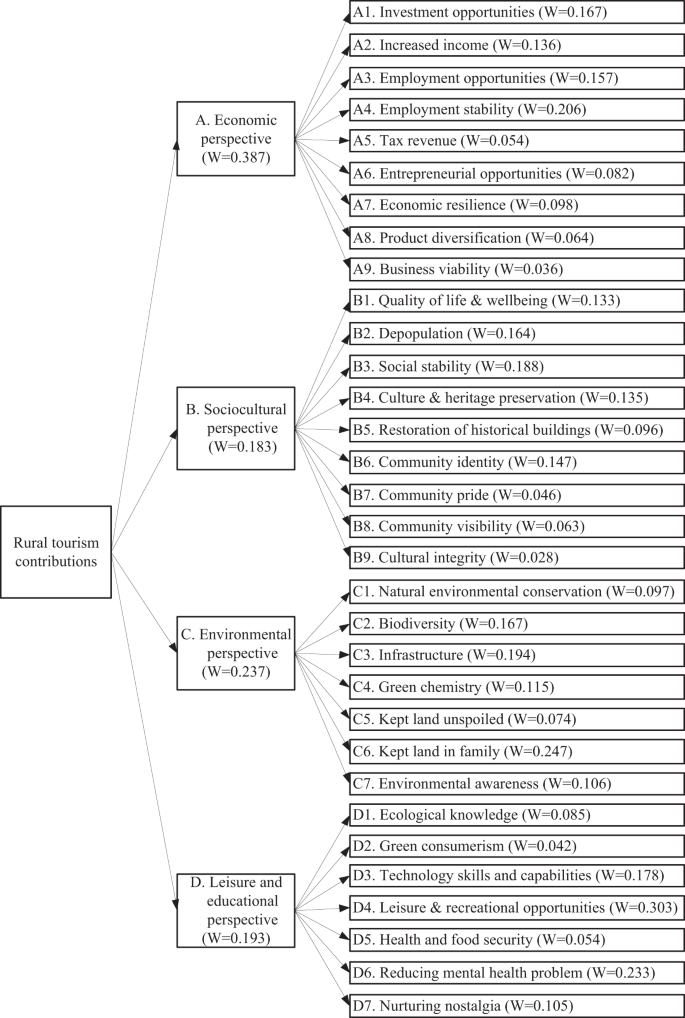
The priority index of each attribute and sub-attribute.
Discussion/Implications
In the era of sustainable rural development, it is vital to consider the role of rural tourism and how research in this area shapes access to knowledge on rural community development. This study provides four findings based on the increasing tendency of policy-makers to use such information to shape their policy-making priorities. It first shows that the demand for rural tourism has soared, particularly during COVID-19. Second, it lists four significant perspectives regarding the specific contributions of rural tourism to rural community development and delineates how these four perspectives affect rural tourism development. Our findings are consistent with those of prior studies. For example, geography has been particularly important in the rural or peripheral tourism literature (Carson, 2018 ). In terms of the local geographical context, two contributions could be made by rural tourism. The first stems from the environmental perspective. When a rural community develops rural tourism, environmental protection awareness is increased, and the responsible utilization of natural resources is promoted. This finding aligns with Lee and Jan ( 2019 ). The second stems from the leisure and educational perspective. The geographical context of a rural community, which provides tourists with geographical uniqueness, advances naturally calming, sensory-rich, and emotion-generating experiences for tourists. These results suggest that rural tourism will likely positively impact tourists’ experience. This finding is consistent with Kastenhoz et al. ( 2020 ). Third, although expert-based approaches have considerable benefits in developing and testing underlying phenomena, evidence derived from interexpert consensus, intergroup consistency, and interexpert reliability has been sparse. This study provides such evidence. Fourth, this research shows that rural tourism makes four main contributions, economic, sociocultural, environmental, leisure, and educational, to rural community development. Our results show four key indicators at Level 2. The economic perspective is strongly regarded as the most important indicator, followed by the environmental perspective, leisure and educational perspective, and sociocultural perspective, which is weighted as the least important. The secondary determinants of contributions have 32 subindicators at Level 3: each was identified and assigned a different weight. These results imply that the attributes or subattributes with high weights have more essential roles in understanding the contributions of rural tourism to rural community development. Policy-makers can use these 32 subindicators to formulate rural tourism development policies or strategies.
This study offers the following five practical implications for policymakers and rural communities:
First, we argue that developing rural tourism within a rural community is an excellent strategy for revitalization and countering the effects of urbanization, depopulation, deforestation, and unemployment.
Second, our analytical results indicate that rural tourism’s postdevelopment contribution is significant from the economic, sociocultural, environmental, leisure, and educational perspectives, which is consistent with Lee and Jan ( 2019 ).
Third, there is an excellent opportunity to build or invest more in rural tourism during COVID-19, not only because of the functions of rural tourism but also because of its timing. Many prior studies have echoed this recommendation. For example, Yang et al. ( 2021 ) defined rural tourism as the leading industry in rural areas, offering an output value ten times higher than that of agriculture in China. In addition, rural tourism has become more attractive to urban tourists amid COVID-19. Vaishar and Šťastná ( 2022 ) suggested that the COVID-19 pandemic created a strong demand for rural tourism, which can mitigate threats to public mental health, such as anxiety, depression, loneliness, isolation, and insomnia. Marques et al. ( 2022 ) showed that tourists’ preference for tourism in rural areas increased substantially during COVID-19.
Fourth, the contributions of this study to policy development are substantial. The more focused rural tourism in rural areas is, the more effective revitalization becomes. This finding highlights the importance of such features in developing rural tourism to enhance rural community development from multiple perspectives. This finding echoes Zawadka et al. ( 2022 ); i.e., policy-makers should develop rural tourism to provide tourists with a safe and relaxed environment and should not ignore the value of this model for rural tourism.
Fifth, our developed model could drive emerging policy issues from a supporting perspective and provide policy-makers with a more comprehensive overview of the development of the rural tourism sector, thus enabling them to create better policies and programs as needed. For example, amid COVID-19, rural tourism created a safe environment for tourists, mainly by reducing their fears of contamination (Dennis et al., 2021 ). This novel contribution that rural tourism destinations can provide to residents and visitors from other places should be considered and built into any rural community development policy.
This study also has the following four methodological implications for researchers:
First, it addresses methodological limitations that still impede tourism sustainability model development. Specifically, we suggest a six-stage procedure as the guideline; it is imperative that rural tourism researchers or model developers follow this procedure. If they do not, their findings tend to be flawed.
Second, to ensure that collected data are without extraneous interference or differences via subgroups of experts, the assessment of intergroup consistency with the K–W test instead of one-way ANOVA is proposed, especially in small samples and distribution-free studies.
Third, providing interexpert reliability evidence within expert-based research is critical; we used Kendall’s W to assess the reliability among experts for each sample group because it applies to any sample size and ordinal number.
Finally, we recommend using fuzzy AHP to establish a model with appropriate indicators for decision-making or selection. This study offers novel methodological insights by estimating a theoretically grounded and empirically validated rural tourism contribution model.
There are two limitations to this study. First, we examine all subattributes by interexpert consensus to delete construct-irrelevant variances that might receive criticism for their lack of statistical rigor. Future studies can use other rigorous methods, such as AD M( j ) or rWG ( j ) , interexpert agreement indices to assess and eliminate construct-irrelevant variances. Second, we recommend maximizing rural tourism contributions to rural community development by using the general population as a sample to identify any differences. More specifically, we recommend using Cronbach’s alpha, confirmatory factor analysis (CFA), and structural equation modeling (SEM) to test the overall reliability and validity of the data and results. It is also necessary to provide results for goodness-of-fit measures—e.g., the goodness-of-fit index (GFI), adjusted goodness-of-fit index (AGFI), comparative fit index (CFI), normed fit index (NFI), Tucker–Lewis Index (TLI), standardized root mean square residual (SRMR), or root mean square error of approximation (RMSEA).
Numerous empirical studies have illustrated how rural tourism can positively and negatively affect the contexts in rural areas where it is present. This study reveals the positive contributions of rural tourism to rural community development. The findings show that using rural tourism as a revitalization strategy is beneficial to nonurban communities in terms of their economic, sociocultural, environmental, and leisure and educational development. The contribution from the economic perspective is particularly important. These findings suggest that national, regional, and local governments or community developers should make tourism a strategic pillar in their policies for rural development and implement tourism-related development projects to gain 32 benefits, as indicated in Fig. 2 . More importantly, rural tourism was advocated and proved effective for tourists and residents to reduce anxiety, depression, or insomnia during the COVID-19 pandemic. With this emerging contribution, rural tourism is becoming more critical to tourists from urban areas and residents involved in rural community development. With this model, policy-makers should not hesitate to develop or invest more in rural communities to create additional tourism-based activities and facilities. As they could simultaneously advance rural community development and public mental health, policy-makers should include these activities among their regional resilience considerations and treat them as enablers of sustainable rural development. We conclude that amid COVID-19, developing rural tourism is an excellent strategy for promoting rural community development and an excellent alternative that could counteract the negative impacts of urbanization and provide stakeholders with more positive interests. The proposed rural tourism contribution model also suggests an unfolding research plan.
Data availability
The datasets generated and/or analyzed during the current study are available from the corresponding author on reasonable request.
Alford P, Jones R (2020) The lone digital tourism entrepreneur: Knowledge acquisition and collaborative transfer. Tour Manag 81:104–139. https://doi.org/10.1016/j.tourman.2020.104139
Article Google Scholar
Altieri MA, Farrell JG, Hecht SB, Liebman M, Magdoff F et al (2018) The agroecosystem: determinants, resources, processes, and sustainability. Agroecology 41–68. https://doi.org/10.1201/9780429495465-3
Ambelu G, Lovelock B, Tucker H (2018) Empty bowls: conceptualising the role of tourism in contributing to sustainable rural food security. J Sustain Tour 26(10):1749–1765. https://doi.org/10.1080/09669582.2018.1511719
An W, Alarcon S (2020) How can rural tourism be sustainable? A systematic review. Sustainability 12(18):7758. https://doi.org/10.3390/su12187758
Arroyo C, Barbieri C, Rich SR (2013) Defining agritourism: a comparative study of stakeholders’ perceptions in Missouri and North Carolina. Tour Manag 37:39–47. https://doi.org/10.1016/j.tourman.2012.12.007
Asmelash AG, Kumar S (2019) Assessing progress of tourism sustainability: Developing and validating sustainability indicators. Tour Manag 71:67–83. https://doi.org/10.1016/j.tourman.2018.09.020
Atun RA, Nafa H, Türker ÖO (2019) Envisaging sustainable rural development through ‘context-dependent tourism’: case of Northern Cyprus. Environ Dev Sustain 21:1715–1744. https://doi.org/10.1007/s10668-018-0100-8
Belur J, Tompson L, Thornton A, Simon M (2021) Interrater reliability in systematic review methodology: exploring variation in coder decision-making. Sociol Methods Res 50(2):837–865. https://doi.org/10.1177/0049124118799372
Article MathSciNet Google Scholar
Carson DA (2018) Challenges and opportunities for rural tourism geographies: a view from the ‘boring’ peripheries. Tour Geogr 20(4):737–741. https://doi.org/10.1080/4616688.2018.1477173
Cheng L, Zhang J (2020) Is tourism development a catalyst of economic recovery following natural disaster? An analysis of economic resilience and spatial variability. Curr Issues Tour 1–22. https://doi.org/10.1080/13683500.2019.1711029
Choi H-SC, Sirakaya E (2006) Sustainability indicators for managing community tourism. Tour Manag 27(6):1274–1289. https://doi.org/10.1016/j.tourman.2005.05.018
Chong KY, Balasingam AS (2019) Tourism sustainability: economic benefits and strategies for preservation and conservation of heritage sites in Southeast Asia. Tour Rev 74(2):268–279. https://doi.org/10.1108/TR-11-2017-0182
Christou PA (2020) Tourism experiences as the remedy to nostalgia: conceptualizing the nostalgia and tourism nexus. Curr Issues Tour 23(5):612–625. https://doi.org/10.1080/13683500.2018.1548582
Coria J, Calfucura E (2012) Ecotourism and the development of indigenous communities: the good, the bad and the ugly. Ecol Econ 73(15):47–55. https://doi.org/10.1016/j.ecolecon.2011.10.024
Cunha C, Kastenholz E, Carneiro MJ (2020) Entrepreneurs in rural tourism: do lifestyle motivations contribute to management practices that enhance sustainable entrepreneurial ecosystems? J Hosp Tour Manag 44:215–226. https://doi.org/10.1016/j.jhtm.2020.06.007
Dajani JS, Sincoff MZ, Talley WK (1979) Stability and agreement criteria for the termination of Delphi studies. Technol Forecast Soc Change 13(1):83–90. https://doi.org/10.1016/0040-1625(79)90007-6
Dempsey PA, Dempsey AD (1992) Nursing research with basic statistical applications, 3rd edn. Jones and Bartlett, Boston
Google Scholar
Dennis D, Radnitz C, Wheaton MG (2021) A perfect storm? Health anxiety, contamination fears, and COVID-19: lessons learned from past pandemics and current challenges. Int J Cogn Ther 14:497–513. https://doi.org/10.1007/s41811-021-00109-7
Article PubMed PubMed Central Google Scholar
Di TF, Laura M (2021) How green possibilities can help in a future sustainable conservation of cultural heritage in Europe. Sustainability 13(7):3609. https://doi.org/10.3390/su13073609
Erensal YC, ncan TÖ, Demircan ML (2006) Determining key capabilities in technology management using fuzzy analytic hierarchy process: a case study of Turkey. Inf Sci 176(18):2755–2770. https://doi.org/10.1016/j.ins.2005.11.004
Everett S, Slocum SL (2013) Food and tourism: an effective partnership? A UK-based review. J Sustain Tour 21(6):789–809. https://doi.org/10.1080/09669582.2012.741601
Förster B, von der Gracht H (2014) Assessing Delphi panel composition for strategic foresight—a comparison of panels based on company-Internal and external participants. Technol Forecast Soc Change 84:215–229. https://doi.org/10.1016/.techfore.2013.07.012
Getz D (2008) Event tourism: definition, evolution and research. Tour Manag 29(3):403–428. https://doi.org/10.1016/j.tourman.2007.07.017
Goetz CG, Stebbins GT, Shale HM, Lang AE, Chernik DA, Chmura TA, Ahlskog JE, Dorflinger EE (1994) Utility of an objective dyskinesia rating scale for Parkinson’s disease: inter- and intrarater reliability assessment. Mov Disord 9(4):390–394. https://doi.org/10.1002/mds.870090403
Article CAS PubMed Google Scholar
Hegarty C, Przezborska L (2005) Rural and agri-tourism as a tool for reorganizing rural areas in old and new member states—a comparison study of Ireland and Poland. Int J Tour Res 7(2):63–77. https://doi.org/10.1002/jtr.513
Henning JIF, Jordaan H (2016) Determinants of financial sustainability for farm credit applications—a Delphi study. Sustainability 8(1):77. https://doi.org/10.3390/su8010077
Higham JES, Ritchie B (2001) The evolution of festivals and other events in rural Southern New Zealand. Event Manag 7(1):39–49. https://doi.org/10.3727/152599501108751461
Huck SW (2004) Reading statistics and research, 4th edn. Allyn and Bacon, Boston
Islam MS, Lovelock B, Coetzee WJL (2021) Liberating sustainability indicators: developing and implementing a community-operated tourism sustainability indicator system in Boga Lake, Bangladesh. J Sustain Tour. https://doi.org/10.1080/09669582.2021.1928147
James LR, Demaree RG, Wolf G (1984) Estimating within-group interrater reliability with and without response bias. J Appl Psychol 69(1):322–327. https://doi.org/10.1037/0021-9010.69.1.85
Juschten M, Hössinger R (2020) Out of the city - But how and where? A mode-destination choice model for urban–rural tourism trips in Austria. Curr Issues Tour 24(10):1465–1481. https://doi.org/10.1080/13683500.2020.1783645
Kabadayi S, O’Connor G, Tuzovic S (2020) Viewpoint: the impact of coronavirus on service ecosystems as service mega-disruptions. J Serv Mark 34(6):809–817. reurl.cc/oen0lM
Kaptan AÇ, Cengı̇z TT, Özkök F, Tatlı H (2020) Land use suitability analysis of rural tourism activities: Yenice, Turkey. Tour Manag 76:103949. https://doi.org/10.1016/j.tourman.2019.07.003
Kastenholz E, Carneiro MJ, Marques CP, Lima J (2012) Understanding and managing the rural tourism experience—the case of a historical village in Portugal. Tour Manag Perspect 4:207–214. https://doi.org/10.1016/j.tmp.2012.08.009
Kastenholz E, Carneiro M, Marques CP, Loureiro SMC (2018) The dimensions of rural tourism experience: impacts on arousal, memory and satisfaction. J Travel Tour Mark 35(2):189–201. https://doi.org/10.1080/10548408.2017.1350617
Kastenhoz E, Marques CP, Carneiro MJ (2020) Place attachment through sensory-rich, emotion-generating place experiences in rural tourism. J Destin Mark Manage 17:100455. https://doi.org/10.1016/j.jdmm.2020.100455
Kelliher F, Rein L, Johnson TG, Joppe M (2018) The role of trust in building rural tourism micro firm network engagement: a multi-case study. Tour Manag 68:1–12. https://doi.org/10.1016/j.tourman.2018.02.014
Kozlowski SW, Hattrup K (1992) A disagreement about within-group agreement: disentangling issues of consistency versus consensus. J Appl Psychol 77(2):161–167. https://doi.org/10.1037/0021-9010.77.2.161
Landeta J (2006) Current validity of the Delphi method in social sciences. Technol Forecast Soc Change 73(5):467–482. https://doi.org/10.1016/j.techfore.2005.09.002
Lankford SV (1994) Attitudes and perceptions toward tourism and rural regional development. J Travel Res 32(3):35–43. https://doi.org/10.1177/004728759403200306
Lane B (1994) What is rural tourism? J Sustain Tour 2(1&2):7–21. https://doi.org/10.1080/09669589409510680
Lee TH, Jan FH (2019) Can community-based tourism contribute to sustainable development? Evidence from residents perceptions of the sustainability. Tour Manag 70:368–380. https://doi.org/10.1016/j.tourman.2018.09.003
Lee J, Árnason A, Nightingale A, Shucksmith M (2006) Networking: Social capital and identities in European rural development. Sociol Rural 45(4):269–283. https://doi.org/10.1111/j.1467-9523.2005.00305.x
Lewis JB, Delisle L (2004) Tourism as economic self-development in rural Nebraska: a case study. Tour Anal 9(3):153–166. https://doi.org/10.3727/108354204278122
Li Y, Westlund H, Liu Y (2019) Why some rural areas decline while some others not: an overview of rural evolution in the world. J Rural Stud 68:135–143. https://doi.org/10.1016/j.jrurstud.2019.03.003
Li Z, Zhang X, Yang K, Singer R, Cui R (2021) Urban and rural tourism under COVID-19 in China: research on the recovery measures and tourism development. Tour Rev 76(4):718–736. https://doi.org/10.1108/TR-06-2020-0357
Lin CL (2022) Evaluating the urban sustainable development strategies and common suited paths considering various stakeholders. Environ Dev Sustain 1–42. https://doi.org/10.1007/s10668-021-02021-8
Liu CY, Doub XT, Lia JF, Caib LA (2020) Analyzing government role in rural tourism development: an empirical investigation from China. J Rural Stud 79:177–88. https://doi.org/10.1016/j.jrurstud.2020.08.046
Loftus IM, Naylor AR, Goodall SM, Crowther LJ, Bell PRF, Thompson MM (2000) Increased matrix metalloproteinase-9 activity in unstable carotid plaques: a potential role in acute plaque disruption. Stroke 31(1):40–47. https://doi.org/10.1161/01.STR.31.1.40
López-Sanz JM, Penelas-Leguía A, Gutiérrez-Rodríguez P, Cuesta-Valiño P (2021) Sustainable development and rural tourism in depopulated areas. Land 10(9):985. https://doi.org/10.3390/land10090985
Love PED, Irani Z (2004) An exploratory study of information technology evaluation and benefits management practices of SMEs in the construction industry. Inf Manag 42(1):227–242. https://doi.org/10.1016/j.im.2003.12.011
Ma X, Wang R, Dai M, Ou Y (2021) The influence of culture on the sustainable livelihoods of households in rural tourism destinations. J Sustain Tour 29:1235–1252. https://doi.org/10.1080/09669582.2020.1826497
Markey S, Halseth G, Manson D (2008) Challenging the inevitability of rural decline: advancing the policy of place in northern British Columbia. J Rural Stud 24:409–421. https://doi.org/10.1016/j.jrurstud.2008.03.012
Marques H (2006) Searching for complementarities between agriculture and tourism—the demarcated wine-producing regions of Northern Portugal. Tour Econ 12(1):147–155. https://doi.org/10.5367/000000006776387141
Marques CP, Guedes A, Bento R (2022) Rural tourism recovery between two COVID-19 waves: the case of Portugal. Curr Issues Tour 25(6):857–863. https://doi.org/10.1080/13683500.2021.1910216
Marzo-Navar M, Pedraja-Iglesia M, Vinzon L (2015) Sustainability indicators of rural tourism from the perspective of the residents. Tour Geogr 17(4):586–602. https://doi.org/10.1080/14616688.2015.1062909
Messick S (1995) Validity of psychological assessment: Validation of inferences from persons’ responses and performances as scientific inquiry into score meaning. Am Psychol 50(9):741–749. https://doi.org/10.1037/0003-066X.50.9.741
Mikhailov L, Tsvetinov P (2004) Evaluation of services using a fuzzy analytic hierarchy process. Appl Soft Comput 5(1):23–33. https://doi.org/10.1016/j.asoc.2004.04.001
Mukherjee N, Huge J, Sutherland WJ, McNeill J, Van Opstal M, Dahdouh-Guebas F, Koedam N (2015) The Delphi technique in ecology and biological conservation: applications and guidelines. Methods. Ecol Evol 6(9):1097–1109. https://doi.org/10.1111/2041-210X.12387
Murphy-Black T, Lamping D, McKee M, Sanderson C, Askham J, Marteau T (1998) CEM and their use in clinical guideline development—factors which influence the process and outcome of CDMs. Health Technol Assess 2(3):1–88
Nicholson RE, Pearce DG (2001) Why do people attend events: a comparative analysis of visitor motivations at four south island events. J Travel Res 39:449–460. https://doi.org/10.1177/004728750103900412
Northcote J, Lee D, Chok S, Wegner A (2008) An email-based Delphi approach to tourism program evaluation: involving stakeholders in research design. Curr Issues Tour 11(3):269–279. https://doi.org/10.1080/13683500802140315
Oh CO (2005) The contribution of tourism development to economic growth in the Korean economy. Tour Manag 26(1):39–44. https://doi.org/10.1016/j.tourman.2003.09.014
Okoli C, Pawlowski SD (2004) The Delphi method as a research tool: an example, design considerations and applications. Inf Manag 42(1):15–29. https://doi.org/10.1016/j.im.2003.11.002
Otto JE, Ritchie JRB (1996) The service experience in tourism. Tour Manag 17(3):165–174
Paraskevas A, Saunders MNK (2012) Beyond consensus: an alternative use of Delphi enquiry in hospitality research. Int J Contemp Hosp Manag 24(6):907–924. https://doi.org/10.1108/09596111211247236
Park DB, Yoon YS (2011) Developing sustainable rural tourism evaluation indicators. Int J Tour Res 13(5):401–415. https://doi.org/10.1002/jtr.804
Petrovi´c MD, Vujko A, Gaji´c T, Vukovi´c DB, Radovanovi´c M, Jovanovi´c JM, Vukovi´c N (2018) Tourism as an approach to sustainable rural development in post-socialist countries: a comparative study of Serbia and Slovenia. Sustainability 10(1):54. https://doi.org/10.3390/su10010054
Phillip S, Hunter C, Blackstock K (2010) A typology for defining agritourism. Tour Manag 31(6):754–758. https://doi.org/10.1016/j.tourman.2009.08.001
Podsakoff PM, MacKenzie SB, Lee JY et al. (2003) Common method biases in behavioral research: a critical review of the literature and recommended remedies. J Appl Psychol 88:879–903. https://doi.org/10.1037/0021-9010.88.5.879
Article PubMed Google Scholar
Polukhina A, Sheresheva M, Efremova M, Suranova O, Agalakova O, Antonov-Ovseenko A (2021) The concept of sustainable rural tourism development in the face of COVID-19 crisis: evidence from Russia. J Risk Financ Manag 14:38. https://doi.org/10.3390/jrfm14010038
Potvin C, Roff DA (1993) Distribution-free and robust statistical methods: viable alternatives to parametric statistics. Ecology 74(6):1617–1628. https://doi.org/10.2307/1939920
Quadri-Felitti DL, Fiore AM (2013) Destination loyalty: effects of wine tourists’ experiences, memories, and satisfaction on intentions. Tour Hosp Res 13(1):47–62. https://doi.org/10.1177/1467358413510017
Ram Y, Collins-Kreiner N, Gozansky E, Moscona G, Okon-Singer H (2022) Is there a COVID-19 vaccination effect? A three-wave cross-sectional study. Curr Issues Tour 25(3):379–386. https://doi.org/10.1080/13683500.2021.1960285
Rice K (2009) Priorities in K-12 distance education: a Delphi study examining multiple perspectives on policy, practice, and research. Educ Technol Soc 12(3):163–177
Roberson QM, Sturman MC, Simons TL (2007) Does the measure of dispersion matter in multilevel research? Organ Res Methods 10(4):564–588. https://doi.org/10.1177/1094428106294746
Ryu K, Roy PA, Kim H, Ryu H (2020) The resident participation in endogenous rural tourism projects: a case study of Kumbalangi in Kerala, India. J Travel Tour Mark 37(1):1–14. https://doi.org/10.1080/10548408.2019.1687389
Schilling MA (2002) Technology success and failure in winner-take-all markets: the impact of learning orientation, timing, and network externalities. Acad Manag J 45(2):387–398. https://doi.org/10.5465/3069353
Schmidt R, Lyytinen K, Keil M, Cule P (2001) Identifying software project risks: an international Delphi study. J Manag Inf Syst 17(4):5–36. https://reurl.cc/RrE1qG
Silva L, Leal J (2015) Rural tourism and national identity building in contemporary Europe: evidence from Portugal. J Rural Stud 38:109–119. https://doi.org/10.1016/j.jrurstud.2015.02.005
Singletary M (1994) Mass communication research: contemporary methods and applications. Longman, New York
Slater SJ (2020) Recommendations for keeping parks and green space accessible for mental and physical health during COVID-19 and other pandemics. Prev Chronic Dis https://doi.org/10.5888/pcd17.200204
Spector PE, Cooper CL, Sanchez JI, O’Driscoll M, Sparks K, Bernin P et al. (2002) Locus of control and well-being at work: How generalizable are western findings? Acad Manag J 45(2):453–470. https://doi.org/10.5465/3069359
Stewart BT, Gyedu A, Quansah R, Addo WL, Afoko A, Agbenorku P et al. (2016) District-level hospital trauma care audit filters: Delphi technique for defining context-appropriate indicators for quality improvement initiative evaluation in developing countries. Injury 47(1):211–219. https://reurl.cc/WrMLOk
Su MM, Dong Y, Geoffrey W, Sun Y (2020) A value-based analysis of the tourism use of agricultural heritage systems: Duotian Agrosystem, Jiangsu Province, China. J Sustain Tour 28(12):2136–2155. https://doi.org/10.1080/09669582.2020.1795184
Taylor-Powell E (2002) Quick tips collecting group data: Delphi technique. University of Wisconsin, Madison, WI
Tew C, Barbieri C (2012) The perceived benefits of agritourism: the provider’s perspective. Tour Manag 33(1):215–224. https://doi.org/10.1016/j.tourman.2011.02.005
Theodori GL (2001) Examining the effects of community satisfaction and attachment on individual well-being. Rural Sociol 66(4):618–828. https://doi.org/10.1111/j.1549-0831.2001.tb00087.x
Tinsley HEA, Weiss DJ (1975) Interrater reliability and agreement of subjective judgments. J Couns Psychol 22(4):358–376. https://doi.org/10.1037/h0076640
UNWTO (2021) Rural tourism. https://www.unwto.org/rural-tourism . Accessed 3 Nov 2021
Uysal M, Sirgy MJ, Woo E, Kim H (2016) Quality of Life (QOL) and well-being research in tourism. Tour Manag 53:244–261. https://doi.org/10.1016/j.tourman.2015.07.013
Vail D, Hultkrantz L (2000) Property rights and sustainable nature tourism: adaptation and mal-adaptation in Dalarna (Sweden) and Maine (USA). Ecol Econ 35(2):223–242. https://doi.org/10.1016/S0921-8009(00)00190-7
Vaishar A, Šťastná M (2022) Impact of the COVID-19 pandemic on rural tourism in Czechia preliminary considerations. Curr Issues Tour 25(2):187–191. https://doi.org/10.1080/13683500.2020.1839027
Vergani L, Cuniberti M, Zanovello M et al. (2022) Return to play in long-standing adductor-related groin pain: a Delphi study among experts. Sports Med—Open 8:11. https://doi.org/10.1186/s40798-021-00400-z
World Tourism Organization (2020) UNWTO recommendations on tourism and rural development—a guide to making tourism an effective tool for rural development. UNWTO, Madrid
Book Google Scholar
Yang Z, Cai J, Sliuzas R (2010) Agro-tourism enterprises as a form of multi-functional urban agriculture for peri-urban development in China. Habitat Int 34(4):374–385. https://doi.org/10.1016/j.habitatint.2009.11.002
Yang J, Yang RX, Chen MH, Su CH, Zhi Y, Xi JC (2021) Effects of rural revitalization on rural tourism. J Hosp Tour Manag 47:35–45. https://doi.org/10.1016/j.jhtm.2021.02.008
Zawadka J, Jęczmyk A, Wojcieszak-Zbierska MM, Niedbała G, Uglis J, Pietrzak-Zawadka J (2022) Socio-economic factors influencing agritourism farm stays and their safety during the COVID-19 pandemic: evidence from Poland. Sustainability 14:3526. https://doi.org/10.3390/su14063526
Article CAS Google Scholar
Zhao W, Brent Ritchie JR (2007) Tourism and poverty alleviation: an integrative research framework. Curr Issues Tour 10(2&3):119–143. https://doi.org/10.2167/cit296.0
Zinn J, Zalokowski A, Hunter L (2001) Identifying indicators of laboratory management performance: a multiple constituency approach. Health Care Manag Rev 26(1):40–53. https://www.jstor.org/stable/44951308
Download references
Author information
Authors and affiliations.
Chienkuo Technology University, Changhua, Taiwan
Yung-Lun Liu
Dayeh University, Changhua, Taiwan
Jui-Te Chiang & Pen-Fa Ko
You can also search for this author in PubMed Google Scholar
Contributions
We declare all authors involved in the work. The division of labor is stated as follows; Conceptualization: J-TC; Supervision: J-TC; Methodology: Y-LL; Investigation: Y-LL; Data collection, analysis, and curation: J-TC, Y-LL, P-FK; Original draft preparation: J-TC, Y-LL; Review: P-FK; Interpretation and editing: P-FK; Validation: J-TC, Y-LL, P-FK.
Corresponding author
Correspondence to Jui-Te Chiang .
Ethics declarations
Competing interests.
The authors declare no competing interests.
Ethical approval
Obtaining ethical approval from the Ethics Committee of the authors’ institution for such tourism management in Taiwan is unnecessary. This study was granted an exemption from requiring ethical approval.
Informed consent
To obtain the necessary permissions, prior to the questionnaire survey, we contacted all 18 content experts by telephone and explained the purpose of this study. This research was limited to an anonymous survey with no additional personal information recorded or analyzed beyond that shown to the survey experts. Subsequently, we sent the questionnaire with detailed information to those who confirmed that they wanted to cooperate. We have included all three authors’ contact information and the letter of withdrawal of cooperation for all eighteen experts.
Additional information
Publisher’s note Springer Nature remains neutral with regard to jurisdictional claims in published maps and institutional affiliations.
Rights and permissions
Open Access This article is licensed under a Creative Commons Attribution 4.0 International License, which permits use, sharing, adaptation, distribution and reproduction in any medium or format, as long as you give appropriate credit to the original author(s) and the source, provide a link to the Creative Commons license, and indicate if changes were made. The images or other third party material in this article are included in the article’s Creative Commons license, unless indicated otherwise in a credit line to the material. If material is not included in the article’s Creative Commons license and your intended use is not permitted by statutory regulation or exceeds the permitted use, you will need to obtain permission directly from the copyright holder. To view a copy of this license, visit http://creativecommons.org/licenses/by/4.0/ .
Reprints and permissions
About this article
Cite this article.
Liu, YL., Chiang, JT. & Ko, PF. The benefits of tourism for rural community development. Humanit Soc Sci Commun 10 , 137 (2023). https://doi.org/10.1057/s41599-023-01610-4
Download citation
Received : 03 July 2022
Accepted : 06 March 2023
Published : 31 March 2023
DOI : https://doi.org/10.1057/s41599-023-01610-4
Share this article
Anyone you share the following link with will be able to read this content:
Sorry, a shareable link is not currently available for this article.
Provided by the Springer Nature SharedIt content-sharing initiative
Quick links
- Explore articles by subject
- Guide to authors
- Editorial policies

Australia Recommends 2024

Travel Inspiration

G'day, the short film

Discover your Australia

Travel videos

Deals and offers

Australian Capital Territory

New South Wales

Northern Territory

South Australia

Western Australia

External Territories

The Whitsundays

Mornington Peninsula

Port Douglas

Ningaloo Reef

Airlie Beach

Kangaroo Island

Rottnest Island

Hamilton Island

Lord Howe Island

Tiwi Islands

Phillip Island

Bruny Island

Margaret River

Barossa Valley

The Grampians

Hunter Valley

McLaren Vale

Glass House Mountains

Alice Springs

Uluru and Kata Tjuta

The Kimberley

Flinders Ranges

Kakadu National Park

Eyre Peninsula

Karijini National Park

Great Barrier Reef

Blue Mountains

Daintree Rainforest

Great Ocean Road

Purnululu National Park

Cradle Mountain-Lake St Clair National Park

Litchfield National Park

Aboriginal experiences

Arts and culture

Festivals and events

Food and drink

Adventure and sports

Walks and hikes

Road trips and drives

Beaches and islands

Nature and national parks

Eco-friendly travel

Health and wellness

Family travel

Family destinations

Family road trips

Backpacking

Work and holiday

Beginner's guide

Accessible travel

Planning tips
Trip planner

Australian budget guide

Itinerary planner

Find a travel agent

Find accommodation

Find transport

Visitor information centres
Deals and travel packages

Visa and entry requirements FAQ

COVID-19 travel and entry advice

Customs and biosecurity

Working Holiday Maker visas

Facts about Australia

Experiences that will make you feel like an Aussie

People and culture

Health and safety FAQ

Cities, states & territories

Iconic places and attractions

When is the best time to visit Australia?

Seasonal travel

Events and festivals

School holidays

Public holidays
How to get to Australia's most iconic cities

How long do I need for my trip to Australia?

How to travel around Australia

Guide to driving in Australia

How to hire a car or campervan

How to plan a family road trip

How to plan an outback road trip

Surfers Paradise, Gold Coast, Queensland © Tourism Australia
10 Australian destinations you simply can't miss
As a first-time visitor to Australia, you'll be tempted to see it all – from our iconic cities to the outback wilderness. If you need to refine your agenda, here’s our list of the 10 most iconic places in Australia.
By Natasha Dragun
Australia is a vast country with no shortage of incredible destinations and experiences. Our eight states and territories stretch across an entire continent, so exploring them all in one trip isn’t always possible. Find out what destinations should be high on your bucket list with our list of iconic places you simply can’t miss.
Cairns and Great Barrier Reef Region

Anemone with clownfish, Frankland Islands, Queensland © Phil Warring
In the tropical north of Australia, the rainforest meets the sea and two World Heritage sites unite: the Great Barrier Reef , the Daintree Rainforest . Imagine lush jungles tumbling to the edge of secluded white beaches, the soft sand disappearing into world-class dive sites, and curious clownfish looking back at you from the colourful coral.
When to visit: The best time to visit the Great Barrier Reef is between June and October, when the weather is just right. Though December to February brings the miracle of turtle hatching season.
Read our Cairns travel guide

Sydney Opera House, Sydney, New South Wales © Cultural Attractions of Australia
Australia’s largest city is one of the world’s prettiest. Much of its allure revolves around the harbour , a dramatic expanse that creates a sanctuary for some of the country’s best beaches . This is the Sydney you see on postcards, with the immense Harbour Bridge and shell-like fans of the Opera House skirting the emerald waters. More sandy stretches await along the coast, from Coogee to Bondi , attracting surfers and sun-worshippers alike.
When to visit: The best time to visit Sydney is between October and May when it’s almost always sunny and the beaches are irresistible. The can’t-miss whale season, however, runs from June to September and sees up to 20,000 ocean giants migrating along the coast.
Read our Sydney travel guide

Ulu r u, Red Centre, Northern Territory © Tourism Australia
This huge red monolith is a World Heritage site, and one of Australia’s most emblematic landmarks. r u">Ulu r u is literally the heart of Australia, and the ochre soil is as dramatic as the massive sandstone rock itself. You can cycle, walk, ride a camel or take a helicopter around the nearly 10-kilometre (6.2-mile) circumference, then dine under the stars on a sand dune – your meal featuring native ingredients and your view lit by an incredible glowing art installation: Bruce Munro’s Field of Light .
When to visit: The best time to visit Ulu r u is from June to August, when the desert is cooler and temperatures are milder. While the region is hot in summer, the mild nights and open-air dining make it all worth it.
Read our r u travel guide">Ulu r u travel guide

Hosier Lane, Melbourne, Victoria © Visit Victoria
This southern metropolis captures everything Aussies love most in this world – leisure, sport, art, music and coffee (just to name a few). In Melbourne , you can find eye-popping street art and a plethora of en vogue restaurants and bars. From hidden speakeasies to rooftop bars where you can sip a cocktail and watch the sunset, Melbourne is a trailblazer in the food and wine stakes. Once you've wined and dined, you can’t miss a road trip along the Great Ocean Road . Just a few hours from Melbourne, wild koalas, impressive rock formations and endless coastlines await.
When to visit: The best time to visit Melbourne is between November and March, when the sun is shining and the events calendar is jam-packed with things to see and do. The Australian Open tennis tournament, held in January, kicks off the international Grand Slam calendar.
Read our Melbourne travel guide
Perth and Margaret River

Olio Bello, Margaret River, Western Australia © Tourism Western Australia
Australia’s western capital is the gateway to some of the state’s most epic adventures – not least those involving food and wine. It’s a three-hour drive from Perth to the Margaret River region, one of the few places in the world where wine grows within metres of the beach. The vineyards here are known for their cabernet sauvignon grapes, but take it from us, all the wines grown here are exquisite. There’s also a myriad of craft breweries, acclaimed restaurants , luxury hotels, spectacular forests and plenty to keep the kids entertained.
When to visit: The best time to visit Perth and Margaret River is between September and November, when the region is blanketed in native wildflowers. From January to March, the city comes alive with festivals galore, including Perth Festival and Sculpture by the Sea .
Read our Perth travel guide

Seal Bay Conservation Park, Kangaroo Island, South Australia © Ben Goode
This secluded island off the coast of South Australia is named after the (you guessed it) abundant local kangaroo species. But Kangaroo Island offers more than just ‘roos’! The island is a haven for all kinds of Australian flora and fauna. Think koalas, sea lions, echidnas, wallabies and dolphins – just to name a few. You’ll also discover an extraordinary array of breathtaking landscapes – cosy coves, towering trees and remarkable rock formations. When you’re done marvelling at nature, you can retire to the charming towns to enjoy a glass of locally produced wine paired with fine produce grown on the island’s farms.
When to visit: The best time to visit Kangaroo Island is in the summer months, between December and February, when it’s perfect beach weather. Yet, the mild winter months offer vibrant greenery and the perfect chance to do some whale watching.
Read our Kangaroo Island travel guide

Twin Falls, Kakadu, Northern Territory © Tourism NT/Jewels Lynch
World Heritage-listed Kakadu National Park offers a front-row seat to the dramatic wilderness of the Northern Territory. The park is a three-hour drive from the capital city of Darwin and when you arrive, you’ll find woodlands, floodplains, mangroves, tidal mudflats and even monsoon forest. Stay overnight and see landscapes ranging from thundering waterfalls to rocky gorges. If you want a place to feel completely insignificant – in the best possible way – Kakadu awaits.
When to visit: The best time to visit Kakadu is in the dry season, between May and October, when the temperatures are cooler, while August to November is the best time to see crocodiles.
Read our Kakadu National Park travel guide

Roaring 40s Kayaking, Hobart, Tasmania © Roaring 40s Kayaking
Located on the island state of Tasmania, Hobart is the perfect place to pause, reconnect and take a breath of some of the freshest air in the world. Visitors can get a taste of the things that make Australia great, from fine dining and cultural attractions to stunning natural beauty. There's an endless parade of outdoor activities within reach of the city: epic alpine mountaineering, ocean kayaks and World Heritage-listed hikes . After a breathtaking adventure, reward yourself with the tastes of Tasmania at Hobart’s best restaurants or enjoy some locally brewed beverages at the irresistible bar offerings .
When to visit: The best time to visit Hobart is during the summer months, between December and March, when the climate is warmer and the weather is more stable. Visitors in winter, however, get the best view of the Aurora Borealis , also known as the Southern Lights .
Read our Hobart travel guide

Greenmount Beach, Gold Coast, Queensland © Tourism Australia
If the Gold Coast enjoys a sparkling reputation, it's because there are 300 days of sunshine here every year. This golden city unites the things that make this country great: beautiful beaches , a blissful tropical climate, world-class restaurants and bars , and easy access to tangles of rainforest – you can be surfing one minute, then trekking half an hour later. The ‘Goldie’ is also home to a parade of theme parks and attractions , promising endless days of action and adventure for the whole family .
When to visit: Though temperatures are great all year round, the best time to visit the Gold Coast is between January and May or August to December, when the weather’s pleasant and there’s hardly ever rain.
Read our Gold Coast travel guide

Broken Head Beach, Byron Bay, New South Wales © Destination NSW
There’s a reason why Nicole Kidman, Chris Hemsworth and Simon Baker (along with thousands of other lucky Aussies) call Byron Bay home – it really is one of Australia’s most beautiful coastal coves. Nestled on the coast of northern New South Wales, Byron is tipped by a picturesque hilltop lighthouse (the mainland's most easterly point). In the town’s centre, you can get a tarot reading, take a surfing lesson , indulge in paddock-to-plate meals, or simply sip a local brew while spotting dolphins and watching whales on their annual migration.
When to visit: The best time to visit Byron Bay is between November and February, when it’s all sun, fun and blue skies. While the best time for whale watching in Byron is from May to September.
Read our Byron Bay travel guide
More articles like this

We use cookies on this site to enhance your user experience. Find out more . By clicking any link on this page you are giving your consent for us to set cookies.
Acknowledgement of Country

We acknowledge the Traditional Aboriginal and Torres Strait Islander Owners of the land, sea and waters of the Australian continent, and recognise their custodianship of culture and Country for over 60,000 years.
- New Zealand (English)
- United States (English)
- Canada (English)
- United Kingdom (English)
- India (English)
- Malaysia (English)
- Singapore (English)
- Indonesia (Bahasa Indonesia)
- Deutschland (Deutsch)
- France (Français)
- Italia (Italiano)
- 中国大陆 (简体中文)
*Product Disclaimer: Tourism Australia is not the owner, operator, advertiser or promoter of the listed products and services. Information on listed products and services, including Covid-safe accreditations, are provided by the third-party operator on their website or as published on Australian Tourism Data Warehouse where applicable. Rates are indicative based on the minimum and maximum available prices of products and services. Please visit the operator’s website for further information. All prices quoted are in Australian dollars (AUD). Tourism Australia makes no representations whatsoever about any other websites which you may access through its websites such as australia.com. Some websites which are linked to the Tourism Australia website are independent from Tourism Australia and are not under the control of Tourism Australia. Tourism Australia does not endorse or accept any responsibility for the use of websites which are owned or operated by third parties and makes no representation or warranty in relation to the standard, class or fitness for purpose of any services, nor does it endorse or in any respect warrant any products or services by virtue of any information, material or content linked from or to this site.
- Australia News
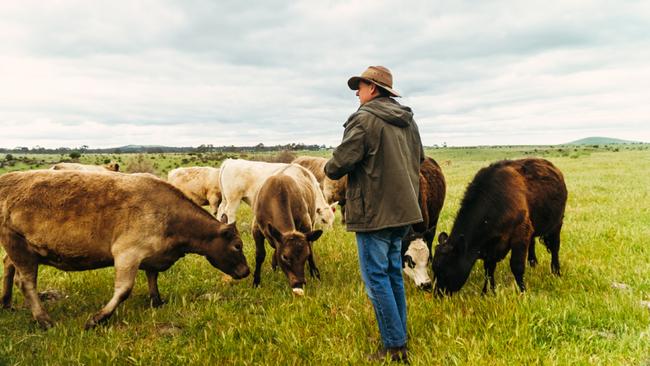
Rural and regional Australia is ‘the great beating centre’ pumping life into the nation
Editor of The Daily Telegraph Ben English says rural and regional Australia is “the great beating centre” that pumps life into the nation.
Mr English said the bush is the “dynamic and vital engine” that makes urban life possible.
“Too often, the bush is an afterthought of our urban dwelling politicians,” he said.
“Out of sight, out of mind, even as it sustains us.”
SA anglers question fishing industry priorities as popular species' numbers reviewed
By Sam Bradbrook
By Elsie Adamo
ABC South East SA
Topic: Recreational Fishing
King George whiting are one of the most popular fish among all fishers in South Australia. ( Supplied: Primary Industry SA )
A review of catch limits for four popular fish species in South Australia is currently underway.
Recfish SA says species it wanted reviewed were left out of the process, while those the commercial sector pushed were chosen for review.
What's next?
SA's primary industries minister says there's no date set for the review's completion.
South Australia's peak recreational fishing body says anglers are being unfairly blamed for dropping numbers of popular fish species.
Primary Industries and Regions SA (PIRSA) is reviewing the allocations for the commercial sector and bag and boat limits for recreational fishing for King George whiting, bream, garfish and sand crabs in the state's waters.
Recfish SA put forward a further six species it wanted reviewed, but they were left out of the process.
The species included yellowtail kingfish, tommy ruff, mullet, golden perch, mulloway and mud cockles (vongole).
Asher Dezsery says more scrutiny should be placed on commercial operators in SA's fishing industry. ( Supplied: RecFish SA )
Executive officer Asher Dezsery said Recfish SA was concerned about overfishing of those species by the commercial sector.
"It's really letting down the 360,000 South Australians [who are recreational fishers] that are really putting in hope that this process can make a difference to seafood sustainability," he said.
Mr Dezsery said PIRSA blamed a lack of recreational data on its decision not to review those species.
He said recreational fishers were being unfairly blamed for drops in fish stocks, while there was not enough scrutiny on the commercial sector.
"Recfish SA had fought hard to get yellowtail kingfish added because since 2021 commercial fishers have been netting the breeding aggregating schools in the northern [Spencer] gulf and sending them to market for as low as $6 a kilogram," he said.
Yellowtail kingfish are found in waters around Australia. ( ABC News: Chris Lewis )
"The recreational sector are travelling to regions like Port Augusta and spending thousands of dollars to catch and release these fish.
"While they're there they've got commercial fishers in front of them netting and killing them."
Conversations shouldn't 'get political'
Hugh Bayly has been a commercial marine scale fisher based in Coffin Bay, on the Eyre Peninsula, for five decades.
He was "deeply concerned" about overfishing of some species, including King George whiting.
Hugh Bayly says discussions over catch limits shouldn't be political. ( Supplied: Hugh Bayly )
"Of course, they [recreational fishers] have a right to catch the fish, but they need to play their part in stopping the overfishing," Mr Bayly said.
"The main thing we should be trying to achieve is to have the fish stocks rebuild … over time it will improve for everybody.
"It shouldn't have ever gotten to this point, but it has."
Garfish are regularly targeted off jetties and in shallow waters in South Australia. ( Supplied )
Mr Bayly agreed comprehensive statistics for recreational fishing were lacking and needed to be rectified, but "playing a game between different groups" was not helping.
"Fisheries management should not be political, it should be scientific," he said.
Fish at 'sustainable' levels
King George whiting and garfish, in particular, are two of the most popular fish species with recreational anglers in SA.
Port Macdonnell Offshore Angling Club and Game Fishing Club of South Australia president Tom Egan said the community believed in looking after fish stocks, but cutting boat and bag limits would be unfair.
Tom Egan says recreational fishers care about sustainability. ( ABC South East SA: Sam Bradbrook )
"I'd say 90 per cent of recreational fishers are more than willing to look after and consider the catch rates," he said.
"We all want to look after it ourselves because we all want our kids to enjoy what we're doing."
Primary Industries Minister Clare Scriven said the review committee was yet to decide what changes, if any, would come to catch limits for the four chosen species.
Clare Scriven says gathering recreational catch data is difficult. ( ABC Rural: Eliza Berlage )
"Nearly all of the species in South Australia are at sustainable levels," she said.
"There's a couple of exceptions and where there are exceptions management systems are already in place to deal with that.
"But it's not as though we're facing unsustainable levels in a number of species."
Ms Scriven said gathering recreational catch data was difficult, as it relied on officials surveying at boat ramps and over the phone.
ABC South East SA — local news in your inbox

IMAGES
VIDEO
COMMENTS
Mandoon Estate, Swan Valley. Australia's western province; Western Australia (WA), is a laid back state with huge expanses of untouched nature and quite a few good farmstays; even near Perth. In particular you'll have a choice between what some would regard as two of the best regions in Australia for rural tourism; Swan Valley & Margaret River.
Top 10 Places to Visit in Rural Australia Australia, known globally for its iconic metropolises and sun-kissed beaches, often overshadows the beauty and allure of its rural landscapes. However, it's within these less-trodden paths that the true spirit of the Land Down Under reveals itself. Stretching from rugged mountain ranges to the serenity of untouched beaches, rural Australia is the ...
Here are 20 of the best small towns in Australia for a vacation, including coastal getaways, countryside retreats, and Outback experiences.
Photograph: South Australian Tourism Commission What : Discover the rich Aboriginal heritage of South Australia's iconic riverway Where : Murray River (Millewa/Dhungala), South Australia
Rural tourism in Australia — has the gaze altered? Tracking rural images through film and tourism promotion May 2004 International Journal of Tourism Research 6 (3):125 - 135 May 2004
Australian Regional Tourism (ART) is the peak national body representing regional tourism practitioners. ART acts as a hub for collaboration, cooperation, ideas generation, knowledge sharing, networking and so much more.
The Rural Tourism Assessment in Roscommon County aims to strengthen rural tourism by capitalizing on stakeholder knowledge, input, and first-time visitor perspectives to the area.
In a report published by the CSIRO in 2018, it was estimated that agri-related tourism, including accommodation, transport and retail sectors in Australia, could reach around $18.6 billion by 2030.
Australian Traveller's 100 Awesome places in Australia Looking for somewhere new to escape on your next domestic Australian trip? From coastal retreats, to rural towns, and even alternative capital cities, we've scoured the country to bring you the very best destinations to linger longer - and ranked them.
Investment Fiji Chief Executive Kamal Chetty highlighted this while stressing the importance of integrating rural communities, bringing tourism to rural areas and creating income opportunities. He says there is a need for more partnerships to ensure that investments reach the rural areas and that they are the direct beneficiaries.
Rural tourism in Australia is primarily a domestic tourism activity, in many cases with over 90% of the visitors to non-urban areas being Australian, particularly in the southern states of Victoria, Tasmania and South Australia.
Abstract. Tourism is often seen as a panacea for the ills of declining rural communities. The paper argues that there is an element of blind optimism in this view although a shift of focus from production to consumption within advanced economies like Australia's will undoubtedly provide opportunities for the development of the leisure ...
MELBOURNE, Australia (AP) — Three Christian extremists would probably not have fatally shot two police officers and a bystander in an ambush on a rural Australian property and wounded a third officer two years ago if they had not shared the same psychiatric disorder, a coroner was told on Thursday. Brothers Gareth and Nathaniel Train and Gareth's wife, Stacey Train, were killed by police ...
10.3 Motivations for visiting particular rural regions 10.4 Chapter summary 11. Places visited by rural visitors 11.1 States and Territories visited by Australian travellers 11.2 Tourism regions visited by Australian rural travellers 11.3 Transport used by rural travellers 11.4 Accommodation used in rural regions 11.5 Chapter summary 12.
We find four primary attributes of rural tourism contributions to rural community development; economic, sociocultural, environmental, and leisure and educational, and 32 subattributes.
While the Kelly legend is influential in terms of Australian self-image, the images presented in the movies do not correlate with the tourism images of the time. Such dissonance creates confusion in visitors' perceptions and represents lost promotional opportunities possibly even having a negative effect on rural tourism.
Tourism is often seen as a panacea for the ills of declining rural communities. The paper argues that there is an element of blind optimism in this view although a shift of focus from production to consumption within advanced economies like Australia's will undoubtedly provide opportunities for the development of the leisure, recreation and tourism industries, both in metropolitan and rural ...
Rural Australia is pivotal to tourism, offering diverse landscapes and authentic experiences. From wildlife to outback adventures, these regions captivate visitors, boosting local economies.
There are thousands of incredible places to visit in Australia. Discover our top ten tourist destinations that you simply cannot miss.
While the Kelly legend is influential in terms of Australian self-image, the images presented in the movies do not correlate with the tourism images of the time. Such dissonance creates confusion in visitors' perceptions and represents lost promotional opportunities possibly even having a negative effect on rural tourism.
Team Tilma are fortunate to travel to many regional and rural communities throughout Australia, and are ALWAYS amazed at how much these communities and destinations have to offer. There are many practical actions regional and rural communities can take to attract more visitors and tempt visitors to stay longer and spend more money in local businesses. So if you are a community or council that ...
Rural tourism in Australia is primarily a domestic tourism activity, in many cases with over 90% of the visitors to non-urban areas being Australian, particularly in the southern states of ...
This collection is divided into five key themes: defining the 'rural' through tourism; rural tourism experiences; rural tourism in developing countries; collaboration and conflict in rural tourism; and, rural tourism and regional development.
Why Rural Tourism Is The Next Big Thing. Rural tourism is an important part of the tourism industry around the world. From walks in the Brecon Beacons, to climbing Mount Kilimanjaro to eco tourism in The Gambia, many destinations rely on their rural tourism provision to bring in much needed revenue for the local economy.
Abstract As the support of host communities is a precondition for a sustainable industry, regional social impact studies are a crucial input to tourism planning and decision-making. This study assessed the social impacts of tourism in a rural region of Australia where tourism is an important sector of the economy.
This research examined the push-motives driving domestic rural tourism amongst senior travellers. An understanding of this is essential to stimulate rural tourism and to redistribute visitors from high volume destinations to other locations. Applying the push-pull framework, an online survey of Australians aged over 50 was conducted.
Rural tourism has been a key research area over the last few decades. However, evaluating the advancement of its dimensions as a systematic and comprehensive audit was long overdue. This study perf...
Country parents in Western Australia face limited options once their children finish primary school. Regional towns still feel the impacts almost a decade after year 7 classes were transitioned ...
Editor of The Daily Telegraph Ben English says rural and regional Australia is "the great beating centre" that pumps life into the nation. Mr English said the bush is the "dynamic and vital ...
South Australia's peak recreational fishing body says anglers are being unfairly blamed for dropping numbers of popular fish species. Primary Industries and Regions SA (PIRSA) is reviewing the ...